


Issue 8 September 2018 ROAD - RAIL - AIRPORT - PORT - URBAN - UTILITY
DESIGN PHILOSOPHY OF THE MODERN TUNNEL
THE LOGISTICS OF AUSTRALIA’S BLUE HIGHWAY The technologies DISRUPTING ASSET MANAGEMENT
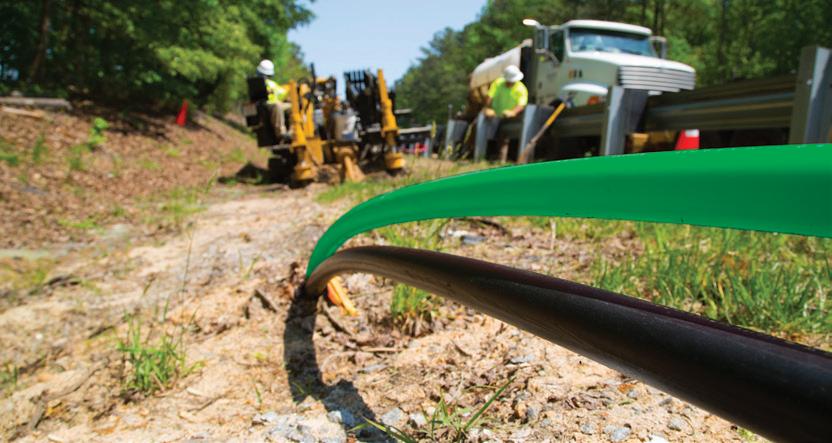

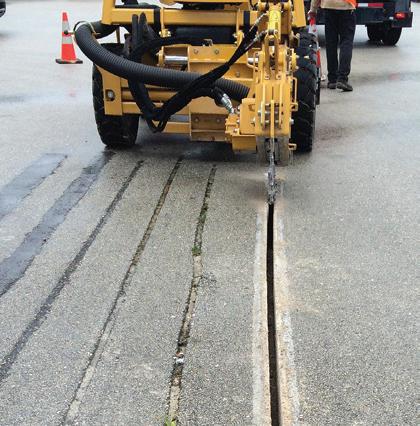




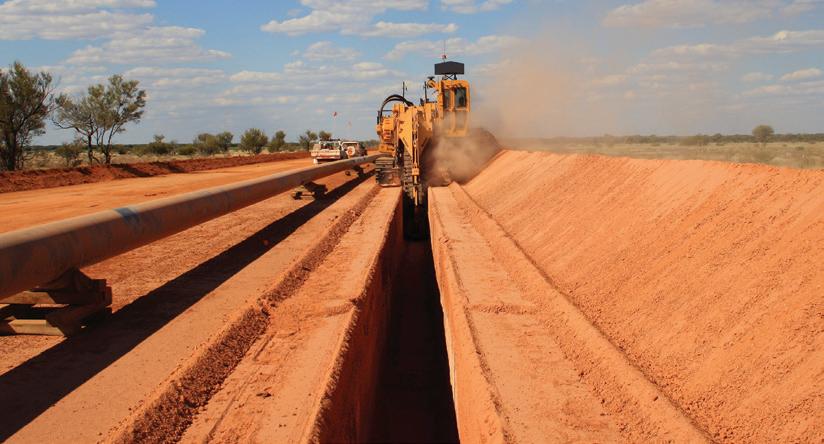








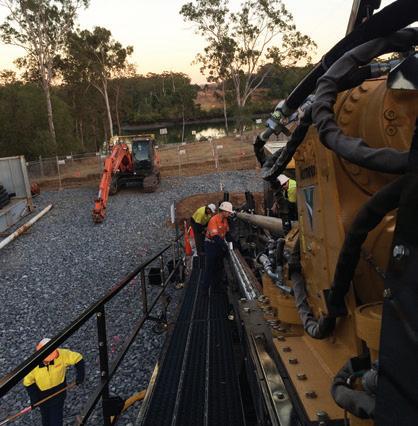
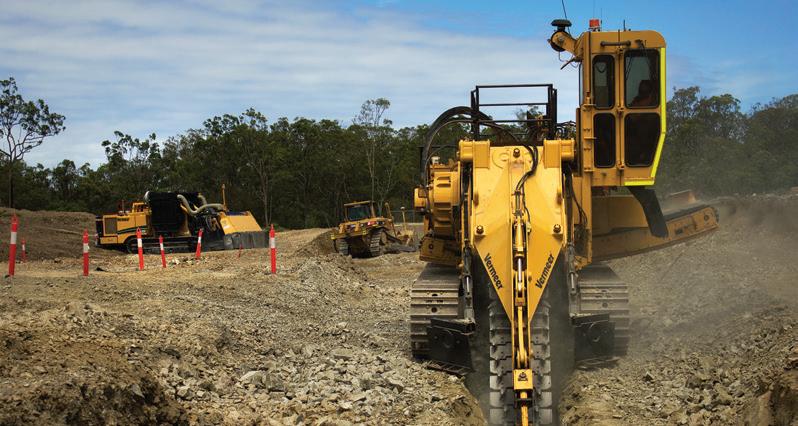

ROAD RAIL TUNNEL UTILITY VERMEER Vermeer and the Vermeer logo are trademarks of Vermeer Manufacturing Company in the United States and / or other countries. © 2018 Vermeer Australia. All Rights Reserved. CONSTRUCTION EQUIPMENT SOLUTIONS FOR AUSTRALIA’S INFRASTRUCTURE INDUSTRY / VermeerAustralia VERMEER.COM.AU | 1300 VERMEER
AS AUSTRALIAN INFRASTRUCTURE PROGRESSES, WE’RE PROUD TO PARTNER WITH THE CONTRACTORS THAT ARE LEADING THE WAY FORWARD.


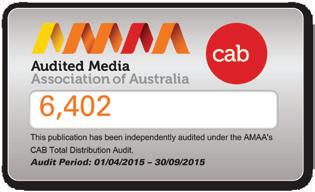
8,313
ABN: 36 426 734 954 PO Box 1763
Preston South VIC 3072
P: (03) 9988 4950
F: (03) 8456 6720
monkeymedia.com.au info@monkeymedia.com.au infrastructuremagazine.com.au news@infrastructuremagazine.com.au
Editor Jessica Dickers
Associate Editors
Lauren Cella
Charlotte Pordage
Journalists
Elisa Iannunzio
Lauren Butler
Digital Marketing Manager
Sam Penny
Business Development Manager
Rima Munafo
Marketing Assistant
Helena Brace
Production Coordinator
Erin Foster
Senior Designer
Alejandro Molano
Designer
Aileen Ng
Publisher Chris Bland
Managing Editor
Laura Harvey ISSN:
EDITOR’S WELCOME
As of Tuesday 7 August at around 11pm, Australia’s population ticked over 25 million, according to the Australian Bureau of Statistics’ Population Clock. This milestone has people concerned that if the population keeps increasing this rapidly, infrastructure in major cities won’t be able to cope.
The need to take a closer look at how we plan, deliver and use infrastructure across the country to deal with this increased pressure has already been discussed at length over the last few years. Now the emphasis needs to be placed on more integrated infrastructure planning, in particular for our transport infrastructure, and using the technologies that we have available to start overhauling current and future infrastructure.
Smart cities, intelligent transport systems (ITS), information and communication technology – we now have the ability to connect and enable communication across assets to give us incredible volumes of data. This has the potential to fundamentally change the way infrastructure is planned, designed and built.
An increasing population will only add to the congestion on our cities’ roads, but ITS infrastructure, and the uptake of driverless and electric vehicles, could help to minimise this. Intelligent installations, from variable speed limit and electronic message signs, to CCTV cameras and vehicle detection loops, all increase communication to drivers, helping them make more informed decisions.
If, or when, driverless vehicles become a common sight on our roads, they could dramatically reduce congestion by having less cars on the roads. Their uptake could also change the requirements for road infrastructure, including the implementation of

charging infrastructure. There is also talk of hydrogen fuel cell vehicles potentially improving the heavy vehicles and freight sector.
Technologies could even be implemented to change the way Australians pay for roads by assessing exactly which roads people use and how often.
This issue of Infrastructure looks at the current and future possibilities for ITS and other technologies, including robotics, to get a better understanding on their impacts across all infrastructure, from roads, to energy and freight.
While some of these might be a long way off, integrating current technologies into our infrastructure and making data-based planning decisions is needed to help the infrastructure sector better prepare for future challenges like population growth.
While politicians like to make big announcements and promises to build flashy projects, there’s a lot of improvements to current infrastructure that, while they might not be as exciting, could have even bigger impacts on the way Australians move around and where they choose to live.
If these new technologies are implemented now, they can support our current aging infrastructure, and help to better plan for a future where Australia’s population is even higher.
Jessica Dickers Editor
I’m keen to hear your thoughts and
feedback on Infrastructure. Drop me a line at jessica.dickers@monkeymedia.net.au or feel free to call me on 03 9988 4950 to let me know what you think.
Published by Monkey Media Enterprises
2206-7906
1 October 2017 - 31 March 2018 Issue 8 September 2018 ROAD RAIL AIRPORT PORT URBAN UTILITY THE LOGISTICS OF AUSTRALIA’S BLUE HIGHWAY The technologies DISRUPTING ASSET MANAGEMENT DESIGN PHILOSOPHY OF THE MODERN TUNNEL



















650 + ATTENDEES
80 + EXHIBITION BOOTHS
60 + SPEAKERS





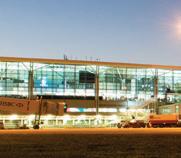

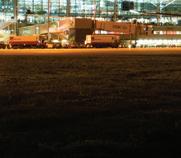







REGISTER, PARTNER AND EXHIBIT
LARGEST AIRPORT EVENT IN AUSTRALIA events@airports.asn.au • +61 02 6230 1110 • airportsconference.asn.au BRISBANE 18 AUSTRALIAN
NATIONAL CONFERENCE
AMPLIFY YOUR BRAND AT THE
AIRPORTS ASSOCIATION
13-16 NOV
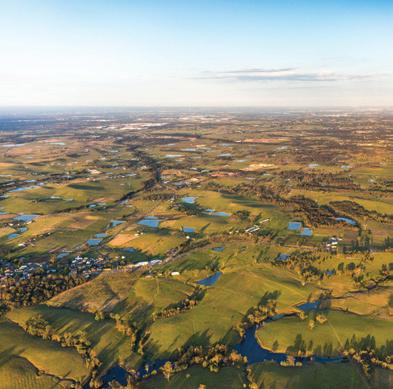


INDUSTRY INSIGHT
ADDRESSING INFRASTRUCTURE GAPS THROUGH REFORM
SUSTAINABLE MATERIALS IN ROAD CONSTRUCTION
INVESTMENT
STRENGTHENING THE COMMONWEALTH AS AN INFRASTRUCTURE PARTNER
CRANES AND HEAVY LIFTING
THE FUTURE OF ROBOTICS IN INFRASTRUCTURE
TUNNEL VISION
ROBUST TUNNELLING WATER TREATMENT AND SOLIDS DEWATERING
ASSET MANAGEMENT
JOIN INFRASTRUCTURE EXPERTS AT ASSET MANAGEMENT FOR CRITICAL INFRASTRUCTURE
RUGGED TABLETS SMOOTHING OUT ROAD IMPROVEMENT
CONCRETE AND CULVERTS
WHERE HAVE ALL THE CONCRETE EXPERTS GONE?
INTELLIGENT TRANSPORT SYSTEMS (ITS)
IS AUSTRALIAN INFRASTRUCTURE FUTURE READY? CAN FREIGHT SAVE THE LUCKY
INTELLIGENT INSTALLATIONS - THE
4 September 2018 // ISSUE 8 www.infrastructuremagazine.com.au CONTENTS
PROJECTS MOBILITY AS A SERVICE IN AUSTRALIA: CUSTOMER INSIGHTS AND OPPORTUNITIES
FOR
ROADS
DRIVING AUTOMATED AND ZERO EMISSIONS VEHICLES 60 62 PORTS FREIGHT AND LOGISTICS
PORT OF NEWCASTLE: A GLOBAL GATEWAY FOR REGIONAL AUSTRALIA 56 18 20 24 28 30 32 34 38 46 50 52 42 TUNNELS
IMPACT
VICTORIAN
EVIDENCE
COUNTRY?



SAFETY AND RISK MANAGEMENT
SAFETY IN ACTION
OVERHAULING CONSTRUCTION SAFETY CULTURE
REDUCING DOWNTIME WITH GPS AND 3D MACHINE CONTROL
ENERGY INFRASTRUCTURE
SELECTING THE RIGHT FOUNDATION FOR GROUND-MOUNTED PV PANELS
THE ENERGY TECHNOLOGY THAT COULD OVERHAUL TRAM SYSTEMS
LET'S GET CONNECTED - IMPLEMENTATION OF THE CIVIL SKILLS CADETSHIP (CSC) PROGRAM
ACCELERATING SUSTAINABILITY THROUGH INFRASTRUCTURE
08 NEW GUIDELINES FOR INFRASTRUCTURE DECISION-MAKING
SYDNEY BRIDGE DESIGN RELEASED 10 NT GOVERNMENT RELEASES STRATEGIC PLAN FOR INFRASTRUCTURE 11 NORTHERN ROAD CONTRACT AWARDED TO SUPPORT WESTERN SYDNEY AIRPORT
MELBOURNE AIRPORT RAIL LINK SET TO GO AHEAD
CONTRACTS AWARDED FOR INLAND RAIL PROJECT 16 IS TAMWORTH THE HOME OF ‘COUNTRY ROADS’?
5 www.infrastructuremagazine.com.au September 2018 // ISSUE 8 CONTENTS
REGULARS 02
06 CONTRIBUTORS 80
NEWS 76 78
SKILLS AND TRAINING EVENTS 72 74 64 66 70
EDITOR’S WELCOME
ADVERTISERS’ INDEX 80 FEATURES SCHEDULE
08
12
14

Leilani Frew
CEO, Infrastructure and Project Financing Agency
Leilani Frew was appointed as the inaugural CEO of the Commonwealth Government’s Infrastructure and Project Financing Agency (IPFA) in 2017. IPFA is an executive agency that works with the Commonwealth, states and territories, as well as private sector stakeholders and provides independent commercial and financial advice to support the Australian Government’s infrastructure investment decisions. With a career spanning over 25 years, Leilani is a respected and experienced infrastructure finance and advisory professional having held a number of leadership positions in both the private and public sectors. Prior to joining IPFA, Leilani spent nearly five years leading NSW Treasury teams in the provision of commercial and financial advice to the NSW Government and its agencies delivering on the government’s major infrastructure and services commissioning priorities, and serving on a number of government advisory boards and committees. Her contribution to the infrastructure industry was recognised by her peers in 2015 when she received the Women's Achievement in Infrastructure Award from Infrastructure Partnerships Australia.
Mike Gallacher
CEO, Ports Australia
Following an intensive and varied 16 year career as a Police Officer, Mike Gallacher was appointed to the NSW Legislative Council in 1996. He has been the Shadow Minister for a variety of portfolios including Ports, Industrial Relations, Transport and Police. Winning government in 2011, Mike was appointed Minister for Police and Emergency Services, Minister for the Hunter, and later the further role of Minister for Industrial Relations. Mike is widely recognised for his robust approach to policy development and his preparedness to strongly advocate the need for reform. As Minister he led on behalf of government the public debate on issues such as measures to reduce alcohol related violence, rampant gang/gun related crime and introduced initiatives to change driver behaviour. Leaving Parliament in 2017, he has now taken the role as CEO of Ports Australia, the peak industry body for the ports industry.

Ed Taylor

President, Australasian Tunnelling Society (ATS)
Ed is a Chartered Professional Engineer, a Fellow of the Institution of Engineers, Australia, and is currently the President of the Australasian Tunnelling Society and Engineering Manager, Tunnelling at John Holland. His tunnelling experience commenced in Melbourne’s sewer and water construction boom of the early 1970s during the innovative period of hard rock TBM development. This experience lead to a period on the Thomson Dam tunnel works in the early 1980s and then to the Melbourne City Link Road Project, the first in Australia utilising large road headers. This was the first of four major road tunnels where he was employed in engineering management roles for the contractor. Other notable recent projects include Downtown Line Contract 935, Singapore and North West Rail Link, Sydney. He is currently working on the Melbourne Metro project. Ed’s experience on various infrastructure tunnels has enabled him to develop a unique range of technical competencies for which he is well renowned. Over the years he has fine-tuned the balance between the technical requirements of large civil infrastructure projects and the practical needs of construction requirements.
6 Contri
butors
 David Millar CEO, Concrete Institute of Australia
David Millar CEO, Concrete Institute of Australia
As a civil engineering graduate from the University of Sydney, David began his career in the concrete aggregates industry before expanding into precast concrete, construction chemicals and concrete materials. With a great appreciation of what industry and professional associations can provide to the concrete industry, David has been, and still is, an active member on a number of concrete related committees as a volunteer. He was also the Executive Director of the Concrete Pipe Association of Australasia from 2005 to 2013 before commencing his current role with the Concrete Institute of Australia in 2014. David’s 25+ years in the construction industry has revolved entirely around concrete, and through this experience he understands the importance this most traditional, but ever evolving, material has on society and the environment.
Anna Chau
Acting Chief Executive, Infrastructure Australia
Anna leads the ongoing development of the national Infrastructure Priority List (IPL) and the assessment of project business case submissions which are considered by the IA Board for the IPL. She is a leading applied economist in infrastructure with 27 years’ professional experience, specialising in transport economics. Anna was previously Chief Economist at AECOM Australia and led AECOM’s national Economics team. Her previous positions include Principal at Booz & Company, Executive Director of EY’s Economics team in Sydney, and Senior Manager in the business development group at a major train operating company in the UK. She has led numerous cost-benefit analyses and business cases, as both a practitioner and a reviewer, in a range of infrastructure sectors, including transport, water and waste, energy, law enforcement, justice, IT and the environment. Her contribution to the transport sector was recognised in 2017 when she was shortlisted as a finalist for the Professional Woman in Logistics and Transport Award by the Chartered Institute of Logistics and Transport Australia (CILTA).


Dr Roberto Perez-Franco
Senior Research Fellow – Supply Chain Strategy, Deakin University
Roberto Perez-Franco is a Senior Research Fellow in Supply Chain Strategy at the Centre for Supply Chain and Logistics (CSCL) at Deakin University where he leads the Supply Chain Strategy Lab, a research initiative dedicated to exploring the long-term, big-picture issues concerning supply chains. Last year, Roberto served as Principal Researcher of the scenario planning project conducted by CSCL for the Department of Infrastructure and Regional Development, to inform Australia’s national inquiry into freight and supply chain priorities, which will inform the National Freight and Supply Chain Strategy to be released early next year.
Before joining Deakin, Roberto spent almost 12 years at the Massachusetts Institute of Technology (MIT), first as a masters and doctoral student, and then as Research Associate at the Centre for Transportation and Logistics (CTL). There he was a member of the core team that conducted the Future Freight Flows project for the United States Government.
7
NEW GUIDELINES FOR INFRASTRUCTURE DECISION-MAKING

Infrastructure Australia has released new guidelines to drive greater accountability and transparency in infrastructure decision-making.
The guidelines aim to reduce instances of major projects receiving funding before appropriate planning and assessment.
Developed by Infrastructure Australia out of a recommendation in the 2016 Australian Infrastructure Plan, the Infrastructure Decision-making Principles are designed to ensure major public infrastructure investments deliver the best outcomes for the community and the best value for taxpayers.
Former Infrastructure Australia Chief Executive, Philip Davies, said the Australian Infrastructure Plan acknowledged that Australia’s governments and the community would benefit from a set of clear principles to
provide a benchmark for high-quality infrastructure decision-making.
“While the Infrastructure Priority List has helped create a credible pipeline of future infrastructure investments, too often we are still seeing instances of projects being committed to before a business case has been prepared, a full set of options have been considered, and rigorous analysis of a potential project’s benefits and costs has been undertaken,” Mr Davies said.
“Ultimately, we want to ensure that community needs are properly understood, all options considered and communities consulted before projects are committed. This should include making better use of existing infrastructure by deploying new technologies or utilising the data we’re already collecting.”
Mr Davies said the Infrastructure Decision-making Principles should act as a guide for Australia’s governments, establishing clear lines of responsibility and accountability for major infrastructure projects, and providing the broader community with a clear set of expectations with which to hold decision-makers to account.
“We want to see Australia’s governments do more to engage with communities, both in communicating long-term infrastructure plans, problem identification and by incorporating community input in a meaningful way into the project development processes.
“Part of this involves being more transparent around project decisionmaking by publicly releasing the analysis and processes that form the basis of funding decisions.
“Many of these principles are already embedded in Infrastructure Australia’s broader approach to providing infrastructure advice, as well as our Assessment Framework, which guides the assessment of nationally significant infrastructure priorities and provides advice to project proponents in preparing their submissions.
“The scale of investment in major projects and the long life of most infrastructure assets warrants rigorous decision-making processes.
“Our hope is that Australia’s governments embrace these Infrastructure Decision-making Principles and give the community added confidence that decisions on public infrastructure projects are robust, transparent and accountable,” Mr Davies said.
SYDNEY BRIDGE DESIGN RELEASED
The New South Wales Government has released a detailed design for the Western Harbour Tunnel and Beaches Link, taking pressure off other major bridges in Sydney.
The Western Harbour Tunnel will create a western bypass of the CBD, taking pressure off the Sydney Harbour Bridge, Anzac Bridge and Western Distributor. It will also cut a journey from Olympic Park to North Sydney by 13 minutes, or more than two hours per week.
The Beaches Link will, for the first time, provide a motorway link between the Northern Beaches and the rest of Sydney. It will also reduce the travel time from Brookvale to the CBD by 27 minutes and slash a trip from Dee Why to the airport by 41 minutes.
NSW Premier, Gladys Berejiklian, said since announcing a preferred route last year, the NSW Government has listened to the community and massively improved the locations for the ventilation outlets, reduced the number of properties to be acquired to 37 and sought to minimise construction impacts.
“We know the Western Harbour Tunnel and Beaches Link are important projects that will benefit the wider road network,” Ms Berejiklian said.
“We also know this has been promised over many decades, but only the NSW Liberals and Nationals will deliver it because
the strong economic management of this government means these vital road connections are finally becoming a reality."
Minister for Roads, Maritime and Freight, Melinda Pavey, said the NSW Government had committed $550 million to the projects in the recent Budget. The final cost will be determined when a final design and financing options from the private sector have been finalised.
The detailed design for the Western Harbour Tunnel and Beaches Link will now be subject to extensive community consultation until November, with feedback to be taken on board to refine the design, ahead of the planning assessment phase.
Early works on the projects, expected to start in late 2018, include initial work around the Warringah Freeway and initial work to allow the Western Harbour Tunnel to connect to the Rozelle Interchange.
Subject to planning approvals and finalised financing and procurement, major construction is due to begin in 2020 with the tunnels expected to open to traffic by 2026.
The Western Harbour Tunnel and Beaches Link are part of the NSW Government’s record investment in both public transport and roads, including Sydney Metro Northwest, Sydney Metro City and Southwest, Sydney Metro West, WestConnex and NorthConnex.
September 2018 // ISSUE 8 www.infrastructuremagazine.com.au 8 NEWS
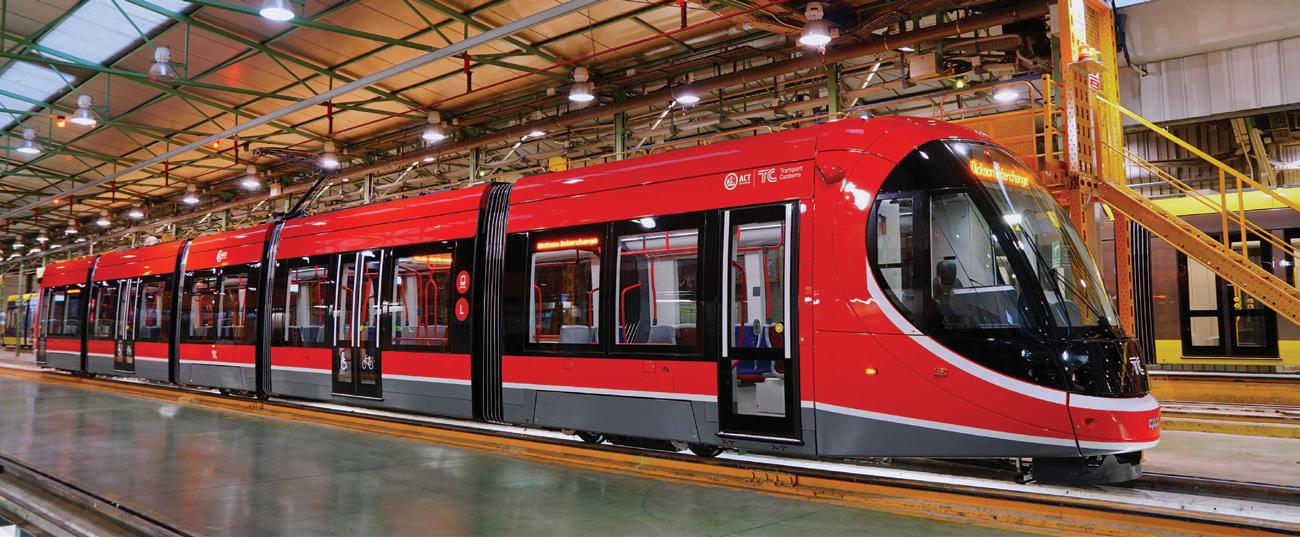
TO EXPECT BESIDES 2 DAYS OF
ARE
YOU
AN ARA MEMBER?
ARA Members receive a 20% discount on conference attendance, sponsorship and exhibition bookings.
YOUNG RAIL PROFESSIONALS – AUSRAIL SHINES A SPOTLIGHT ON TOMORROW’S LEADERS
• Next Generation Scholarship – Entries NOW OPEN! (Available to sponsor)
• Young Rail Professionals Pitching Competition – Finalists to be announced in August (Available to sponsor)
• NEW FOR 2018 – Mentor rate discount available for those 30 years and under (conditions apply)
Visit www.ausrail.com
To sponsor a function, innovative package, exhibit, advertise within the Official Event Guide and much, much more, please contact Deborah Bocock, email: Deborah.Bocock@informa.com.au
THE LARGEST RAIL EVENT IN AUSTRALASIA RETURNS TO THE NATION’S CAPITAL
WHAT
INDUSTRY ENGAGEMENT
Rail – For a Better Future PREMIUM PLATINUM & GALA DINNER SPONSOR PREMIUM GOLD & HERO IMAGE SPONSOR LANYARD SPONSOR EXHIBITION NETWORKING DRINKS SPONSOR APP SPONSOR
70 0+ CONFERENCE AT TENDEES 120+ EXHIBITING ORGANISATION S 4 SOCIAL FUNCTIONS 1 ULTIMATE RAIL NE TWORKING EXPERIENCE SPONSORSHIP
EXHIBITION OPPORTUNITIES
Photo courtesy of CAF
AND
NT GOVERNMENT RELEASES STRATEGIC PLAN FOR INFRASTRUCTURE

The Northern Territory Department of Infrastructure, Planning and Logistics is focused on driving sustainable, economic and social advancement of the Territory through strategic land use and transport planning, infrastructure investment, building regulation and effective logistic supply chains, its 2018-2021 strategic plan has revealed.
The plan will direct the department over the next three years. It aligns with the NT Government’s strategic themes of investing in the bush, trust, putting children at the heart of government, jobs and the economy, and safer and vibrant communities.
The strategic plan is informed by both The Economic Development Framework and the 10 Year Infrastructure Plan. Strategic objectives include:
Long-term planning – Long-term planning that integrates community needs and industry best practice
♦ Provide a more transparent and planned approach to land and planning policy in the NT
♦ Deliver government’s vision for planning across the Territory
♦ Deliver and support Darwin and Alice Springs CBD revitalisation
♦ Deliver the Territory Wide Logistics Master Plan
♦ Implement the Northern Territory Road Safety Action Plan – Towards Zero
♦ Plan for Weddell and Cox Peninsula in partnership with land owners
Infrastructure Delivery – Deliver the Territory’s Infrastructure Program and maintain its Infrastructure Portfolio
♦ Plan and maintain the Territory’s infrastructure portfolio including delivery of government’s extensive infrastructure program ensuring a rolling pipeline of works
♦ Promote government’s infrastructure priorities and achievements as outlined in the 10 Year Infrastructure Plan
♦ Deliver improvements to transport infrastructure including roads, bridges, barge landings and aerodromes
♦ Support the development and implementation of government’s Aboriginal Contracting Framework
♦ Create a safer, more productive contractor environment by ensuring compliance with safety standards and requirements
Quality Services – Deliver innovative, well regulated, safe and sustainable services
♦ Implement contemporary regulatory frameworks that support innovation and efficiency, reduce red tape and deliver safe outcomes. This includes a review of building regulatory framework, progression towards swimming pool safety reform and progression towards planning reform
♦ Improved service delivery and increased online service options at Motor Vehicle Registries
♦ Develop and deliver a regulatory model to facilitate ridesharing in the Northern Territory
♦ Develop policy options which support autonomous and electric vehicles in the NT
Contemporary Organisation – Create an organisation with the values, capacity and capability to deliver effective services
♦ Create workplaces that foster innovation and promote excellence, underpinned by a culture of collaboration
♦ Ensure our worksites and working arrangements prioritise the health and safety of staff, where risks are identified and effectively managed
♦ Develop programs to recruit and retain quality staff, develop leadership and workforce capability, including a focus on Aboriginal employment
♦ Explore and develop new ways of doing business that create efficiencies in our operations and enable agile responses to changes in our environment
September 2018 // Issue 8 www.infrastructuremagazine.com.au 10 NEWS
NORTHERN ROAD CONTRACT AWARDED TO SUPPORT WESTERN SYDNEY AIRPORT
Major progress is being made on the construction of The Northern Road in Western Sydney, with the bridge at the M4 Motorway interchange now being built.
Federal Minister for Urban Infrastructure and Cities, Paul Fletcher, said the upgrade was part of the $3.6 billion Western Sydney Infrastructure Plan, delivering new and upgraded roads in preparation for the new Western Sydney Airport.
“The Turnbull Government is committed to ensuring that Western Sydney will capitalise on the huge economic benefits that will flow from our $5.3 billion commitment to build Western Sydney Airport. This is possible because of a stronger economy,” Mr Fletcher said.
“Together with the Berejiklian Government, we’ve signed the Western Sydney City Deal with eight Western Sydney Councils, setting out a clear plan to attract business and generate jobs for the region, and along with our commitment to have the new airport connected to rail when it opens, we are delivering the transport and jobs that Western Sydney needs to thrive.”
“Infrastructure is about more than bridges, roads and airports, it is an opportunity to build stronger communities by connecting people to jobs closer to home,” Mr Ayres said.
“Crews are installing 40 of these massive 32m long super-T girders using a 600-tonne crane, with the new bridge to be complete by early next year.”
Senator for Western Sydney, Marise Payne, said there was major progress being made on The Northern Road upgrade Stage 3 between Glenmore Parkway at Glenmore Park and Jamison Road at South Penrith, with start of work on the new bridge at the M4 Motorway interchange a significant milestone for the project.

NSW Minister for Western Sydney and Member for Penrith, Stuart Ayres, said the Northern Road upgrade is part of a huge investment in Western Sydney roads, jointly funded by the Australian and NSW Governments.
“This new upgrade is a real win for Western Sydney motorists, particularly for residents in Glenmore Park and Penrith who use the M4. Delivery of this project will mean more time with your family and less time spent on the road,”
Ms Payne said.
While work is carried out, the M4 Motorway will be closed between 10pm and 8am between the M4 Motorway entry and exit ramps to The Northern Road to allow work to be carried out safely.
The Australian Government has committed $1.2 billion to the $1.6 billion Northern Road Upgrade with the New South Wales Government funding the remainder.

www.infrastructuremagazine.com.au September 2018 // Issue 8 11 NEWS
MELBOURNE AIRPORT RAIL LINK SET TO GO AHEAD

Major work will commence on the Melbourne Airport Rail Link under a re-elected Andrews Labor Government, with the State Government providing up to $5 billion towards the construction of the much anticipated project, matching the commitment of the Federal Government.
A route options assessment undertaken by Transport for Victoria has shown that of the four routes considered, the Sunshine alignment – previously known as the Albion East alignment – is the Victorian Government’s preferred route for the project.
The Sunshine Route will see trains travel to the airport from the CBD via a new Sunshine Super Hub, which will connect regional and metro train lines –including the Metro Tunnel – to the new airport link.
This new transport hub will also pave the way for fast regional rail services
from Geelong and Ballarat, connected to Melbourne Airport, via just one change.
From Sunshine, trains will head north utilising both the Albion East rail reserve and sections of tunnel to protect homes and businesses, before connecting in to Melbourne Airport.
The rigorous new analysis produced as part of initial work on the Airport Rail Link Business Case shows that the Sunshine Route rated 4.3 out of five overall in the comparative analysis of routes, with a total cost in the range of $8-13 billion.
Funding under a re-elected Andrews Labor Government will match funding from the Commonwealth, while private sector contributions will also play a part in the delivery of the project.
The Federal Government was briefed on the outcome of the route options assessment in early July 2018 and work is underway on the full business case which will be completed by Rail Projects Victoria in 2019.
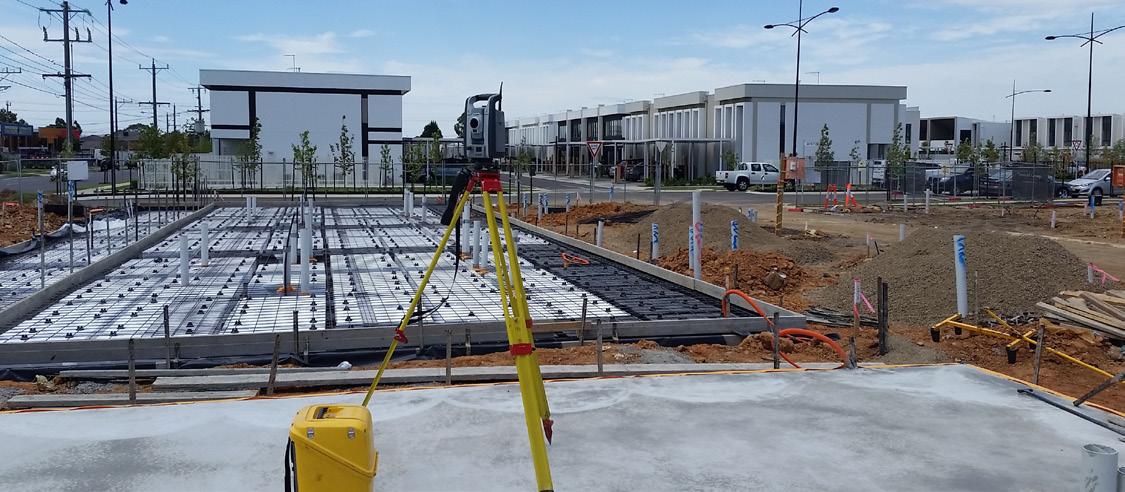
Mobile Laser Scanning
• Terrestrial Laser Scanning
• 3D Modelling and BIM
• Drone mapping
• Z boat hydrographic surveys
• Virtual and Augmented Reality Solutions
• TIMMS (Trimble Indoor Mobile Mapping System) preliminary development estimates
• servicing advice on master planning
• roads, earthworks, drainage, sewer and water main design
• water quality modelling
• site and environmental management plans www.taylorsds.com.au
• construction surveillance, field audits
Melbourne | Brisbane | Perth | Christchurch | Jakarta NEWS September 2018 // ISSUE 8 www.infrastructuremagazine.com.au 12
GEARING UP FOR THE STATE’S LARGEST MAJOR PROJECTS CONFERENCE
The 10th Annual NSW Major Projects Conference will be returning on the 21st & 22nd November 2018 at the International Convention Centre in Sydney.
Attracting upwards of 250 delegates annually, this two-day event continues to be the state’s largest major projects and infrastructure conference. Over the course of the event, attendees will have the opportunity to cultivate industry connections through key networking events.
With over 20 expert speakers and government policy makers discussing major infrastructure projects, attending delegates will be provided with a glimpse at key updates and best practice solutions for future projects.
Chief Executive Officer of Infrastructure NSW, Jim Betts, will present on the future of NSW’s infrastructure and its impression on the states expected $1.3 trillion economy.
In a complementary presentation, Kiersten Fishburn, Chief Executive Officer of Liverpool City Council will explore the influence of the impending Western Sydney Airport on the Liverpool area.
Touching on some of the state’s largest infrastructure projects to date, the 10th Annual NSW Major Projects Conference is guaranteed to be a must-attend event.
www.nswconference.com.au
SYDNEY INTERNATIONAL CONVENTION CENTRE
NOVEMBER 21 - 22
CONTRACTS AWARDED FOR INLAND RAIL PROJECT
The Australian Rail Track Corporation (ARTC) has appointed its first preferred construction contractor and awarded contracts for the Inland Rail project.
INLink is the preferred construction contractor for the Parkes to Narromine section of Inland Rail. Calvani Crushing and Ausrock Quarries have also been awarded contracts for ballast and capping work on the project.
The appointment allows INLink, a joint venture with BMD Constructions and Fulton Hogan, to begin preparing for the start of construction for Inland Rail later this year.
Inland Rail CEO, Richard Wankmuller, said INLink would be scoping out suppliers in the market with many opportunities for regional companies and local businesses.
“With early works on Inland Rail now well under way, residents and local businesses will increasingly see the flow on benefits, including jobs and new investment opportunities.
“INLink will be putting together their environmental management plans and applying for their Environment Protection Licence to lay the foundations for major construction,” Mr Wankmuller said.
The economic benefits of Inland Rail continue to flow with up to 16 new jobs created in the Parkes region, as two local companies, Calvani Crushing and Ausrock Quarries, work to supply about $7 million in ballast and capping for the project’s first stage in NSW.
Calvani Crushing has been awarded a $4.8 million contract to supply more than 150,000 tonnes of ballast and 75,000 tonnes of capping; while Ausrock Quarries has been awarded a $2.1 million contract to supply more than 45,000 tonnes

of ballast and 45,000 tonnes of capping. This product will be delivered over the next 12 – 18 months.
Mr Wankmuller said the first track for Inland Rail will be laid later this year between Parkes and Narromine, and there is now a steady stream of supply contracts bringing jobs and opportunities to various parts of Australia.
“Inland Rail is securing jobs in regional Australia and our cities. We now have ballast and capping supplied from Parkes, concrete sleepers from Mittagong, steel track from Whyalla; and there are many other significant contracts to be awarded,” Mr Wankmuller said.
“This is just the beginning job-wise. Inland Rail is gathering momentum each day and is delivering on its great potential. It’s expected to deliver 16,000 new jobs at peak construction, and an average of 700 additional jobs a year over the entire program.”
About 3.6 million tonnes of ballast and 3.4 million tonnes of capping will be required for the 1,700km length of Inland Rail, which will provide further opportunities for quarries in regional areas along the rail alignment.
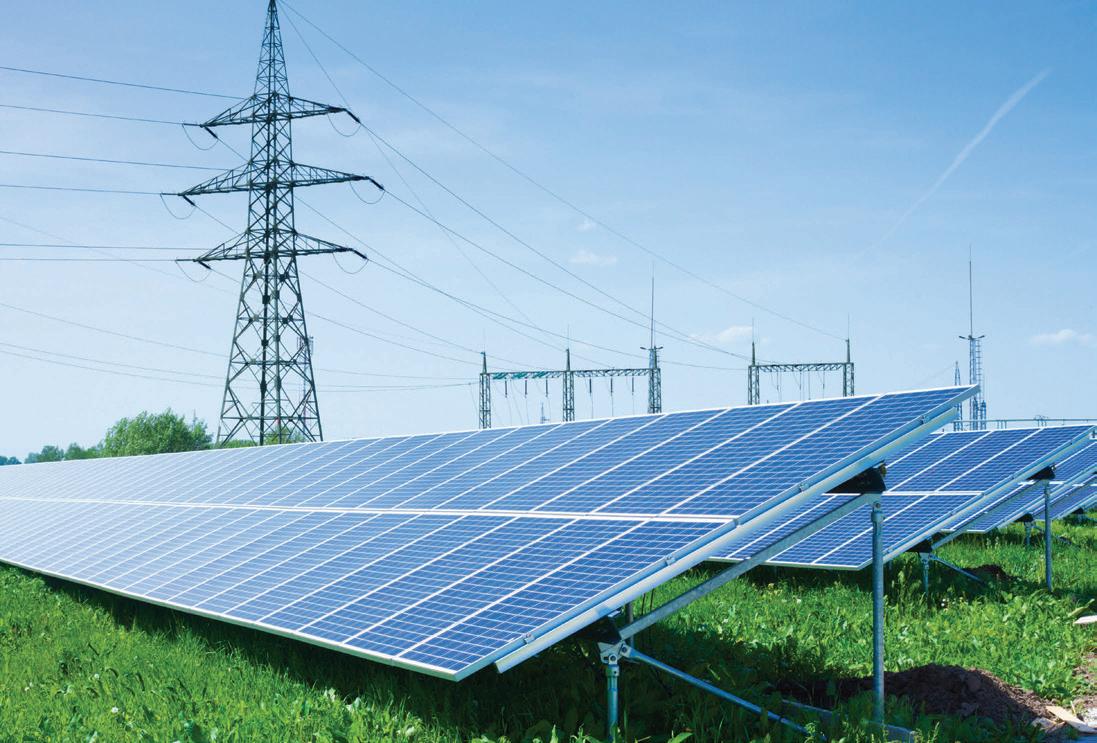
September 2018 // Issue 8 www.infrastructuremagazine.com.au 14 Unified Critical Communications for the Utilities sector www.simocowirelesssolutions.com inquiry.aus@simocowirelesssolutions.com Tel: +61 1300 363 697 NEWS
new digital magazine from Infrastructure
Your look at the biggest issues in the rail sector, from in-depth expert features, to news, events, and a round up of exactly what the industry is talking about.
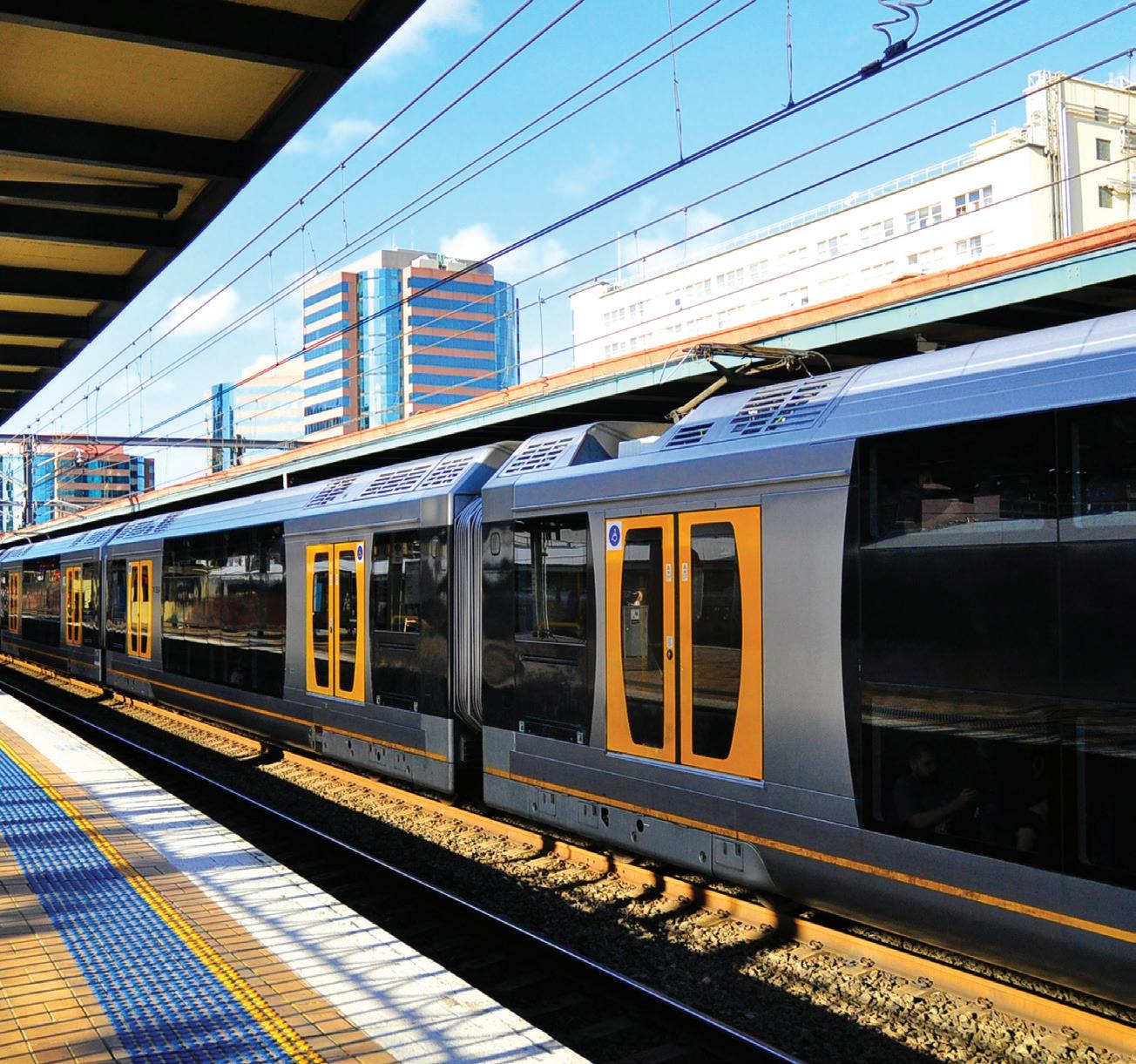

Subscribe today at infrastructuremagazine.com.au/railmonthly
RAIL MONTHLY A
Introducing
IS TAMWORTH THE HOME OF ‘COUNTRY ROADS’?
When the Centre for Pavement Engineering Education (CPEE) recently staged a training course in Tamworth, much of the information presented was “music to the ears” of the delegates wishing to learn how to better manage their road network.
With Australia having over 800,000km of roads, it was a surprise for the delegates to learn that two thirds of them are unsealed, and that it takes quite a different engineering mindset to maintain this network compared to a sealed road network.
For a sealed pavement, it is the impact of commercial vehicles that eats into the pavement life, and the impact of cars and light vehicles can largely be ignored.
Unsealed roads fail through surface wear, most significantly when the ‘sheeting layer’ slowly disappears in a cloud of dust — and a chorus of complaints. In these situations, the damaging effect of cars is just as important as trucks.
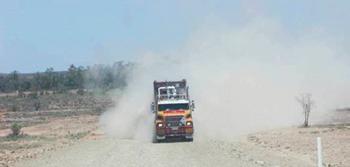
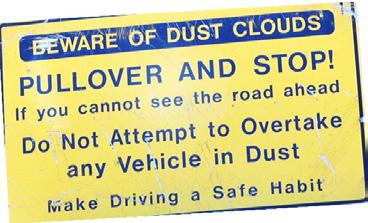
Because of this, unsealed roads can be a large consumer of natural materials. How sustainable is this and what engineering controls can be used to manage this?

These and many other unsealed road quirks and issues were explained and discussed at a two-day training course held by CPEE in Tamworth recently, which was attended by local government staff from Tamworth and several adjoining councils.
Many of the delegates were surprised at the number of tools and options available to help manage their networks. Some of them said they wished that their councillors could have attended too!
Tamworth is well known as Australia’s home of country music, but what if it were to become the home of country roads as well?
For more information, please visit www.pavementeducation.edu.au


E N H A N C E Y O U R T E C H N I C A L C A P A B I L I T I E S
is Australia’s premier provider of higher education and training in roads, pavements and infrastructure asset management. Offering online postgraduate programs alongside specialist short courses and workshops MASTER OF PAVEMENT TECHNOLOGY Short Courses Workshops Masters Graduate Certificates BACHELOR OF ENGINEERING TECHNOLOGY (PROFESSIONAL HONOURS IN INFRASTRUCTURE ASSET MANAGEMENT) w w w . p a v e m e n t e d u c a t i o n . e d u . a u [ 0 3 ] 9 8 9 0 5 1 5 5 Roads, Pavements and Infrastructure Asset Management NEWS // PARTNER SOLUTIONS September 2018 // ISSUE 8 www.infrastructuremagazine.com.au 16
CPEE
Australian Tunnelling Conference
Best practice in tunnelling design, construction and maintenance 15 – 16 October 2018


TECHNOLOGY SHOWCASE SPONSORS: EXHIBITORS:




LANYARD SPONSOR: SPECIAL RATEAUSTRALASIAN TUNNELLING SOCIETY MEMBERS SAVE UP TO $600!



SUPPORTED BY:
Conference
Function Centre PRESENTING THE 15TH ANNUAL REGISTER NOW www.informa.com.au/tunnellingconf
| SMC
&

ADDRESSING INFRASTRUCTURE GAPS THROUGH REFORM
 by Anna Chau, Acting Chief Executive, Infrastructure Australia
by Anna Chau, Acting Chief Executive, Infrastructure Australia
When Infrastructure Australia published the Australian Infrastructure Plan in February 2016, we set out a national reform agenda to address today’s infrastructure gaps and meet the challenges of the future.
made 78 comprehensive
way we plan, deliver and use our infrastructure.
These recommendations were comprehensive and long term, and laid out for Australia’s governments the reforms and investments needed to drive productivity, improve our standard of living and deliver world-class services in our cities and regions.
We knew, however, that the national reform agenda we put forward would only be as good as the commitments and leadership that followed.
To keep up the momentum on reform and encourage Australia’s government to stay the course over the long term, we have released a new report, Prioritising Reform, which reviews the progress made against the key recommendations in the 2016 Plan.
WHAT PROGRESS HAS BEEN MADE?
The Australian Infrastructure Plan
recommended a material increase in both public and private infrastructure funding to meet the needs of Australia’s growing population and drive productivity growth.
It’s pleasing then to report an upward trend in public and private infrastructure investment in transport, energy, water and communications, which has been discernible since early 2016.
This has been driven primarily by increased investment in transport infrastructure, which is the biggest category of spending in each state and territory – and represents about half of all private and public spending across the four sectors.
Another positive development highlighted in Prioritising Reform is the improved quality of long-term integrated infrastructure planning occurring across the country.
Our four largest cities, Sydney, Melbourne, Brisbane and Perth, have improved their metropolitan-level planning and coordination, while forward-thinking action has been taken to protect strategically important infrastructure corridors in New South Wales and Queensland.
We have also been pleased to see the Australian Government take up Infrastructure Australia’s recommendation to establish a National Freight and Supply Chain Strategy to define nationally significant freight corridors and precincts.
This action will be critical to meeting the growing national land freight task, which is set to grow by 86 per cent between 2011 and 2031.
WHAT REMAINS TO BE DONE?
While our recommendations have guided progress in these and other areas, there has been little or no progress on other critical opportunities for reform.
The Australian Infrastructure Plan recommended that more work be done to develop stronger market characteristics in the urban water sector to meet significant challenges over coming decades.
However, it is clear that urban water reform has stalled and progress towards full cost recovery and independent price regulation has slowed and in some instances, reversed.
The continued absence of a national
September 2018 // Issue 8 www.infrastructuremagazine.com.au
18 INDUSTRY INSIGHT
Anna Chau, Acting Chief Executive, Infrastructure Australia
population policy has fostered uncertainty around how to manage Australia’s growing population.
It is also needed to inform better infrastructure planning by correctly projecting the costs, benefits and optimal timing of major projects.
Progress on how we fund and deliver our roads has also stalled. The Plan recommended that the Australian Government initiate an inquiry into the potential benefits and impacts on road market reform, with a view to transitioning to a fairer user-pays approach.
The Australian Government signalled its support for this approach in 2016, however no inquiry has been forthcoming.
IMPROVING TRANSPARENCY AND ACCOUNTABILITY IN PROJECT SELECTION
A significant focus of the Australian Infrastructure Plan was the need for greater transparency and accountability in infrastructure decision-making and project selection.
The Infrastructure Priority List, a prioritised list of nationally significant investments assessed by the independent Infrastructure Australia Board, has helped guide investment towards projects with demonstrated economic benefits.
The update to the Infrastructure Priority List in March this year included $55 billion worth of projects, with $25 billion worth of projects moving off the list and into the delivery phase.
Australia’s governments are increasingly favouring a more methodical process for selecting major infrastructure projects, while the standard of business cases for major infrastructure projects has improved markedly.
Infrastructure Australia has been proud to work closely with the states

and territories to raise the quality of business cases, including by hosting workshops around the country to improve proposal development.
Greater collaboration between federal and state jurisdictions has further supported the development of quality business cases, as has the creation of dedicated infrastructure agencies in each state and territory.
However, early stage project funding announcements remain a concern. Too often we are still seeing instances of projects being committed to before a business case has been prepared, a full set of options have been considered, and rigorous analysis of a potential project’s benefits and costs has been undertaken.
These announcements risk foreclosing on other, possibly better, options, which can be costly for taxpayers and undercut public confidence in government decision-making.
A CLEAR SET OF PRINCIPLES TO GUIDE DECISION-MAKING
Building on our recommendation in the 2016 Plan, Infrastructure Australia has recently released the Infrastructure Decision-making Principles, a set of clear guidelines designed to ensure major public infrastructure investments deliver the best outcomes for the community and the best value for taxpayers.
These 11 principles set a new benchmark for high-quality infrastructure decision-making and should act as a guide for Australia’s governments, while also providing the community with a clear set of expectations with which to hold decision makers to account.
Our hope is that Australia’s governments embrace these Infrastructure Decision-making Principles as they will give the community added confidence that decisions on public infrastructure projects are robust, transparent and accountable.

19 INDUSTRY INSIGHT
SUSTAINABLE MATERIALS
By Jessica Cairns, Senior Sustainability Advisor, Transurban
Increasing the uptake of sustainable materials across the roads sector is one of the infrastructure sector’s biggest challenges. To tackle this issue, Transurban Queensland and the Infrastructure Sustainability Council of Australia (ISCA) recently joined forces to host an industry forum and workshop solutions.
This forum brought together more than 60 representatives from the Department of Transport and Main Roads, Brisbane City Council and Brisbane Airport, as well as key road contractors and materials providers, to look critically at some of the key challenges associated with using sustainable materials in motorway construction.
Significant quantities of resources are consumed to build, operate and deconstruct infrastructure across the globe. In fact, across Australia, there is an estimated $55 billion worth of high priority infrastructure planned,
including approximately $8 billion of funding committed to building roads in Queensland over the next five years1
This presents a considerable opportunity to reduce the environmental and social impact of these upcoming projects, and strong participation in this forum is a positive indicator that there is a real willingness and ability to make some meaningful changes to the way materials are specified and used.
THE IMPACT OF MATERIALS
The impacts of material use go well beyond construction, with potential effects on the environment and
communities occurring across the full lifecycle of a project. For example, a typical two-lane bitumen road with an aggregate base can require up to 25,000 tonnes of material per kilometre2
The key stages of a material's lifecycle are:
♦ Extraction and treatment of raw materials
♦ Product manufacturing
♦ Transport and distribution
♦ Maintenance and replacement requirements
♦ End-of-life requirements to recycle or send materials to landfill
To reduce the overall impacts,
EME2 production on the Logan Enhancement Project, early 2018.
Enrobé à Module Élevé (EME2) was developed in the 1980s and is designed to reduce the thickness of pavement without compromising on performance requirements. The Logan Enhancement Project will be among the first projects in Australia to use this product and is planning to use approximately 220,000 tonnes over approximately 8-10kms of heavily trafficked road. Current estimates suggest the overall thickness of asphalt will be reduced by 17.5 per cent, saving approximately 62,000 tonnes of asphalt.

September 2018 // Issue 8 www.infrastructuremagazine.com.au
Major Projects Pipeline’ Infrastructure Association of QLD report, 2018 2 Reducing the environmental impact of road construction, Sustainable Built Environment National Research Centre 2012 20 INDUSTRY INSIGHT
1
IN ROAD CONSTRUCTION
stakeholders involved across the full lifecycle need to be engaged and willing to consider alternative design solutions, new and improved products, and different ways of working together to deliver better outcomes.
INDUSTRY COLLABORATION
On 29 May 2018, ISCA and Transurban Queensland facilitated a workshop with representatives from across industry and a number of key speakers.
Transurban Queensland Group Executive, Sue Johnson, opened the forum and said Transurban was passionate about bringing industry members together to work through the challenges of sustainable infrastructure.
“We are committed to sustainability across the full lifecycle of our road assets,” Ms Johnson said.
“We’re working to use more sustainable materials in our road projects and are excited to work with industry to explore opportunities to take this much further than what is currently best practice.”
Ms Johnson said the forum was a small but important step forward and Transurban Queensland was committed to continuing to build momentum in this area.
The format of the event was designed to encourage discussion, collaboration and inspire participants to consider solutions and actions for each challenge. Short presentations, delivered by key speakers across a range of different topics, were followed by workshop sessions and action planning across six topics:
♦ Innovation and the relationship with specifications – facilitated by Mike Pickering, Department of Transport and Main Roads
♦ Using sustainable materials in
practice – facilitated by Peter Murphy, Alex Fraser
♦ Enabling the supply chain –facilitated by Robin Mellon, The Supply Chain Sustainability School
♦ Balancing risk and innovation –facilitated by Darren Leeson, Jacobs
♦ Collaboration – facilitated by Daniel Baker and Angela Hili, Transurban Queensland
♦ Leadership – facilitated by Kieren Heikkinen, ISCA
KEY OUTCOMES
This event included professionals from the public and private sector, and with various technical and non-technical backgrounds. The willingness for 60 professionals to come together and discuss options for overcoming challenges related to sustainable materials is an outcome in itself.
A number of key messages emerged from the workshop:
Message 1: Creative and targeted contract requirements reduce barriers and deliver outcomes
The most consistent and common message was the need to use contract structures, requirements and tender processes, to effectively incentivise sustainability, reduce risk around innovation, encourage open communication and knowledge sharing, and set minimum standards for sustainability performance.

21 INDUSTRY INSIGHT
www.infrastructuremagazine.com.au
Having clear and measurable requirements for sustainability in a contract will allow the contractor to understand and have adequate time to identify solutions and prepare their response. It also means that the client or project lead agency will have a set of initiatives that can be used to measure performance. The Infrastructure Sustainability (IS) rating scheme can be used to set minimum requirements and can also be used as a framework to incentivise performance. Further assistance in helping the supply chain to understand requirements, and providing adequate support, is necessary to increase the use of sustainability requirements in contracts. Starting engagement early will also help to break down barriers between project parties and create a culture of knowledge sharing and positive decision-making.
Message 2: Performance-based specifications
One of the biggest barriers to implementing new or alternative products is the process required to either adjust road agency specifications, or demonstrate compliance with an already approved specification. Throughout a number of
discussions, a need for performance-based specifications was expressed.
Specifications are required to make sure structures are safe, durable and perform as needed. At times, detailed and prescriptive specifications limit the ability for industry to innovate and try new things. Performance-based specifications use performance indicators and standard acceptance criteria to determine the suitability of a product. They do not specify the exact details of any particular product that should be used. For example, they would not prescribe the concrete mix proportions.
This format gives industry greater scope to innovate and, based on the feedback from the forum, is an important aspect for improving the application of sustainable materials and products.
Message 3: Industry collaboration for new and innovative products
Before new or innovative products are implemented on a project, there is usually a significant amount of time where

September 2018 // Issue 8 www.infrastructuremagazine.com.au 22 INDUSTRY INSIGHT
solutions are conceptualised, socialised, tested and trialled. This process requires collaboration and input from stakeholders right across the value chain.
A common question is around ownership and who should drive innovation in this area. If a client doesn’t ask for sustainable options, a contractor may not feel it is their responsibility to invest in and deliver these options. At the same time a client may feel they can’t ask for a specific requirement because they don’t know what is available or possible, along with the associated cost, risk and performance differences.
The solution is for clients, contractors and suppliers to collaborate throughout the innovation process and to actively

THE INDUSTRY BODIES
The Infrastructure Sustainability Council for Australia is the peak industry body for infrastructure sustainability. The Infrastructure Sustainability (IS) rating scheme is facilitated by ISCA and applies to the design, construction and operation of infrastructure. Transurban is a member of ISCA and currently mandates the use of the Infrastructure Sustainability rating scheme on all major projects.
The Supply Chain Sustainability School is a national not-for-profit initiative. The school represents a collaborative approach to developing environmental, social and economic sustainability competencies through the supply chain. It is a free resource, available to any team, client or supplier working in the construction industry, and is part of a continued commitment to lead the industry into a more prosperous, sustainable future.
communicate the costs and benefits of new and alternative products once they have been tested or trialled.
There are a number of challenges related to collaboration, including competitive advantage and the need to protect intellectual property, the fast-paced nature of construction and infrastructure planning, and finally, sometimes there is a lack of desire to do things differently. Industry peak bodies and working groups can play a major role in overcoming many of these challenges. Road agencies can also assist in driving more innovation by leading the charge and setting a policy objective to reduce the impact of materials in construction.
Message 4: Accept failure for innovation
In a sector where failure and mistakes can have catastrophic impacts on life, communities and cities, it is not surprising that overall stakeholders involved in the construction of transport infrastructure are generally risk averse, fearing failure. However, failure can be an essential part of the innovation process and it is equally important for industry to communicate failure, along with success. Participants suggested that a consistent methodology could be used for measuring and monitoring innovation to overcome this particular barrier. More generally, there needs to be a shift in thinking that encourages people to take risks and celebrate the lessons, regardless of outcomes.
Message 5: Education to increase consistency in language and approach
Almost all participants raised the need for greater education and consistency across industry. This also relates to knowledge sharing and collaboration. Unfortunately, sustainability still comes with many negative connotations across the construction sector. It is often associated with being ‘green’ and 'doing without', or sometimes costing a project more money, creating delays and not supporting overall project objectives. The participants agreed that a consistent process for communicating and quantifying the benefits from sustainability initiatives, including new materials and products, is urgently needed to help stakeholders throughout our supply chains understand the drivers behind improving the overall sustainability of the infrastructure sector.
The Supply Chain Sustainability School provides a range of free resources for educating the supply chain around key sustainability requirements and opportunities.
A full report, including a detailed set of findings and next steps will be available on the ISCA website from October. For any further information, contact ISCA or Jessica Cairns directly.
www.infrastructuremagazine.com.au September 2018 // Issue 8
23 INDUSTRY INSIGHT
STRENGTHENING COMMONWEALTH INFRASTRUCTURE

Tmore important that we are strategic around both what we invest in and how we invest. In particular, this more strategic focus on ‘what’ and ‘how’ requires the Australian infrastructure industry to continue its journey of evolution.
STRENGTHENING THE INTEGRATION OF THE
‘WHAT’
The need for greater strategic planning has been a well accepted development over the last few years; the creation of Infrastructure Australia and the infrastructure bodies around the nation focused on the what, why and when, has been a critical development in our sector.
The recognition that infrastructure is no longer thought of as the end but as the means to enable services and deliver outcomes for citizens has underpinned business cases and procurements for projects currently being delivered.
by Leilani Frew, CEO, Infrastructure and Project Financing Agency (IPFA)
The provision of infrastructure in Australia faces challenges from vast distances, a population that is concentrated in sprawling cities, finite financial resources within our economy, competition between freight and commuter uses on many corridors, and citizens who expect quality outcomes that meet their needs and deliver on promised benefits.
The focus on placemaking and land use in recent times, particularly through City Deals, has created an environment where infrastructure planners embrace the challenge of developing future connectivity solutions for citizens that allow us to work, live and play in an integrated manner.
STRENGTHENING
THE INTEGRATION OF THE ‘HOW’
According to analysis of state, federal and territory budgets by Infrastructure Partnerships Australia, from 2018-2021 we will see around $170 billion in public infrastructure investment across all sectors.
This quantum of investment means now is the time to have a greater acknowledgement that it takes a village of equally capable partners with key roles to play in order to raise an infrastructure project.
Whether its private sector businesses of contractors, investors, financiers or
operators, not-for-profit organisations, local councils, state governments or the Commonwealth Government, we all have a role to play in delivering infrastructure-enabled services for citizens.
As with our placemaking and connectivity solutions, we need to deliver these services in a more integrated way. As a sector, we must also ensure that we each have the right capability to deliver both as individual organisations and collectively as the village.
THE INTEGRATION OF THE COMMONWEALTH AS AN INFRASTRUCTURE PARTNER
This focus on strengthened integration in delivering infrastructureenabled services creates a real opportunity to sharpen how the Commonwealth invests and partners with the states and the private sector to deliver improved services and outcomes.
September 2018 // Issue 8 www.infrastructuremagazine.com.au 24 INVESTMENT
Leilani Frew, CEO, Infrastructure and Project Financing Agency (IPFA)
STRENGTHENING THE COMMONWEALTH AS AN INFRASTRUCTURE PARTNER
This is my challenge as CEO of the Infrastructure and Project Financing Agency (IPFA), to strengthen the Commonwealth’s capacity as an investor and to provide the right capability to help the Commonwealth play its role in the collective infrastructure partnership so as to deliver for citizens and taxpayers.
IPFAs focus on applying the Commonwealth’s strategic investor mindset to its $75 billion commitment to transport infrastructure investment over the next decade acknowledges the responsibility of ensuring that taxpayer dollars are invested in a way that delivers them maximum returns. These returns could be in the form of outcomes and, if possible, the recycling of some or all of their investment back into other national infrastructure projects.
IPFAs team has a number of members who have private sector investment and/ or financing experience so we appreciate the value that private sector money, innovation and execution capability brings into infrastructure projects.
We particularly value private sector views on how government can best structure a deal to maximise private sector financing and contributions.
RETURN ON INVESTMENT
At IPFA, we are also very conscious that for some projects there is a need for taxpayer dollars to be invested. However, we want to be as clinical as we can in understanding this need and we want to ensure some return on this investment where we can.
For example, if taxpayer dollars are required to bridge the creation of markets, user pay revenue streams, or for regulatory certainty, then it is reasonable for the taxpayer to have the
opportunity to get some or all of its investment back.
Yes, this comes with the risk that the investment may not be returned but a grant comes with a 100 per cent guarantee that the taxpayer will not have the opportunity to get anything back. Furthermore, a purely grant-based approach will not create the opportunity to recycle investments into other national infrastructure needs.
Grant funding will always be a significant feature of the Commonwealth’s investor approach. IPFAs mindset of maximising private sector financing opportunities and maximising the return package for taxpayers (outcomes and if possible,
investment) will help increase the transparency of decisions on grants, with a clear focus on outcomes.
For example, IPFAs work with the Department of Environment and Energy to provide a financial contribution to the Solar Reserve concentrating solar thermal project in South Australia is focused on ensuring the structure of the Commonwealth funding can sit alongside private sector investors and financiers and benefit from the commercialisation of the project that the taxpayer’s contribution is enabling.
ADVICE TO COMMONWEALTH
In bringing our commercial experience to the table our focus is on providing
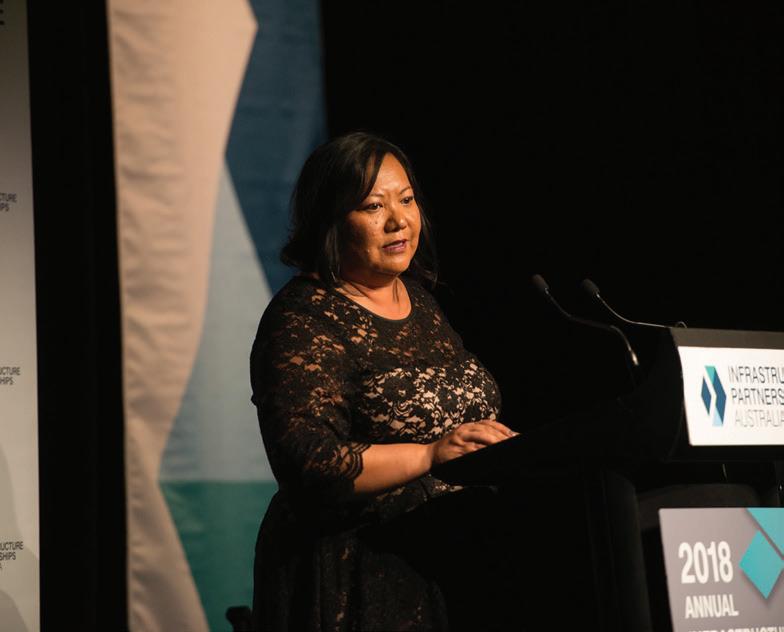
www.infrastructuremagazine.com.au September 2018 // Issue 8
INVESTMENT
25
Leilani presenting at the 12th Annual Infrastructure Oration and 2018 National Infrastructure Awards Dinner (27 May 2018).
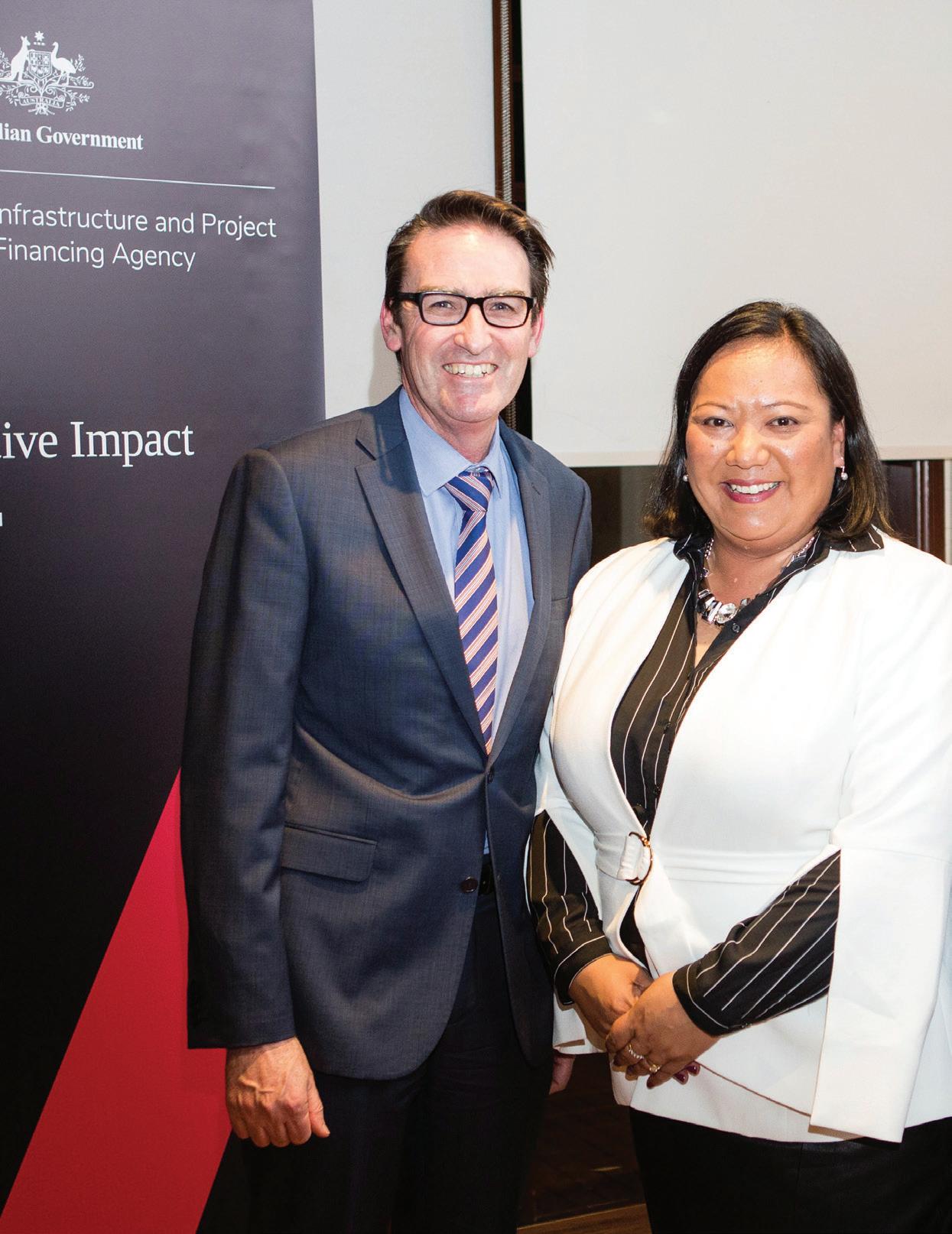
September 2018 // Issue 8 www.infrastructuremagazine.com.au 26 INVESTMENT
Leilani, Deputy Prime Minister and Minister for Infrastructure and Transport, the Hon Michal McCormack MP, and Department of Infrastructure Secretary, Dr Steven Kennedy, at the IPFA one year anniversary event.

in-house advice to the Commonwealth on the ‘how’ of infrastructure investment and providing the expert capability to implement the infrastructure governance, commercial delivery and financial arrangements with our state, territory, local council and/or private sector partners.
Our team has a mix of private sector, public sector and public-private sector members. This allows us to speak the different languages of our partners, which we find helps facilitate stronger partnerships, greater appreciation by the Commonwealth of our partners perspectives, and better implementation.
The government’s City Deals are the best example of where an integrated ‘what’, an integrated ‘how’, and Commonwealth integration as a partner, is coming together.
Leveraging off the Commonwealth’s investment in the Western Sydney Airport, the Western City Plan developed by the Greater Sydney Commission and the joint funding commitments to the new North-South Rail line from St Mary’s to Bringelly, the Western Sydney City Deal is a partnership between the three levels of government. It will deliver a once-in-a-generation transformation of Sydney’s outer west to catalyse investment, development and employment, including via the development of the Western Sydney Aerotropolis.
IPFA has used its commercial advisory and financial sector capability to assist the Commonwealth in negotiating with the NSW Government to establish the Authority, which will have responsibility for planning and delivering the land use outcomes for the new city. In addition, we are working with the NSW Government and local councils to maximise private sector partnership opportunities to contribute to the development of the Aerotropolis.
Just as importantly, we are working through arrangements with the NSW Government to tap into the value uplift on surrounding land created by the new rail link (and Western Sydney Airport itself) within the Aerotropolis.
These additional streams of revenue will be shared by the Australian Government and NSW to offset the cost of rail and will help stretch taxpayer dollars to fund more projects. They will also ensure that taxpayers nationwide who ultimately fund the delivery of the North-South Rail asset can share in the value it creates.
COLLABORATION AND PARTNERSHIP KEY
The Commonwealth Government needs the right capability and expertise, including commercial and financial capability, to partner with states, territories, local councils and the private sector if we are going to collectively deliver, finance and fund the infrastructure outcomes for citizens.
From my perspective as IPFA CEO, collaboration and partnership through commercial and financial expertise to help make things happen is what we do. The strong support, engagement and number of partnership investments under development that we have with the states, territories, local councils and private sector organisations is testament to the benefits of strengthening the capability of the Commonwealth as an infrastructure partner.
As a taxpayer and a citizen, this gives me greater confidence that my infrastructure investment will deliver maximum returns; returns in terms of outcomes and, if possible, recycling some or all of my investment back into other national infrastructure projects. Of course, I would say that from where I sit, but I hope in time as these initiatives are delivered, my fellow taxpayers and citizens will share this confidence.
www.infrastructuremagazine.com.au September 2018 // Issue 8 27
INVESTMENT
JOIN INFRASTRUCTURE EXPERTS AT
ASSET MANAGEMENT FOR CRITICAL INFRASTRUCTURE
12-13 September
Swissötel Sydney
TThe
2018 Asset Management for Critical Infrastructure Conference is set to kick off on 12 September for two days of in-depth discussions
about the most pressing issues in the management of critical assets.
he full speaker lineup and program has been released, with experts from water and power utilities, government, industry associations and consultancies.
AN IN-DEPTH LOOK AT THE CURRENT STATE OF ASSET MANAGEMENT
Day One of the conference will see thought-leading individual presentations on:
♦ Learnings from the implementation of ISO 55001 at Sydney Water
♦ Changing asset management requirements in the energy sector due to rapid sector transformation
♦ Case studies exploring how to optimise cost against risk
♦ Leveraging data with digital twins and IoT techniques
♦ The future skills required of asset managers
♦ Incorporating sustainability into asset management systems
♦ New state asset management strategies for New South Wales Day Two’s keynote presentation explores how to develop strategic asset management plans and overcome current challenges, before the conference is split into four targeted streams on asset management in the rail sector, corrosion, renewable infrastructure and trenchless technologies. These specialised streams will run
as moderated panel sessions with key senior figures from each area providing delegates with information specific to the asset management challenges and solutions for that topic.
The conference is then rounded out with a Super Panel which brings back the speakers from across the two days to summarise some of the key discussions and answer any burning questions from attendees.
Asset Management for Critical Infrastructure 2018 is the key asset management event across the utility and infrastructure sectors; nowhere else will delegates have the chance to look in-depth at these issues and learn how other sectors are overcoming challenges.
EXHIBITION AND NETWORKING OPPORTUNITIES
In addition to the conference presentation and panel sessions, the event also features an exhibition showcase where delegates will see up close some of the newest innovation technologies, products and services that are changing the way critical assets are managed.
The conference and exhibition has been designed to allow for lots of networking between like-minded attendees. There are several speed networking sessions which are a structured and fun activity that gets conversations flowing and guarantees
delegates will make new industry connections. This is in addition to opportunities during the breaks and the networking drinks at the end of Day One.
BONUS STAKEHOLDER MANAGEMENT WORKSHOP
Conference MC Steve Doran will also be co-hosting the workshop Beyond Stakeholder Management: Influencing the relationships that can make or break your project with Mirella Di Genua, Owner of Tre Sorelle Trading, on 11 September at Swissôtel Sydney, the day before Asset Management for Critical Infrastructure begins.
This full-day workshop is a great addition to the conference and will equip delegates with the tools and insights to effectively influence the identified relationships that have a vital bearing on asset management project outcomes. To register for the workshop, head to www.assetmanagementevent.com.au/ workshop-and-conference.
September 2018 // Issue 8 www.infrastructuremagazine.com.au
28 ASSET MANAGEMENT
To register for Asset Management for Critical Infrastructure 2018, visit www.assetmanagementevent.com.au.

Steve Doran Director, Infrastream Chair, Sydney Chapter of the Asset Management Council

David Singleton Independent Director/Chair Infrastructure Sustainability Council of Australia

Bonnie Ryan Senior Manager GS1 Australia

Andrew O’Connor Partner, Engineering and Asset Management KPMG Australia
assetmanagement FOR CRITICAL INFRASTRUCTURE
12–13 September 2018 | Swissôtel Sydney

Rami Affan Executive Director, Asset Management Infrastructure NSW

Dr Lutfiye Manli Senior Asset Management Strategy Advisor Powerlink Queensland

Andrew Jones Senior Asset Integrity Engineer CNC Project Management

Darren Davis General Manager, Asset Management & Engineering Snowy Hydro
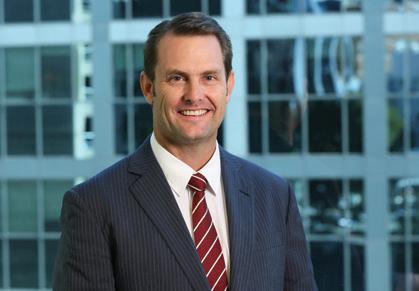
Gerard Reiter Executive Manager, Network Planning & Operations TransGrid

Mark Simister Head of Delivery Management Sydney Water


Mina Gerguis Manager, Asset Portfolio Victorian Health and Human Services Building Authority

Iain Pople Head of Asset Management Edify Energy

Kerry Brown Professor of Employment and Industry Edith Cowan University

Brad Dockrill Partner/Director Vinsi Partners Consulting Engineers

Louis de Groot Project Manager, Sustainable Infrastructure Solutions Unitywater

Paul Higham Head of Service Planning & Asset Strategy Sydney Water

Dr Carla Boehl Principal Consultant SNC-Lavalin

Simon Krismer Principal Consultant Krismer Consulting

Andrew Meier Executive Director/CEO Australian Centre for Rail Innovation

Kirsty Bauer Case Manager Infrastructure Sustainability Council of Australia

Jim Hickey Electrolysis Engineering Officer, Network Test and Measurement Ausgrid

Scott Stevens Principal Engineer Civil, Operations & Service Delivery Queensland Urban Utilities
Favotto Asset Planning Manager Transport for NSW


Martin Marerwa Senior Asset Investment Planner, Asset Investment Planning Metro Water Corporation
Supporting organisations


Di Genua Owner Tre Sorelle Trading
www.infrastructuremagazine.com.au September 2018 // Issue 8 29 ASSET MANAGEMENT assetmanagementevent.com.au assetmanagementevent.com.au
Lucio
Mirella
RUGGED TABLETS SMOOTHING OUT ROAD IMPROVEMENT PROJECTS
by Brett Gross


AIt can be frustrating when roads are in disrepair – or under constant repair. That is why Main Roads Western Australia is keeping one of the most widely geographically distributed road networks in the world in top shape for the millions of people and billions of dollars and goods that traverse the region every day.
s the state road authority, Main Roads WA is responsible for building, inspecting and maintaining more than 18,500km of main roads and highways covering over 2.5 million square kilometres. It’s no easy feat by anyone’s standards. Yet, this government-affiliated agency has found a way to simplify one of the most complex jobs in the public sector while simultaneously raising the bar for road quality standards for the world using just rugged tablets.
A little over five years ago, each Main Roads WA regional office was using its own system to document road inspections and track repair progress. The problem was that most of these systems were heavily reliant on paper-based documents or Toughbook notebooks that could not be safely mounted in vehicles.
Considering the sheer number of resources it requires to coordinate field-based teams, much less execute and track the high volume of projects in the works on any given day, these legacy “systems” were failing fast.
CONSOLIDATING WORKFLOW SYSTEMS
After doing its research about alternative technology-based workflow solutions and conducting extensive field tests, Main Roads WA realised that rugged tablet-based solutions were the best way forward. By giving every worker an Xplore rugged tablet, this transport authority was able to migrate its seven regional offices onto the same agency-wide workflow system. Everyone was able to login to the same software applications to manage assets, record, track road maintenance issues, and retrieve job requirements, whether they were on-site, on the road, or in the office.
By using mobile technology to directly improve the quality of its data management, Main Roads was able to improve the performance of its maintenance and inspection management systems and, therefore, improve the quality of the region's roads.
INCREASING WORKFLOW CONTINUITY
Main Roads WA is a great model for every public and private sector organisation to follow, especially those with highly mobile workforces charged with managing disparate transportation fleets or infrastructure assets. It is highly inefficient and certainly not cost-effective to invest in multiple devices, and therefore multiple software platforms and configurations, to deliver critical workflows to every employee and job site. You would not give one employee two different desktop computers, so why give them multiple computers at all?
As Main Roads WA can advocate, today’s government, transportation and field-based agencies – especially those responsible for building and maintaining infrastructure – need a single mobile computing platform for workflow continuity between the traditional office, the vehicle and the field.
That requires some strategy and planning, as not all mobile computers are going to be well-suited for your workflow software. There are always other considerations when deploying mobile technology on the road, with safety being the primary one.
However, with the right mobile tools in place, both government-affiliated organisations and private sector companies can improve worker productivity – which accelerates project timelines, making your customers happy – and eliminate wasteful operational expenditures, which is especially critical when taxpayer dollars are driving these projects.
September 2018 // Issue 8 www.infrastructuremagazine.com.au 30 ASSET MANAGEMENT // PARTNER SOLUTIONS
MAKE THE SMART RUGGED CHOICE
Protect Your Most Important Assets with These Field-Proven, HazLoc-Certified Mobility Solutions

Xplore’s powerful mobile devices are engineered from the inside out to survive common environmental hazards and hostile field conditions.
Whether you are responsible for paving new roads, inspecting new buildings, repairing railroad tracks, or maintaining utility infrastructure, Xplore’s mobile computers will stay by your workers’ sides to help them effectively plan their day and power through mandatory logistical and compliance tasks without error.







Learn more about the benefits you gain when you build your mobility solution upon Xplore’s rugged tablet, handheld or 2-in-1 mobile computer.
Built for Rugged Extremes Power of Intel ® Core Real-time Data Communications Outdoor Viewability C1D2 / ATEX Protection Peripheral Connectivity OS Application Flexibility www.xploretech.com/infrastructure
MOBILITY AS A SERVICE IN AUSTRALIA: CUSTOMER INSIGHTS AND OPPORTUNITIES
by Susan Harris, CEO, ITS Australia
There’s much discussion these days about once-in-a-generation change; digital disruption, major demographic and societal shifts, and mega-projects offering improvements unimagined by our grandparents or sometimes even our parents.
What has not been seen before though is the kind of unprecedented potential for change in transport that we are currently experiencing.
During interviews with more than 80 leaders in the transport and technology sectors, across government, industry and academia, a strong theme emerged; that not since the mass production of private vehicles around 1920 has there been such potential for revolutionary change in the transport sector.
Transport innovation like ‘Mobility as a Service’, or MaaS, offers the potential to drastically improve customer choices, reduce travel costs, increase network capacity and transport sustainability while improving social and environmental outcomes.
While the mass production of private vehicles obviously had a stunning impact on society and the built environment, the advent of connected and automated vehicles and other revolutionary technologies offer the potential for even greater levels of disruption. Concepts like MaaS are ways we can adapt to, and positively leverage, this societal and technological disruption.
This research project was led by ITS Australia and made possible with support from project partners through the iMOVE CRC. Project partners were supported by a Steering Committee of industry and government experts from the following organisations collaborating on the project and providing invaluable advice and input: Cubic; Department of Infrastructure; Regional Development and Cities; HMI Technologies and Ohmio; GHD; Keolis Downer; MaaS Australia; PTV; RACV; and Transdev.
With these organisations and our project partners, and the perspectives gathered through extensive interviews, a robust discrete choice customer survey instrument was designed to test the thoughts and expectations of a demographically representative sample of Australians.
PROJECT GOALS AND METHODOLOGY

As found in the recent Transport for London report, Attitudes towards car-ownership and MaaS, both Londoners and Australians strongly prefer a MaaS product that includes public transport. This indicates how important it is that relevant authorities explore how public and private offerings can be integrated effectively.
Access to and integration of data was identified and acknowledged by the majority of industry experts as being a key early consideration to enable any effective MaaS product. With real-time information and potential personalisation for individual customers being highly valued by Australian’s surveyed, data sharing will play a vital role in an effective deployment of MaaS. Therefore, data interoperability standards with privacy and security safeguards will need to be established.
Australians surveyed indicated no strong preference for either government or private operators to deliver MaaS products, yet there was more support for schemes where government oversight was indicated. This suggests that while customers are agnostic regarding who they purchase a MaaS product from, they are generally more supportive with government playing an oversight role, with an underlying expectation of and support for government involvement.
32 INTELLIGENT TRANSPORT SYSTEMS (ITS) // PARTNER SOLUTIONS September 2018 // Issue 8 www.infrastructuremagazine.com.au

DEVELOPMENT OF MAAS
A key component of MaaS is the integration of planning, booking and payment into one seamless customer interface. This is a complex process involving many closed back-end systems and proprietary platforms. From the customer perspective this interaction will need to be simple and frictionless.
To enable competition for MaaS providers, a level playing field should ensure reasonable access to potential players, this will require the standardisation of a range of systems that are currently closed or siloed.
MaaS systems offer customers personalised access to multiple transport modes and services, owned and operated by different mobility service providers, through an integrated digital platform for planning, booking and payment.
Australia is in the embryonic stage of these new transport delivery models, and we anticipate that both perceptions and realities will evolve as we start to experience MaaS and further advance on-demand transport, and this research and subsequent findings are intended to provide an understanding of customer expectations at this point in time.
To fully capitalise on the vast opportunities these coming transport innovations can offer, and endeavour to avoid possible damaging disruption, both public and private sector collaboration and community engagement will be critical, to that end we look forward to continuing the conversation on Mobility as a Service in Australia.
Mobility as a Service offers the potential to drastically improve customer choices, reduce travel costs, increase network capacity and transport sustainability, while improving social and environmental outcomes. Ultimately, MaaS aspires to be more convenient and user-friendly than individual use of private vehicles.
So where to, from here? In both the public and private sector distribution, we are starting the conversation in Australia with a robust evidence base and opportunities for longitudinal studies of attitudes and applications of MaaS into the future.
For more detailed information and to review the ITS Australia vision statement for MaaS please download a copy of Mobility as a Service in Australia: Customer insights and opportunities at www.its-australia.com.au/ MaaSreport.

ABOUT ITS AUSTRALIA
Intelligent Transport Systems Australia (ITS Australia) promotes the development and deployment of advanced technologies to deliver safer, more efficient and sustainable transport across all public and private modes – air, sea, road and rail.
Established in 1992, ITS Australia is an independent not-forprofit incorporated membership organisation representing ITS suppliers, government authorities, academia, and transport businesses and users. Affiliated with peak ITS organisations around the world, ITS Australia is a major contributor to the development of the industry.
33 INTELLIGENT TRANSPORT SYSTEMS (ITS) // PARTNER SOLUTIONS www.infrastructuremagazine.com.au September 2018 // Issue 8
INTELLIGENT INSTALLATIONS – THE IMPACT FOR VICTORIAN ROADS
With Melbourne’s population expected to increase by one million people over the next decade, VicRoads is relying on Intelligent Transport Systems (ITS) to minimise growing pains and shift drivers into a safe and efficient future on the state’s roads. While the systems’ full benefits are still being realised, VicRoads has reported significant improvements to lane capacity, congestion and safety following the rollout of ITS on some of Victoria’s major roads.
ITS technology has developed rapidly over the past five years.
With new and upgraded ITS being installed as part of Victoria’s ongoing infrastructure investment program, the state’s roads are set to be more closely monitored than ever.
MONITORING MILLIONS
The ITS being implemented by VicRoads, and soon to be managed by Lendlease, includes assets such as electronic message signs, vehicle detection loops, tidal flow systems, traffic lights, CCTV cameras and variable speed limit signs.
Lendlease was awarded the management contract in May 2018, to monitor and maintain the growing number of Victorian Intelligent Transport Systems. It will also be responsible for

the upgrade of the VicRoads ITS and communications network, as well as provision of the Network Operations Centre.
These systems are monitored around the clock by the Network Operations Centre. Chris Coghlan, Manager of ITS Delivery, VicRoads, said that information gained through monitoring is already helping road authorities improve processes and make a difference to major roads.
“This technology helps us manage traffic, particularly in the event of an incident such as a crash, and is part of a state-of-the art managed motorway system which controls and regulates the flow of traffic to minimise congestion. It also reduces response times to incidents and improves communication with drivers,” Mr Coghlan said.
MEETING GROWING DEMANDS
Over the next ten years, Melbourne’s rapidly rising population is expected to generate an additional 3.2 million daily trips for Victoria’s road network. With driving still forecast to account for over 70 per cent of all trips by 2030, it is vital that VicRoads is prepared for heightened demand.
“Through the use of ITS technology, VicRoads will be able to continue meeting travel demands by improving the efficiency of the existing road network, adding capacity, reducing road crashes and significantly improving road user experience,” Mr Coghlan said.
“We are installing smart, on-road technology right across our freeway and arterial road network, including lane use management and variable message signs which inform drivers about the
September 2018 // Issue 8 www.infrastructuremagazine.com.au
34 INTELLIGENT TRANSPORT SYSTEMS (ITS)

www.infrastructuremagazine.com.au September 2018 // Issue 8 35 INTELLIGENT TRANSPORT SYSTEMS (ITS)
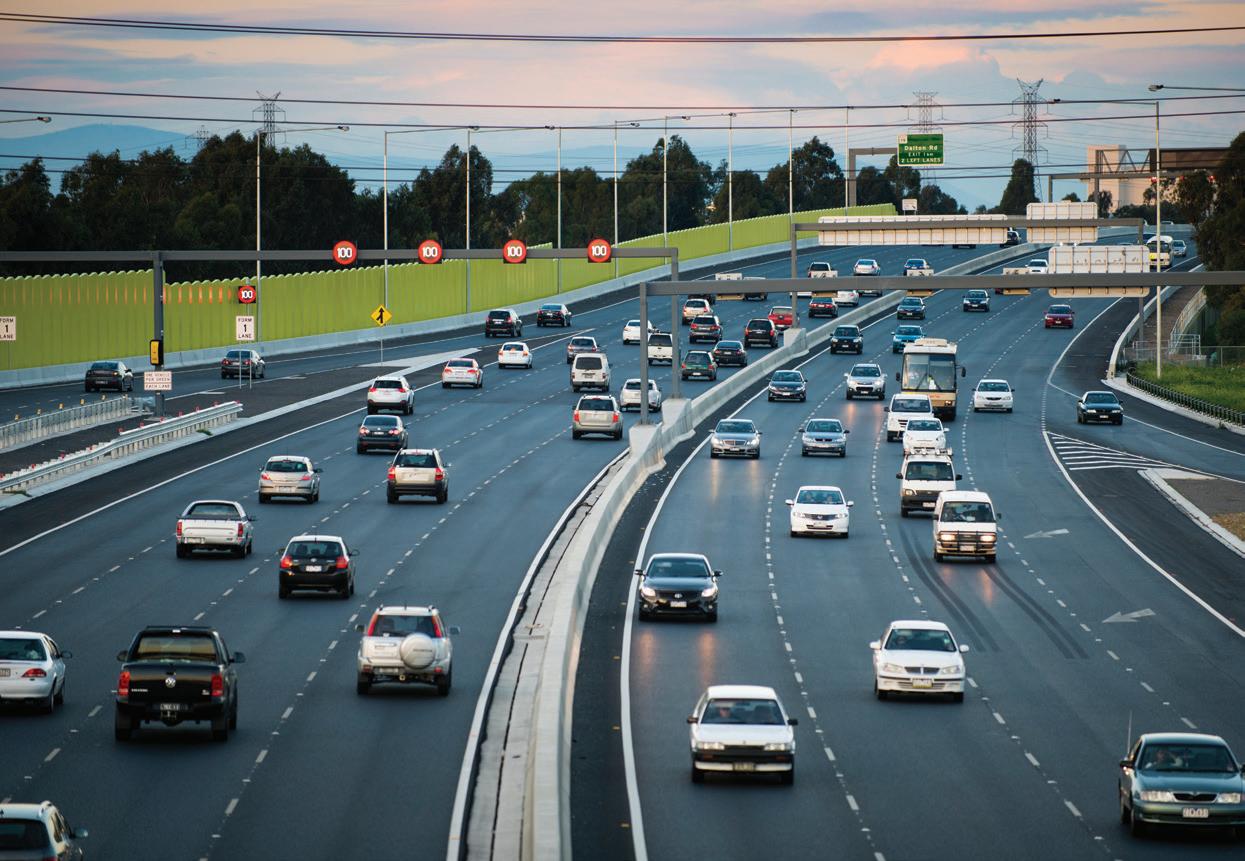
speed limit and which lanes are open.”
With ITS being installed as part of works completed and nearing completion along the Tullamarine Freeway, Monash Freeway and the M80 Ring Road, system benefits are already being identified.
Following the installation of ITS technology on the M1 Upgrade in 2010, VicRoads noted major improvements to lane capacity. In turn, this has reduced congestion and crashes by a huge 30 per cent.
These improvements come as a result of ITS technology’s ability to assist road users in making informed decisions, including decisions about route choice and time of travel. While informed decision-making on the road is important at all times, it is particularly vital during periods of changed driving conditions, such as when an accident occurs.
Technology such as real-time information signs, variable message signs and freeway condition signs, combined with website information and radio updates will become increasingly important as more drivers utilise Victorian roads, leading to more congestion.
By using ITS to communicate information at all stages of a driver’s journey, congestion as a result of incidents should decrease.
MELBOURNE’S MOST INTELLIGENT MOTORWAYS
ITS technology rolled out across Melbourne’s newest road projects may be subtle, but it has vastly improved VicRoads’ approach to freeway network management and will continue to make an impact as more traffic is introduced over the coming years.
The new technology adopted across Victoria’s freeway networks includes:
♦ Infrared light-based non-invasive technology for freeway data stations to improve the accuracy of data and eliminate on-road assets, resulting in reduced maintenance costs
♦ Digital CCTV cameras
♦ Freeway to freeway ramp signals, including associated variable message signs
♦ Remote access and monitoring of electronic road signs
♦ Multi-colour pictograms on variable message signs to enable the display of travel time information
Similar improvements should result from ITS assets on arterial and rural road networks. The new technology being introduced to arterial networks includes:
♦ Intersection traffic signals
♦ Variable message signs
♦ Closed circuit television cameras
♦ Bluetooth readers
♦ School and shopping centre dynamic electronic speed limit signs
♦ Overheight vehicle detection and warning systems
♦ Emergency and public transport vehicle detection systems
♦ Bridge deck heating
♦ Ice warning signs
MORE IN THE WORKS
There’s no doubt that Victoria’s road networks are, and will continue to become, more intelligent than ever. Managed motorway systems utilising ITS will continue to be rolled out over the coming months and years. With the Monash Freeway set to see further development in 2018 and work on other roads expected as part of the ongoing infrastructure investment program, Victorians can safely anticipate a future of smarter, more efficient driving.
September 2018 // Issue 8 www.infrastructuremagazine.com.au 36 INTELLIGENT TRANSPORT SYSTEMS (ITS)
TULLAMARINE FREEWAY
» 44 lane use management systems supported by variable speed limit signs at each entry ramp
» Five variable message signs
» 15 arterial road freeway ramp signal sites
» Four freeway to freeway ramp signal sites supported by variable speed limit signs and other ramp control signs
» CCTV cameras between Bulla Road and Melbourne Airport
» Freeway data stations at average 500m spacings, and on each entry and exit ramp between Bulla Road and Melbourne Airport and along the Calder Freeway MONASH FREEWAY UPGRADE
» 34 lane use management sites supported by variable speed limit signs at each entry ramp
» Eight variable message signs
» Seven new arterial road freeway ramp signal sites
» Seven modified arterial road freeway ramp signal sites
» Two freeway to freeway ramp signal sites supported by variable speed limit signs and other ramp control signs
» 28 CCTV cameras
» Over 100 new and/or upgraded freeway data stations M80 UPGRADE
» 12 lane use management sites
» Three arterial road freeway ramp signal sites
» Two freeway to freeway ramp signal sites
» One variable message sign
» CCTV cameras to provide vision of all areas of the freeway
» Freeway data stations at average 500m spacings, and on each entry and exit ramp
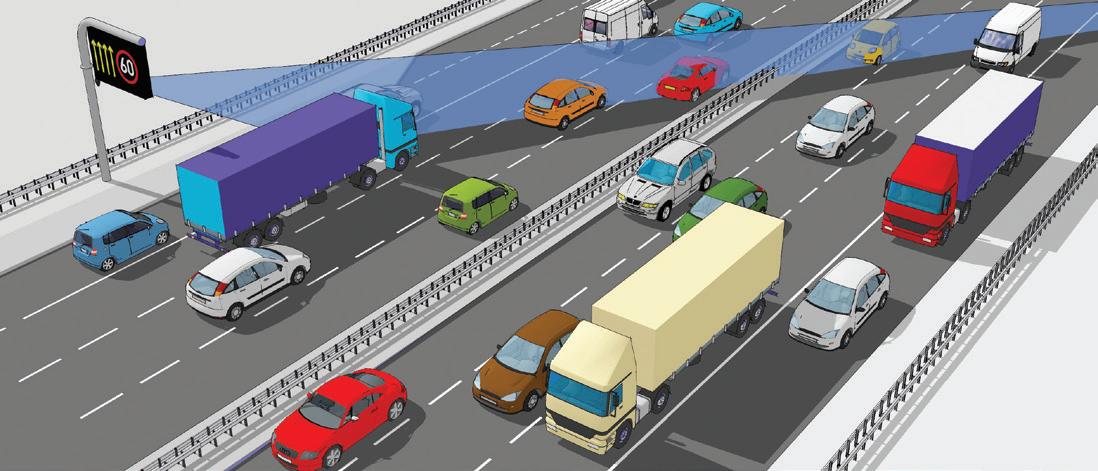

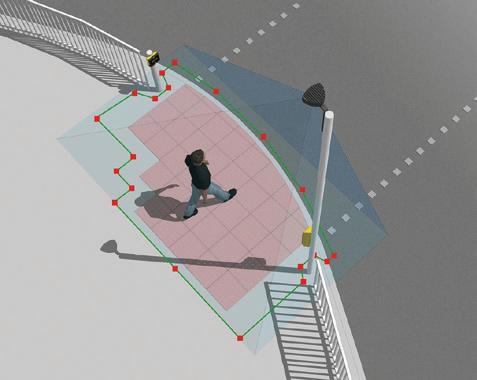
www.infrastructuremagazine.com.au September 2018 // Issue 8 37 INTELLIGENT TRANSPORT SYSTEMS (ITS) AGD SYSTEMS PTY LTD. Unit 17/15 Valediction Road. Kings Park NSW 2148 Australia T : 02 9653 9934 E : sales@agd-systems.com.au W : agd-systems.com.au
DETECTION ITS installation on recent projects
PEDESTRIAN & VEHICLE
EVIDENCE DRIVING AND ZERO EMISSIONS

September 2018 // Issue 8 www.infrastructuremagazine.com.au 38 INTELLIGENT TRANSPORT SYSTEMS (ITS)// PARTNER SOLUTIONS
DRIVING AUTOMATED EMISSIONS VEHICLES

 by Dr Allison Stewart – Project Director, Automated and Zero Emissions Vehicles
by Dr Allison Stewart – Project Director, Automated and Zero Emissions Vehicles
Infrastructure Advice, Infrastructure Victoria
Could driverless vehicles operate on our existing roads or ICT infrastructure? What impact could electric vehicles have on our energy grid? And if we didn’t have to drive ourselves, would we change where we choose to live and work?
These are just some of the questions we set out to answer at Infrastructure Victoria as part of our advice to the Victorian Government on the infrastructure that may be required to support automated and zero emissions vehicles.
In early August, we published our evidence base, a collection of technical and modelling reports, as well as our own analysis. Spanning areas like energy, ICT infrastructure and transport engineering, our research has examined – for the first time – what the impacts and benefits of driverless and zero emissions vehicles could be for Victoria.
It’s a positive story overall for Victoria, with significant environmental, health and safety benefits that also translate to strong economic benefits worth up to around $15 billion per year by 2046. While there is a great deal of uncertainty around new types of vehicles, what we do know is that if we don’t keep a close eye on technology developments and plan for the rollout of these new vehicles, Victoria could risk being left behind the rest of the world.
TRANSPORT AND ROADS
One of the most significant benefits that could be delivered by new vehicle technologies is improved
road safety. If all vehicles were driverless, we could reduce road deaths in Victoria by up to 94 per cent or 400 per year in 2046. Of all the promises provided by these emerging technologies, the avoided cost – personal, social and economic – of road accidents could be the most profound.
These vehicles could also have a huge impact on how our transport network performs. Through our transport modelling, we expected to find that driverless vehicles could make our road networks more efficient, but one surprising result was that they increase network efficiency even when mixed with human-driven cars.
If even just half the Victorian vehicle fleet was shared rather than privately owned, 43 per cent fewer vehicles could be needed to get us around and congestion could improve due to average vehicle speeds being 39 per cent faster. If these benefits were expanded to the entire vehicle fleet, average delays across the road network could be reduced by up to 91 per cent.
We also took an in-depth look at roads themselves through our transport engineering study, which found that our roads are unlikely to need wholesale changes to accommodate driverless vehicles aside from regular maintenance, and ensuring lines and signs can be ‘read’ by these vehicles. In particular, text-based signs or
www.infrastructuremagazine.com.au September 2018 // Issue 8
39 INTELLIGENT TRANSPORT SYSTEMS (ITS)// PARTNER SOLUTIONS

time-based speed zones are difficult for in-vehicle systems to comprehend, so either making that information machinereadable or transmitting it digitally to vehicles could help. We also heard from many stakeholders that roads being of good quality, free of pot holes, with clear lines and signs would be crucial for early driverless technologies.
ENERGY AND ENVIRONMENT
Battery electric vehicles are already on our roads, but if we were to follow in the footsteps of Norway, where electric vehicles enjoy a 29 per cent market share, we could face a range of obstacles to overcome. Widespread charging infrastructure could be required and the additional electricity consumption could put pressure on our energy supply, meaning the energy network could be squeezed if everyone chooses to charge at the same time.
Our modelling found that if the whole Victorian vehicle fleet switched to battery electric, our total electricity consumption would increase by 50 per cent to 56 per cent and $5.8 billion to $10.3 billion. We also found that incentivising consumer charging or centrally controlling charging by time of day could make a significant difference to the total investment required in our energy networks.
The upsides of moving to battery electric vehicles, however, are significant. Put simply, zero emissions electric cars are

good for our health. Getting rid of petrol or diesel vehicles and their associated emissions could be worth up to $706 million per year to the Victorian economy by 2046. We also found that all of Melbourne’s travel needs could be served by a shared automated fleet of 260,000 cars – a 93 per cent reduction compared to what we would need if everyone continued to own their own. This change alone could have major environmental benefits.
Our research also examined hydrogen fuel cell vehicles which, while still a fledgling market here in Australia, have the potential to be a gamechanger for heavy vehicles and freight. We found that moving to a hydrogen fleet could have a large impact on our total electricity demand, as well as water use. However, hydrogen has the potential to provide greater energy security and build resilience in our electricity network by adding storage capacity, with hydrogen essentially acting like a battery.
ICT
It seems obvious that a completely interconnected fleet of driverless vehicles seamlessly meeting our travel needs would both require and send a truckload of data. However, according to our ICT infrastructure analysis, the data needs of driverless vehicles would be dwarfed by our other data needs by 2046, making up just 0.4 per cent of what personal data usage is predicted to reach. Our modelling estimated that a driverless car or truck would send and receive about 20 megabytes of data per driving hour, or around 184 terabytes per day in total if everyone drove their own automated car. That’s compared to an individual’s projected personal data use of 125 gigabytes per month in 2046, a three-fold increase compared with today.
So what would happen when a driverless vehicle hits a black spot? Our research suggests that automated vehicles will be designed to operate on roads without needing to connect to other vehicles, infrastructure or a network. Instead, in-vehicle systems will be used to ‘read’ our current infrastructure with a variety of sensors, and determine correct behaviour using an on-board computer to bring together and interpret the various inputs. However, there could be benefits to the safety and predictability of automated vehicles if they are able to tap into other data sources through a mobile network to improve their awareness of where they are, and obstacles around them.

September 2018 // Issue 8 www.infrastructuremagazine.com.au 40 INTELLIGENT TRANSPORT SYSTEMS (ITS)// PARTNER SOLUTIONS
Incentivised Electric Avenue load profile. Source: KPMG energy modelling NON-Incentivised Electric Avenue load profile. Source: KPMG energy modelling
SOCIOECONOMIC – WHERE WOULD WE LIVE?
Being able to commute in a driverless car opens up the possibility of using that time for other activities like using the internet, working, watching television or even sleeping. We surveyed almost 1000 Victorian motorists on what they might choose to do on a driverless car trip of more than 30 minutes and, while 55 per cent said they would just relax and do nothing, 49 per cent said they would use the internet and 29 per cent said they would work (noting respondents were able to select multiple answers).
This change in how we value our travel time could also have flow on effects on where we choose to live and work, with the number of households in inner Melbourne predicted to fall by 5.8 per cent under a scenario where all cars are driverless. Areas that see a big uplift of residents in this scenario include the outer west and outer north, and middle ring and outer suburbs with good access to the freeway network and arterial roads.
WHAT HAPPENS NEXT?
Our next milestone will be the delivery of our infrastructure advice to the Victorian Government, including

Dwelling change from base case - Fleet Street
Source: SGS Economics & Planning
recommendations on what actions could be taken to enable driverless and zero emissions vehicles in the state.
That advice will be provided to government in October 2018.
For more information on Infrastructure Victoria’s work, or to download the Evidence base report or any of the technical reports or modelling results, please visit infrastructurevictoria.com. au/AVadvice
Dr Allison Stewart will be speaking at the 6th Australian Intelligent Transport Systems Summit on Tuesday 28 August. Don’t miss her presentation for more information on Infrastructure Victoria’s work on automated and zero emissions vehicles.
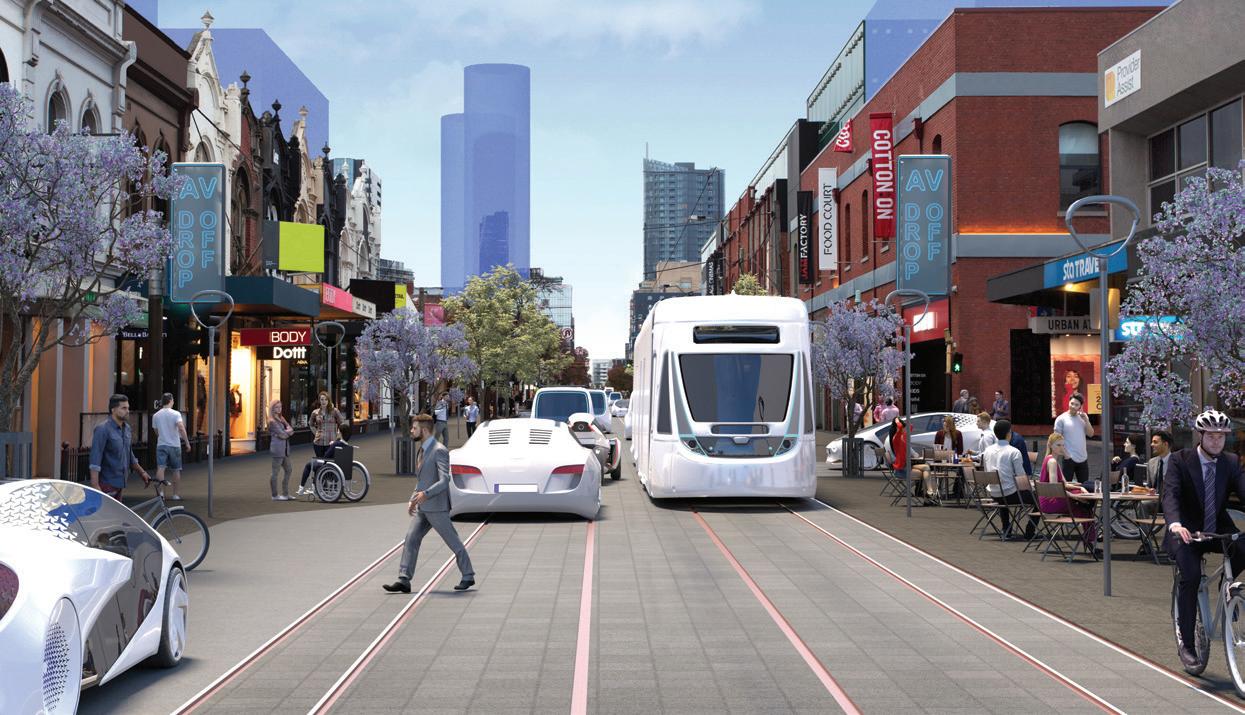
www.infrastructuremagazine.com.au September 2018 // Issue 8
41 INTELLIGENT TRANSPORT SYSTEMS (ITS)// PARTNER SOLUTIONS
Chapel Street reimagined under the Fleet Street scenario (100% shared driverless and zero emissions vehicles)
Source: Urban Circus and Ethos Urban
THE FUTURE OF ROBOTICS IN INFRASTRUCTURE
Robotics and automation are well placed to help Australia’s infrastructure industry overcome future challenges, as foreshadowed in Australia’s first Robotics Roadmap, pioneered by the world-leading Australian Centre for Robotic Vision.
The sector is experiencing some real and pressing challenges. Among these are an expected 50 per cent population spike over the next three decades alongside an aging population; increasingly expensive housing and shortage of social housing; urban sprawl; heightened congestion; changing climate; and security risks.
The good news is that robotic technology – dependent, of course, on the swift development of a national investment strategy – can provide a cost-effective and safe means to build, manage, maintain and decommission infrastructure, especially in remote areas.
Automation is predicted to deliver Australia a $2.2 trillion dividend over the next 15 years if businesses, including those in the infrastructure industry, accelerate their uptake of new technologies such as robotics.
Released on 18 June 2018, the Robotics Roadmap is critical to unlocking Australia’s potential – building national wealth, well-being and sustainability – in the face of the nation’s current ranking of 18th for global automation by the

International Federation of Robotics.
Australia has a talented pool of robotics leaders and researchers. The opportunity is ripe to take a collaborative, multi-sector approach to education, funding and legislation to benefit industries and lead the way in the development of robotic technology that can solve real global challenges.
REDUCING RISK IN HEAVY LIFTING
In the infrastructure industry, the sheer scale of projects means that even a small improvement in efficiency can lead to substantial cost savings. What’s more, the automation of heavy machinery has the potential to bolster not only efficiency but also safety in construction operations involving complex tasks in a range of unstructured environments.
That said, despite a strong safety culture, the industry remains dogged by risk, mirrored in 401 construction site fatalities in the 10 years prior to 2013, and an estimated 35 Australian construction workers seriously injured every day. Robotic technologies have the potential to reduce injury and fatality rates, while increasing productivity in harsh,

September 2018 // Issue 8 www.infrastructuremagazine.com.au 42 CRANES & HEAVY LIFTING
A Robotics Roadmap for Australia was launched in Canberra on 18 June
Vision systems on heavy machinery can help to protect nearby workers. Photo credit: Laing O’Rourke.
geographically large and perpetually changing environments.
Construction sites are busy places. Many contractors work in close proximity to heavy vehicles and where heavy lifting occurs. In this environment, consultation, cooperation and coordination are essential to ensure the health and safety of everyone on-site.
Typical robot technologies, such as motion control, navigation and computer vision, are increasingly integrated in previously manned heavy lifting platforms such as cranes.
Advances in technology will see robotics tackling increasingly complex physical and cognitive tasks. There will also be a strong industry need for regulation technology (RegTech), robotic and vision systems that can be deployed to monitor and enforce worker safety, and identify and ameliorate potential hazards.
FILLING THE SKILLED WORKER GAP
Robotics and automation can help remedy ongoing skills shortages in the infrastructure industry; a hangover of jobs vacated by an aging workforce and reluctance among younger generations
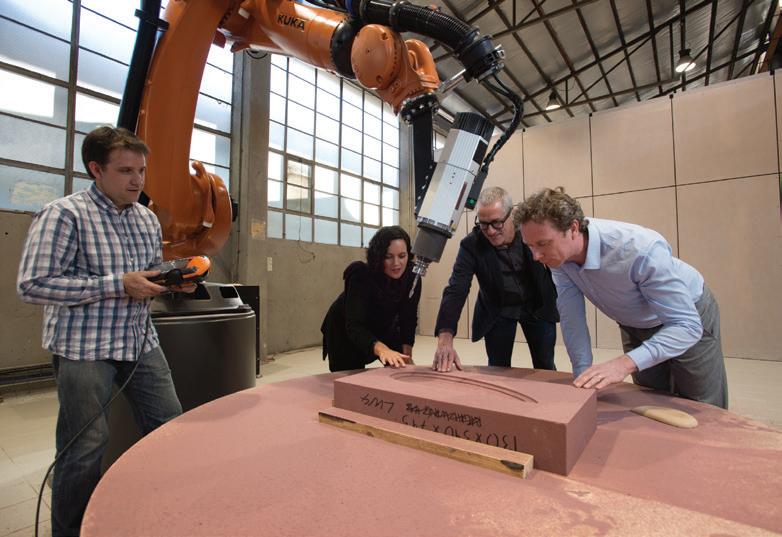
to pursue traditional occupations.
Ironically, 40 years ago, robots were viewed as the solution to labour shortages in construction. In reality, the diffusion of such technology has been low.

Unlike the manufacturing sector, infrastructure projects are often unstructured, cluttered, variable and congested, making them difficult environments for robots to operate in.
The advent of new technologies allowing customisation, rapid take up of additive manufacturing processes, networked manufacturing equipment and increasing data integration, means that robotics is beginning to be adopted in infrastructure.
Typical processes that can be automated include materials handling, materials shaping (cutting, breaking, compacting, bricklaying, machining) and structural design. Furthermore, robotics is increasingly seen as an enabler for architectural design, allowing custom, one-of-a-kind, sometimes additive buildup of complex structures.
ROBOTICS IN INSPECTION AND MAINTENANCE
Despite the decline in resource-related construction, a large number of major infrastructure projects have still been committed to, or are under construction in areas where the resources sector dominates, such as northern Australia. Due to their remote location, these projects present unique challenges in transport of materials, supply of labour and communications. All areas in
www.infrastructuremagazine.com.au September 2018 // Issue 8 43 CRANES & HEAVY LIFTING
UTS have developed a robot that inspects critical water mains. Photo credit: UTS
Brisbane company UAP is using robots to help create complex building facades. Photo credit: UAP.
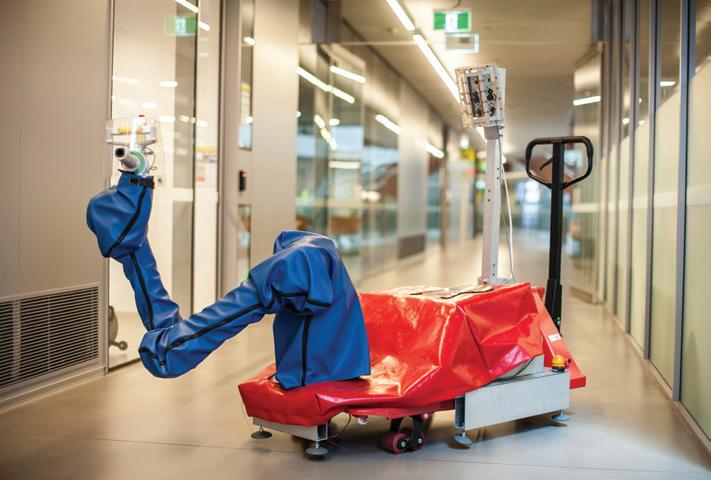
which robotic technologies can play a vital role.
There is also tremendous potential for application of these technologies in the inspection and maintenance of Australia’s extensive network of existing infrastructure, covering on/ above ground structures, below ground structures and underwater structures.
ON/ABOVE GROUND STRUCTURES
Infrastructure like buildings, roads, bridges, power/communication towers, wind turbine blades, solar power assets and ports can be inspected cost effectively using unmanned aerial
vehicles (UAVs) and remotely operated aircraft systems with a suite of sensors including cameras.
These platforms are increasingly becoming robust, stable and efficient; showing extended longevity with inherent larger payload handling capacities.
Basic inspection using CCTV technology has been in the market for many years, while biologically-inspired robots, capable of climbing complex tower structures, are being developed to carry out hectic and unsafe inspections. Robots operating in constrained, undesirable environments such as
About the world first Australian Centre for Robotic Vision
The Australian Centre for Robotic Vision is an ARC Centre of Excellence, funded with $25.6 million over seven years to form the largest collaborative group of its kind, generating internationally impactful science and new technologies that will transform important Australian industries and provide solutions to some of the hard challenges facing Australia and the globe. Formed in 2014, the Australian Centre for Robotic Vision is the world’s first research centre's specialising in robotic vision. A group of researchers on a mission to develop new robotic vision technologies to expand the capabilities of robots. The center's work will give robots the ability to see and understand for the sustainable well-being of all people and the environments we live in.
The Australian Centre for Robotic Vision has assembled an interdisciplinary research team from four leading Australian research universities: QUT, The University of Adelaide (UoA), The Australian National University (ANU), and Monash University, as well as CSIRO’s Data61 and overseas universities and research organisations, including INRIA Rennes Bretagne, Georgia Institute of Technology, Imperial College London, the Swiss Federal Institute of Technology Zurich, University of Toronto and the University of Oxford. For more information, visit www.roboticvision.org
inspection of bridge arches and girders are being developed and deployed. For example, complex inspection of Sydney Harbour Bridge’s arches is now a reality using biologically-inspired inchworm robots. Autonomous grit blasting robots, Sandy and Rosy, have been removing the paint off Sydney Harbour Bridge since 2013.
Roads and railroads are expected to be inspected through highly efficient and accurate automated technologies for detecting defects, such as quality of lane markings, cracks and potholes, through multimodal data fusion methods. They are expected to be repaired by highly automated processes.
Smart roads conceptualise the built-in intelligence to the infrastructure by embedding cameras, automatic toll readers and other sensors to effectively manage traffic gridlocks, parking, on-demand and multimodal transport, response to incidents and other related issues while improving safety, efficiency and cost.
The information made available to autonomous vehicles can improve the situational awareness to a greater extent, leading to efficient journey planning and advanced navigation capabilities in crowded urban roads.
The Australian Government is already trialling ‘vehicle to vehicle’ and ‘vehicle to infrastructure’ communication systems as part of the cooperative intelligent transport initiative.
Sensing and vision systems are already heavily used in building information and inspection systems. Smart buildings with embedded sensors can efficiently control the building management systems to reduce waste while improving the quality of life.
Building inspection systems with unmanned aerial vehicles (UAVs) and climbing robots can reach difficult to access areas with ease, avoiding workplace health and safety issues associated with human operators.
BELOW GROUND STRUCTURES
Infrastructure such as oil/water/ wastewater pipes; large diameter tunnels; long-haul stretches; inverts; crowns; culverts; and manholes are difficult to access and may have other challenges such as presence of debris, highly corrosive chemicals and pressurised water/oil.
44 CRANES & HEAVY LIFTING
September 2018 // Issue 8 www.infrastructuremagazine.com.au
UTS developed sandblasting robot. Photo credit: UTS
Robotic platforms are increasingly able to navigate such harsh environments over extended time periods, producing CCTV, 3D reconstructions and defect profiling with ground penetrating radars, laser sensors and sonars.
They can somewhat adapt to pipes with different sizes, shapes and materials to accurately estimate the remaining ‘intact’ material for end-of-life estimations.
Furthermore, they are capable of preventative maintenance in terms of laying different types of liners and coatings. The sensing and robotic aspects of liners and coatings are further investigated in the recently announced multinational 31-member partnership with CRC-P on smart linings for pipes and infrastructure.
A variety of robotic platforms are used for monitoring underwater structures, which include unmanned underwater vehicles (UUV), unmanned surface vehicles (USV), remotely operated vehicles (ROV) and submarines.
They have cameras, acoustic and other sensors for inspection of oil and gas pipes, ship hulls, underwater pylons, dams and ocean beds.
The robotics and vision systems are not only expected to carry out inspections, but also frequently used to carry out cleaning, paint/corrosion removal, repairing (welding) and deepsea operations.
NON-TECHNICAL CHALLENGES IN INFRASTRUCTURE
Over the next decade, intelligent robotic technologies will have a significant impact on transforming smart infrastructure, inspection and maintenance. However, these transformations are wrought with
challenges: technical and non-technical. Non-technical challenges include:
♦ High cost of development, market penetration and certification
♦ Acceptance of the technology by the workforce due to fear of losing jobs
♦ Public acceptance of the technology
♦ Acceptance of broad legislative and insurance frameworks
♦ Data security and privacy issues
♦ Requirement of early high-quality demonstration and completeness before adaptation
TECHNICAL CHALLENGES IN INFRASTRUCTURE
As identified in the Australian infrastructure plan, Australia has a large infrastructure maintenance backlog, specifically in public owned/operated assets. There is definitely a gap in technology dealing with effective and efficient inspection and maintenance. Inspection needs robust sensing modalities including vision and deployment strategies such as robotics. Maintenance requires sensing and robots as well as the manipulation and actuation capability. The technologies need to be safe, efficient, robust, easy to use and low cost to operate.
♦ Safer designs: establishment of acceptable levels of safety and safety certification for systems, driven by advances in systems design methods that integrate safety into the design cycle, guaranteeing safety performance
♦ Perception and control in complex operations: significant improvements in perception, localisation, and motion control systems both in dynamic and
About the author
Dr Sue Keay is the Australian Centre for Robotic Vision’s Chief Operating Officer, responsible for the effective leadership, management and development of the centre’s research, education and knowledge exchange programs. A university medallist and Jaeger scholar, Sue has more than 20 years’ experience in the research sector, managing and ensuring impact from multidisciplinary R&D programs and teams. She has a PhD in Earth Sciences from the Australian National University and was an ARC postdoctoral fellow at The University of Queensland before escaping the lab and moving first to science communication and then into research management, research commercialisation and IP management. In 2017, she was named one of the first Superstars of STEM by Science & Technology Australia.
unstructured 3D terrains, underwater and on the ground, and in terms of handling the effects of extreme conditions on perception and localisation
♦ Locomotion: in complex structures such as towers, multi-shaped tunnels and pipes, bridges, chimney stacks, underwater structures and tall walls
♦ Multi-robot cooperation: command and control of teams of both heterogeneous and homogeneous robots including mixing robot teams with human teams working in close collaboration; scene interpretation; and cognitive interpretation of both object and environment
There is also growing public expectation that infrastructure (such as access to water and the Internet) will function at peak levels at all times, regardless of challenges created by extreme weather events or natural disasters.
The bottom line is that advanced robotic technologies are necessary to ensure both our high standard of living, and the success and prosperity of all sectors of the economy reliant on essential infrastructure.
Quite simply, robotics, as a transformative technology, can revolutionise Australia’s economy in construction and resource sectors, leading to a new era of smart resource and infrastructure management, positioning Australia’s global competitiveness in this area. The missing link holding our nation back is in the knowledge and integration space.

www.infrastructuremagazine.com.au September 2018 // Issue 8 45 CRANES & HEAVY LIFTING
Dr Sue Keay, Chief Operating Officer, Australian Centre for Robotic Vision. Photo credit: Tim Macuga

TUNNEL VISION
September 2018 // Issue 8 www.infrastructuremagazine.com.au 46 TUNNELS

 by Ed Taylor, President, Australasian Tunnelling Society ATS, a technical society of Engineers Australia
by Ed Taylor, President, Australasian Tunnelling Society ATS, a technical society of Engineers Australia
In Australia, the recent growth of infrastructure projects that involve the use of the underground space as a part of the solution is a real boost for the local tunnelling industry. There are also many emerging trends and technologies that the underground industry must address in order to find better ways to complete these projects and reap the benefits.
www.infrastructuremagazine.com.au September 2018 // Issue 8 47 TUNNELS
Most of the current projects have been on the radar for many years in the planning phase, with their timing being influenced by political processes and influences. We have also seen what were once surface solutions being driven underground to satisfy community demands.
The number of future projects that almost certainly require a tunnel to enable them to be feasible in our highly developed cities is also quite significant. To avoid hindering these projects from coming to market, it is incumbent on industry to find solutions that are smart, sustainable and environmentally sound. If this philosophy can be adopted appropriately, the outcomes should also be cheaper to build and have lower whole-of-life costs.
CURRENT INDUSTRY TRENDS
It would seem that Australia prefers to procure its underground projects on the basis that ‘bigger is better’. The trend for even larger infrastructure projects, often driven by the proponents’ preferred PPP delivery arrangement, has both benefits and some downsides.
It is not unusual for these works to have a long planning gestation which is most likely appropriate for the best transport or infrastructure outcome to be achieved. Unfortunately, the delivery of the whole project will almost certainly extend across state or federal political terms and therefore the ‘best planning solution’ may be altered down the track because of short-term drivers.
The market consistently seeks that there be transparency on timing and that they receive bipartisan support to ensure that the financial model and construction teaming can be aligned for certainty of delivery.
To deliver these big projects, large teams are required and are almost certainly all procured by joint ventures with multiple companies and disciplines, each with their differing systems and cultures. It has been shown generally that two party joint ventures work the best, but this has the impact of limiting the maximum project cost to around $3 billion.
To develop a joint venture culture which can deliver outstanding safety and quality outcomes, be environmentally sound, and deliver on time and within budget results, is a big ask. There are several examples of projects that have failed in one or more of these important goals.
There are many other delivery models around the world, many of which are based on numerous smaller contracts delivered by a single entity utilising established streamlined management and delivery systems. However, the Australian tunnelling market, in partnership with many international players, has the ability to deliver quality infrastructure on a larger scale.
MULTIPLE LARGE PROJECTS AT ONCE
This is the current state of play in Sydney and Melbourne. To put this into perspective, late last year, the suite of Sydney road tunnels saw upwards of 50 road headers operating at once. The introduction of two new metro rail projects and a large diameter machine-bored road tunnel has now introduced over ten new tunnel boring machines, all of which are currently under manufacture.
Despite the number of tier one European and Asian contractors joining the local market, the issue of resourcing is still significant. Appropriately experienced technical staff are
already stretched to the limit despite the influx of staff from overseas companies. Almost all of the engineering houses are engaged on one or more projects and quality tunnel design staff are becoming very thin on the ground.
The same also applies to the skilled workforce. We have in recent years seen the establishment of training hubs on major projects to train workers in many of the unique tunnelling skills required. This must grow to full recognition of formal qualifications in tunnelling, with transferability across projects having a positive benefit for both the individuals and employers.
This trend may be seen as good for the economy, but many of the additional overhead costs associated with the resourcing and procurement constraints will become buried in the total community cost of these new projects. This could be alleviated by sensible programming across the states and their infrastructure businesses, levelling out the peaks and troughs, and creating a more streamlined and ongoing sustainable tunnelling market.
OPERATIONAL LEARNING
There are some interesting developments coming out of the fact that many of our ‘modern’ infrastructure tunnels (generally in the road space) are of an age where operational and performance issues are questioning the original design intent. From a tunnel systems perspective this is understandable as new technology is an ever-developing reality, and a number of tunnels are currently undergoing, or planning, system upgrades in the near future.
The whole traffic mix including electric and driverless vehicles and the use of artificial intelligence as an operational medium will also see the need for fundamental reviews of existing operating systems.
There are also questions being raised against the design philosophy of the primary tunnel structure as, over time, we are gaining a better understanding of the real impact on design life. Are we looking at a realistic tunnel maintenance regime in the longer term? On the positive side, some of our new tunnels are being appropriately specified to address some of these operational deficiencies.
ISSUES AND CHALLENGES IN THE SECTOR
The discussion on trends has highlighted a number of real issues that face our industry now and will continue in to the future. The aspect of operational learning as mentioned before is seen as a real issue because there is no coordinated industry-wide mechanism to appropriately capture the operational knowledge and feedback which needs to flow back into the planning and design process. This is needed to ensure future new infrastructure benefits from what the operators are having to deal with today. Things like design guides and specifications, product and material specifications, construction guidelines and the like all need to benefit from a proper review of operational findings.
Health and well-being
The health and well-being of our tunnel workers must also always be given high consideration in the planning, design, construction and operational phases of an underground project. It has been enlightening to see the workings and outcomes to date from the industry driven Air Quality Working Group in Sydney. This working group brings together clients,
September 2018 // Issue 8 www.infrastructuremagazine.com.au 48 TUNNELS
regulators, contractors and health professionals from across all current road and rail tunnels under construction in the Sydney basin to focus on the issue of airborne silica and its impact on all underground personnel. The genuine desire by all participating members to come up with real solutions for the benefit of worker health will see some recommendations that may significantly challenge the way we work and manage such projects in the future.
Professional skills shortage
The professional skills shortage within the local tunnel consulting industry has seen, in some cases, a watering down of experience and particularly local knowledge. There are hidden risks here especially where high risk underground solutions are proposed. The influx of experienced practitioners from around the world is clearly necessary and good for the industry, but there needs to be recognition that local environment and ground risks must be truly understood and not underestimated.
ADAPTING TO NEW TECHNOLOGIES
I had the pleasure of chairing a whole afternoon’s session at this year’s World Tunnelling Conference in Dubai, with the session topic being innovation in materials technology. There were several papers on spoil conditioners for use in EPB tunnelling, but the paper I enjoyed the most was on the use of graphene in concrete. The potential benefits in high strength concrete using much less cementitious product has to be good.

Concrete is a major building block in almost all of our infrastructure projects underground, but it is also one of the highest offenders in the production of global warming gases. The sustainability drivers on all new projects can only nibble away at some reduction in the environmental footprint where cement is used. But in saying that, the pressure is there, and the likes of graphene and geopolymer concrete are the sorts of initiatives that could deliver a step-change in concrete technology in the near future.
The growing adoption of 3D modelling in all aspects of concept, design and construction planning is no longer anything new, but the adaption of robotics and artificial intelligence into much of the most risky underground construction activities could make tunnel excavation and support no longer a man-entry process and could leave some of the tunnellers sitting behind a computer screen.
Smart monitoring systems will be essential in making such an activity work, and the same technology, when applied to the monitoring of permanent built assets, should have real benefits in optimising maintenance and planned replacement activities during the operational phase. This is very important in operating transport tunnel environments where any tunnel shut down, with loss of serviceability (revenue in the case of tolled tunnels), can be an extremely expensive exercise.
The time for dreaming is over, there are golden opportunities out there that can reduce the cost of what many see as a very expensive component of an infrastructure asset. We tunnellers must grab those opportunities with both hands and run with them!
133 Bluestone Circuit, Seventeen Mile Rocks, QLD, 4073
Tel: +61 7 3714 5700
Fax: +61 7 3715 8813
Email: info@hmi.com.au
Web: www.hmi.com.au PO Box 1467, Kenmore, QLD, 4069

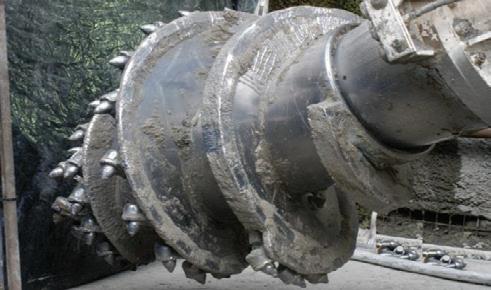

www.infrastructuremagazine.com.au September 2018 // Issue 8 49 TUNNELS
• CANOPY TUBES • TUNNELLING • FOUNDATION • MICRO PILING






WATER SCIENCE TECHNOLOGY


11–14
CORROSION & PREVENTION 2018

The annual ACA conference is a 3 day gathering of world experts on corrosion mitigation. This will be a premium networking event as well as a source for the latest information concerning corrosion mitigation. Entitled Corrosion & Prevention 2018, the conference will comprise a program of keynote speakers and presentations under a range of industry ‘streams’, integrated with an exhibition that will showcase the latest products and services of the corrosion mitigation industry.
Over 500 delegates and visitors are expected to attend from industries such as; protective coatings, water, defence, building and construction, mining, oil & gas, cathodic protection, power and more.


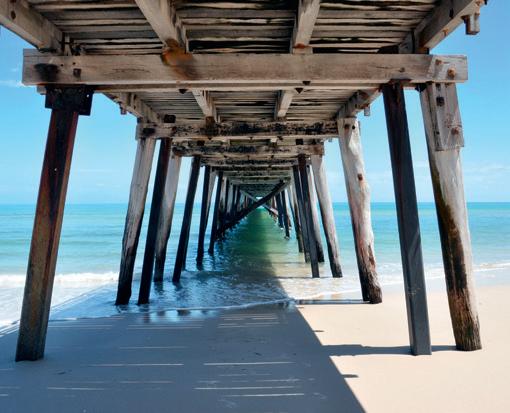
C&P2018 INCLUDES:
• Quality Technical Program
• 72 Booth Trade exhibition
• Social & Networking functions
PLENARY LECTURERS



• Various Forums
• Awards Dinner
• Partner Program
Professor Brian Kinsella Deputy Director Applied Corrosion Research and Testing, Curtin Corrosion Engineering Industry Centre, Faculty of Science & Engineering | School of Chemical & Petroleum Engineering, Curtin University, Australia
Dr Laura Machuca Lecturer, CCEIC, Curtin University
Associate Professor Geoffrey Will Science & Engineering Faculty Queensland University of Technology


Miles Buckhurst Global Concept Director – HPI Jotun, Norway

Paul Vince Associate Materials Engineer, Water, WSP
+ more to come

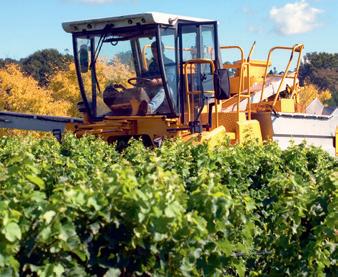
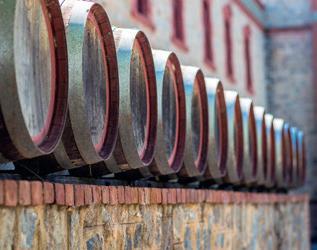

ADELAIDE
PROUDLY PRESENTED BY: MAJOR SPONSOR: Standard Jotun blue Black and white For more information and to register go to: conference.corrosion.com.au
NOVEMBER 2018 |
CONVENTION CENTRE
WHERE HAVE ALL THE CONCRETE EXPERTS GONE?
 by David Millar, CEO, Concrete Institute of Australia
by David Millar, CEO, Concrete Institute of Australia
Concrete is the most widely used construction material in the world, and the second most consumed substance globally behind water. In fact, the amount of concrete used worldwide is greater than the combined amount of timber, steel and other materials used to construct and build.
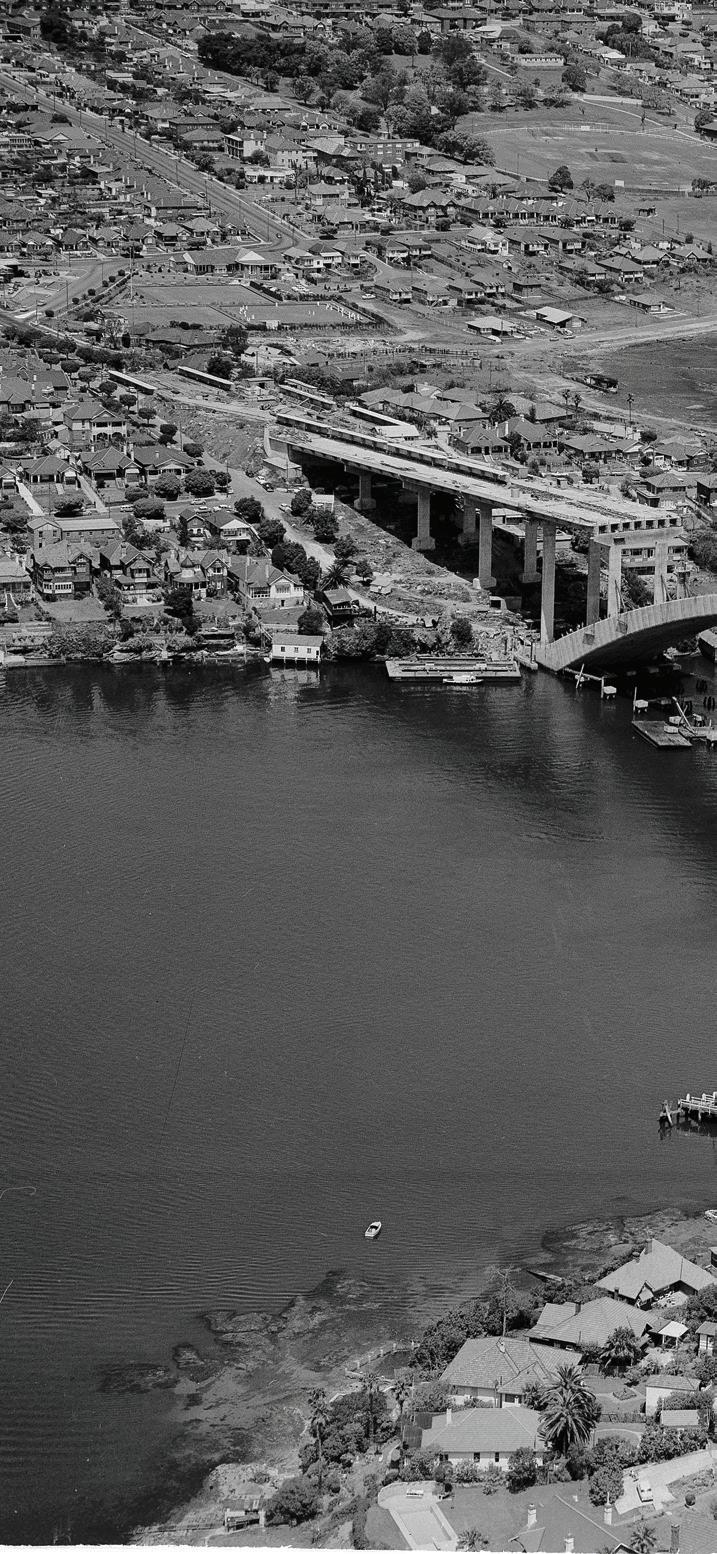
September 2018 // Issue 8 www.infrastructuremagazine.com.au 52 CONCRETE AND CULVERTS

www.infrastructuremagazine.com.au September 2018 // Issue 8 53 CONCRETE AND CULVERTS
Gladesville Bridge during construction.
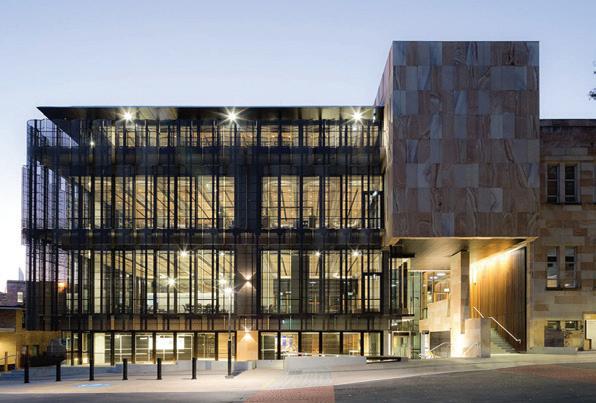
Dating back to early Egyptian times, humans have mixed together the basic ingredients of concrete from sand, gravel, cement-like binders and water for thousands of years. This was refined during Roman times where volcanic ash, or pozzolana, was used in concrete mixes due to its availability, and this reduced cracking and improved the durability of the finished product.
It’s no surprise that the product has endured as its properties lend itself to resistance against weathering, erosion, chemical attack, environmental exposure and natural occurrences, requiring very little maintenance.
Concrete’s continued popularity comes from the fact that it is not only economical but it is very strong and durable. When compared to other building materials, concrete has the capability to outlast them all significantly. It can even gain strength over time. Concrete is also an extremely versatile material and can be used to construct buildings, bridges, dams, tunnels, pavements, runways and roads. In fact, just about everywhere you look, you will find something built with concrete.

RICH HISTORY OF CONCRETE APPLICATION
When you take a moment to analyse this, you can start to gauge the significant contribution concrete has made to society and the environment we live in. Australia, it should be
noted, has led the world in many aspects of concrete and its application over the last 150 years, and continues to do so. Some of our achievements include:
♦ Centrifugally spun concrete stormwater and sewer pipes, first manufactured in 1910 by Walter Hume, which have been patented and made around the world
♦ The Gladesville Bridge in Sydney, when constructed in 1965, was then the world’s largest concrete arch span bridge
♦ The Sydney Opera House saw a world record number of precast concrete panels being used in construction in the 1960s and 1970s
♦ The first Gateway Bridge built in Brisbane, 1986, had the largest span, centre to centre to two piers in the world
♦ The Burdekin Falls Dam in Ayr was the first modern gravity dam in the world constructed horizontally with conventional concrete
♦ The Climate Change Institute at the University of Queensland in 2013 was the first use of geopolymer concrete for structural purposes
These, along with many other fabulous achievements in a rich history of concrete application in this country, are born on the back of a very solid understanding of the base material that in its simplest form consists of only four materials.
Yet it is an incredibly complex and interesting material. Despite the material having being around for hundreds of years, and providing many advantages to the built environment, it continues to be developed as new materials arise, and society and environmental changes need to be embraced. This is resulting in an unprecedented amount of research and investigation into new concrete materials, design and construction practices, and maintenance techniques and modelling, as the industry continues to strive to raise the bar.
A NEW BREED OF CONCRETE TECHNOLOGISTS
However, with all these changes, something appears to be missing. In Australia today, there are a large number of stakeholders in this industry who contribute to research and knowledge development, as well as designing, producing and constructing concrete, with the objective of ‘getting it right’. Significantly, these stakeholders all understand the importance of concrete and the role it plays in engineering and society, but do they know enough about the base material?
At the recent Concrete Institute of Australia event, The Performance of Concrete – Materials & Specification, which focused on the materials we use for concrete in Australia today, this question was posed to me: Where have all the concrete experts gone?
Whilst this question is a vast generalisation – we have some of the best concrete materials technologists and practitioners in the world – it is fair to say that there isn’t a big line of people waiting to take over when our experts in this area retire and move on to other things. Why is this?
There is a changing landscape in engineering and construction in Australia today. Concrete as a material is feeling this impact as the major stakeholders in the industry are all moving with the times. So why isn’t there a new breed of concrete technologists knocking the door down?
Is it because of changes in engineering courses? With such a focus on innovation and new materials, universities are turning
September 2018 // Issue 8 www.infrastructuremagazine.com.au 54 CONCRETE AND CULVERTS
Spun pipe.
Global change institute.
their attention more and more to research activities. There is also a trend that sees curriculum being set that appeals to a broader base of potential students to remain competitive and modern. As such, some courses have reduced their concrete materials content considerably, attempting to cover the complexities of the material in a short period of time (if at all).
Once upon a time, materials engineering and science was a significant part of a civil engineering students load. As a result, there was a good understanding of basic concrete materials fundamentals, and if desired, students could further the knowledge in specific areas as they advanced. Due to many changes in the way university courses are structured today, have the opportunities for more detailed and thorough learning of materials technology waned?

INDUSTRY TRANSFORMATION
Is it because of changes in the construction industry? Is everyone so conscious of delivering projects on time, and under so much pressure to deliver, that having concrete materials experts as part of the everyday team to ensure that the right design, specification and supervision, is not seen as being viable to the overall efficiency?
Designers and specifiers are under pressure to deliver outcomes for consulting groups in an ever increasing competitive space. This is further emphasised by the influx of large global organisations that are positioning themselves in Australia, and their need for accountability and performance. Is there enough attention being placed on understanding concrete essentials?
Suppliers are under pressure to meet growing demands for a product that must be available at a moment’s notice, meet numerous specification requirements, adapt to changing conditions and trends, yet must remain economical. Along with concerns with ongoing natural resource availability, this could be having an impact on the quality of our raw materials and finished products.
The knowledge gap experienced at government level (local and state) has been identified for some time now. This has led to a change in specification philosophy at many organisations with an emphasis on reducing the risk in concrete design, production and placement due to diminishing resources and experience.
The construction sector continues to move at a rapid rate of knots, and as they look to maximise efficiencies and effort, ensuring that projects are completed on time and within specification, is there enough time and experience being devoted to ensure that the concrete being used is of the quality required for the structure?
Is it because of changes in the way we continue to learn? Not that long ago after leaving university, if you needed specific training or revision of aspects of concrete materials, design and construction you were straight off to a one or two day course to get up to speed. Or, you were off to a precast yard or ready mix concrete plant to learn the basics. Bookshelves had copies of A.M. Neville’s Properties of Concrete for reference. These days professional development requirements at organisations, along with training and education platforms, have changed. Is the knowledge required in concrete materials able to be transferred via modern learning methods?
GETTING BACK TO BASICS
The real question that should be asked from all of this is, with all this pressure to compete, perform and act efficiently, is it having an impact on our knowledge, design and application of concrete construction in Australia?
Michael van Koeverden from CQT Service, and Immediate Past President of the Concrete Institute of Australia, recently said, “While advances have been made in admixtures, binder and aggregate production, fitments, testing and repair materials, the root cause behind many of our concrete problems is neglect of the basics.
“All areas of the concrete industry need to have an understanding of concrete the material and how it works. Designers must consider whether their designs can be built. Constructors must ensure they allow for realistic construction time frames with experienced supervision part of the process. Placing, compaction and curing of concrete must be undertaken correctly for all concrete construction. You only get one chance to ‘get it right’ with concrete, so asking the right questions at the right time is essential to getting the right outcome.”
These innovations, and many others, demand that the industry be focused, knowledgeable and willing to take a chance in challenging established products and procedures. It also means that we must be armed with the essential knowledge of a material that may look simple but can be incredibly complex.
The concrete construction industry in Australia has a history that is based on hard work and sound knowledge. As we continue to use more and more of the world’s most used construction material, in today’s changing landscape, more than ever we must ensure that everyone has the basic knowledge of this complex material called concrete.
It is with a small slice of irony that in Melbourne in October the Concrete Institute of Australia will play host to the largest gathering of international concrete experts ever seen in this country at the International Federation of Structural Concrete (fib) Congress 2018. At the time of writing, there were over 400 delegates from over 40 countries registered to attend with over 700 people expected by the time the congress commences. There may never be a better opportunity in this country to ‘start knocking on the door’ and get back to basics.
www.infrastructuremagazine.com.au September 2018 // Issue 8 55 CONCRETE AND CULVERTS
Song school.
IS AUSTRALIAN INFRASTRUCTURE FUTURE READY?
by Dr Roberto Perez-Franco, Senior Research Fellow in Supply Chain Strategy, Centre for Supply Chain and Logistics, Deakin University
A recently published report on a scenario planning exercise conducted last year for the Government on the future of freight and supply chains in Australia has highlighted interesting insights into the future readiness of our infrastructure.

Last May, during the 9th meeting of the Transport and Infrastructure Council in Darwin, the Hon Michael McCormack MP, Deputy Prime Minister and Minister for Infrastructure and Transport, released the highly anticipated final report of the Inquiry into National Freight and Supply Chain Priorities. Led by an industry expert panel and conducted by the Department of Infrastructure, Regional Development and Cities (DIRDC), the Inquiry represents the starting point for a National Freight and Supply Chain Strategy for Australia, to be released early next year. A key component of that Inquiry was a scenario planning project, commissioned by DIRDC, and conducted last year by the Centre for Supply Chain and Logistics (CSCL) at Deakin University. The project made use of a scenario planning methodology developed between 2010 and 2012 by the Massachusetts Institute of Technology (MIT), as part of a similar project conducted in the United States called Future Freight Flows (FFF). I served as the lead of Deakin’s scenario
planning project for DIRD and was – before joining CSCL –part of the core research team that developed the scenario planning methodology at MIT and conducted the FFF Project.
CREATING THE SCENARIOS
The process of creating the scenarios started with a series of 52 in-depth interviews with experts in different areas that are relevant to freight, logistics and supply chains in Australia, to explore what developments they anticipate could take place over the next two decades. A careful analysis of these interviews, supplemented with a review of written reports, revealed more than 200 different future drivers of change (such as artificial intelligence and driverless cars), which were grouped into 43 families. The expected impact and likelihood of each family was then assessed through a survey with 124 respondents.
Two areas, including a total of seven families of future drivers of change, emerged from the survey as the most
September 2018 // Issue 8 www.infrastructuremagazine.com.au 56 FREIGHT AND LOGISTICS

powerful and uncertain: first, the widespread use of automation technologies; and second, an increased pressure towards environmental sustainability. These two areas, along with a total of 32 families of future drivers of change that were considered beyond the control and influence of Australia, became the ingredients used to create a set of four future scenarios imagining the world in 2037. These included: (1) Rise of the Machines, a world where technology is ubiquitous and machines displaced many workers; (2) Enter the Dragon, where China is the dominant force in an increasingly fragmented world; (3) Flat, Crowded and Divided, where easy access to cheap labour has nullified any hopes of a technological revolution; and (4) Big Brother Goes Green, where the effects of climate change push governments and consumers to demand high environmental standards.
 Dr Roberto Perez-Franco, Senior Research Fellow in Supply Chain Strategy, Centre for Supply Chain and Logistics, Deakin University
Dr Roberto Perez-Franco, Senior Research Fellow in Supply Chain Strategy, Centre for Supply Chain and Logistics, Deakin University
A central narrative was crafted for each scenario, as a rich description of the future, full of elements that are relevant and challenging to supply chains and freight. The scenarios were designed to be plausible to people in industry, as well as internally consistent, thoroughly different from the present and from each other, and complementing each other as a set. To illustrate what the world might look like in each of these futures, several “news articles” accompany each scenario. Detailed brochures for the four scenarios are available online at cscl.space/scenarios.
In them we can read about a fleet of robots that deliver parcels by air and ground directly to Australian homes, or about the case of a local winery that just shipped a container of Australian wines from Victoria to Shanghai using exclusively autonomous ships and vehicles, without the intervention
www.infrastructuremagazine.com.au September 2018 // Issue 8 57 FREIGHT AND LOGISTICS

of a single human. In one scenario, China has become the sole dominant power in its half of the planet. In another, the world economy has fragmented into blocks, with barely any trade between them. Cyber attacks, terrorism and slander are used as weapons to disrupt supply chains in one scenario. In another, a whole new generation of consumers, the Alphas, demand high levels of service and fast delivery in everything they buy.
USING THE SCENARIOS
These scenarios are not only thoroughly grounded in data but also make for an engaging and stimulating read. However, they are not predictions; their purpose is not to forecast what the world will look like in 20 years. Instead, these scenarios present us with several versions of what the world might look like. Their purpose is to help us prepare for what the future could bring. One can think about scenario planning as a vaccine against future surprises.
The four scenarios we developed then served as the backdrop for a series of four workshops conducted across Australia, with the participation of 90 experts from different areas relevant to the supply chain, logistics and freight. In these workshops, the experts discussed the challenges and opportunities that each scenario presents to Australia and shared their recommendations for Australia to be successful in each one of these divergent versions of the future. More than 15,000 words’ worth of handwritten expert recommendations were collected from the workshops.
Careful transcription and analysis of these allowed us to identify the most frequent and robust ideas that were proposed. A summary of the findings from this project were compiled into a final report submitted to DIRDC in November 2017. That report, along with its appendices, have now been made public by the Government, along with the final Inquiry report, which stated that “CSCL’s work is one of the first serious pieces of scenario work in the Australian transport sector”.
MAJOR ROBUST RECOMMENDATIONS
A major theme in the experts’ recommendations that is common to all four scenarios is the ever-growing importance of data. For Australia to be successful in any of the futures we envisioned, large amounts of relevant, timely and reliable data must be gathered and shared. This will require developing open and common data standards, and balancing the need to protect confidentiality with the need to share data.
A second major theme that is common to all four scenarios is the need for future-ready skills and education. We were told that training in robotics, automation, artificial intelligence (AI) and data analysis should be widely available. A focus on science, technology, engineering and maths (STEM) should start in Year 1. Workers who are displaced by new technologies should be retrained, so they can re-enter the workforce, or be compensated.
A third major theme, robust across the four scenarios, is the need to rethink regulation. For Australia to be successful in any
September 2018 // Issue 8 www.infrastructuremagazine.com.au 58 FREIGHT AND LOGISTICS
of the futures we explored, the experts told us it is necessary to simplify, standardise and harmonise regulations across levels of government and geographies. Regulations, and the process to create them, must become more flexible and agile, to promote innovation while protecting consumers and the environment.
Other robust recommendations that are necessary for Australia’s success in all four scenarios include making exports faster and easier, and including logistics as a consideration in urban planning from the start instead of as an afterthought.
Because they were explicitly mentioned by the experts as valuable in all four scenarios, there is no doubt that these recommendations concerning data, skills, regulations, exports and urban logistics are robust. This means that, regardless of which way the future goes, within the wide realm of uncertainties that we anticipated in our scenarios, it makes sense for Australia to invest in these areas. Robust recommendations are relatively safe bets because they are expected to pay off handsomely in any event. As such, it would be advisable to act on them without delay.
RECOMMENDATIONS ABOUT INFRASTRUCTURE
Infrastructure was, by far, the area that received most recommendations in our workshops: a total of 71 recommendations were about infrastructure, compared to 58 concerning data and information, 54 concerning education and skills, and 54 concerning regulation. All other areas received less. However, although numerous, infrastructure recommendations were also less robust; the only one explicitly mentioned in all four scenarios was investment in seaports. What follows is a summary of the infrastructure recommendations that were received in our workshops.
Ports
We were told that for ports, planning ahead is vital. Australia must plan and develop efficient, high-capacity ports that are fit for purpose, rather than just adapting the infrastructure we already have. The economies of sea freight may shift, initially towards a focus on larger ships, but swinging back later towards medium-sized vessels visiting more frequently.
This would require more smaller ports, providing multiple points of entry and resilience. We must also ensure our channels and ports are deep enough and big enough to handle large vessels. Maximising port throughput will be important, and, depending on the scenario, could involve automation as well as rethinking the design of ships. Tackling the imbalance of empty containers is necessary.

Corridors
Corridors were mentioned as important in scenarios 2, 3 and 4. We were told that protection of supply chain corridors is essential to ensure growing populations are fed and supplied with the imports they require. Because our cities are increasingly urban and congested, we must maximise freight’s access to corridors.
Connectors
Connectors were mentioned by experts in scenarios 1, 2, and 3. We were told that efficient connectors from the regions
to the city are essential, particularly connecting the hinterland to ports. Some argued that we must ensure funding priority for the connectors, and – in the case of rail – the trains needed to transport the goods. Metropolitan connectors need to support the efficient import and distribution of goods in urban environments, while regional infrastructure needs investment oriented to agriculture.
Future-proofing
Emphasis on future-proofing existing infrastructure was explicit in scenarios 1, 3 and 4. Infrastructure and associated networks – such as roads, railways, ports and airports – need to be ready for autonomous vehicles and autonomous operation in the future. This infrastructure needs to be supported by an appropriate regulatory framework, and services such as charging stations for electric vehicles.
Multimodal hubs
Multimodal hubs were mentioned in scenarios 2 and 3. Industry participants, we were told, need to work together in a strategic approach to multimodal transport. True streamlined, decentralised multimodal hubs are essential. They require infrastructure to support modal interoperability, and a focus on the security of interfaces between modes.
Other recommendations about infrastructure, concerning investment and funding models, decentralization of hubs into regional areas, and air hubs dedicated to freight-only flights can be found in our report.
A NEXT STEP: ACID-TESTING
Why were most recommendations about infrastructure mentioned in some scenarios but not in others? It is entirely possible that their absence was the result of an omission. However, it could also be that these recommendations are contingent. Contingent recommendations, i.e. those that make sense in some scenarios but not in all, are not guaranteed to pay off; it is advisable to delay committing to them until we know which way the future is evolving.
To dispel any doubt about the robust or contingent nature of these recommendations, we would recommend conducting a series of ‘acid-testing’ workshops, where a select group of experts are instructed to evaluate the merits of these infrastructure recommendations against the backdrop of all four scenarios.
As a matter of fact, such a series of acid-testing workshops, focused on the tentative objectives and actions of the new National Freight and Supply Chain Strategy, would be very useful to ascertain its future readiness, and to generate timely recommendations for its improvement. We have presented to the Government a recommendation in this regard.
Regardless of whether any additional scenario planning work is conducted, the many insights obtained in last year’s project are now part of the results of DIRDC’s Inquiry and will provide a foundation to develop the National Freight and Supply Chain Strategy that the Australian Government is currently crafting. We hope our work will help those making long-term decisions to avoid future surprises that might not have been anticipated without a systematic examination of the many possible futures before us.
www.infrastructuremagazine.com.au September 2018 // Issue 8 59 FREIGHT AND LOGISTICS
CAN FREIGHT SAVE THE LUCKY COUNTRY?

 by Mike Gallacher, CEO, Ports Australia
by Mike Gallacher, CEO, Ports Australia
Australia has long been known as the lucky country, but how much luck did we make ourselves and how long can we keep the luck flowing?
September 2018 // Issue 8 www.infrastructuremagazine.com.au 60 PORTS

Cost of housing in our major cities has been growing at a rate never seen before, congestion in our cities is at an all-time high, and thousands of people are commuting for an hour or more one way to get to work. So much so that the Federal Government is working on long-term ambitious plans for building ‘30-minute cities’.
Nevertheless we do have plenty to be thankful for. Our lifestyle, freedom and natural landscape are the envy of most countries. Our accessibility to education and healthcare are world class. So why are we happy with an overly complicated supply chain and poor development of our cities and infrastructure that is raising the cost of living.
MEETING FUTURE DEMAND
Ports represent a significant player in the supply chain managing 98 per cent of Australia’s trade, we are well positioned to visualise that Australians are indirectly paying a premium for the inefficiencies in our freight transport network.
Road congestion in our capital cities continues to grow and is a challenge for government and increasingly frustrated road users. Australia’s population is growing and so is the domestic freight task. The National Transport Commission notes the domestic freight task increased by 50 per cent in the 10 years to 2016 and is forecast to grow another 26 per cent by 2026.
Furthermore, recent analysis conducted for the Inquiry into National Freight & Supply Chain Priorities indicated that while Australia’s freight task is projected to double in the next 20 years, even with extra investment, our current transport infrastructure will be hard pressed to meet this demand.
Australia simply does not have an adequate plan to deal with this growth and very shortly we will reach 25 million people as a nation.
CORRIDOR PROTECTION IS NEEDED
The current political response to this transport infrastructure problem are significant expenditure solutions that are increasingly focused on growing road user/commuter capacity. Case in point is recent investments in WestConnex and the widening sections of the M4 motorway. These infrastructure investments are well overdue for a burgeoning Sydney population and industry. However, these are reactive spending by government to tackle a problem that many in Sydney have faced for several years and hence we have the existing congestion and liveability issues. These two examples are mirrored across the country.
Current infrastructure development requires significant expenditure because many of the infrastructure corridors to facilitate the transport development were not planned for or protected by governments. According to Infrastructure Australia’s July 2017 report, Corridor Protection – Planning and investing for the long term, Australians could save $10.8 billion in land purchases and construction costs if adequate corridor protection occurs.
A current example we can all relate to is the Inland Rail. It does not connect to the port in either Brisbane or Melbourne, requiring potential double-handling of cargo from rail to trucks. Infrastructure Australia has suggested in its Corridor Protection report that through appropriate corridor protection mechanisms a future freight rail connection to the Port of Brisbane could save up to $66 million.
We need to actively protect future freight corridors. 40 years ago the corridors for Sydney’s M7 were quarantined from development and land for the North East Link extensions in Melbourne was set aside 50 years ago. The decisions of past governments have enabled recent governments to easily build infrastructure such as the M1, M2, M4, M5 and M7 motorways, and to accommodate the development of the Western Sydney Airport.
THE LAST AND FIRST MILE
Another key challenge is the last and first mile. That is the last mile freight travels before the port and the first mile from the producer. The configuration of the roads around many of our major ports and intermodal terminals do not support the use of high productivity vehicles. This creates a situation of more smaller and less efficient trucks on the road leaving the port/terminal which eventually results in higher end costs to the consumer than required, greater congestion on our roads and poor environmental outcomes.
The trucking industry estimates that if it was able to use high productivity vehicles for the entire length of the journey they could reduce the cost of freight by up to 50 per cent.
The use of rail to and from our ports is underutilised and leads to freight being moved primarily by trucks. Rail facilitates the most efficient movement of freight on land but rail lines are shared between passengers and freight, and the former is prioritised. Businesses choose to move their freight along transport modes that are less restrictive and comparatively more efficient again, resulting in more congestion on our roads.
Reading this you may think that I favour one mode of transport over another but that’s not true. I am a firm believer that for Australia to keep costs down we need to strive towards a more balanced approach towards our modes of freight. Trucks provide the flexibility our supply chain needs, rail the connectivity and shipping the capacity.
Coastal shipping, moving goods around the country by ship, could transform our ports from international gateways to regional ones as well. Any gains in connecting the port on the ground through road and rail are duplicated if we are using that port to service other parts of the country.
A recent story in the media pointed out that it cost a Brisbane-based manufacturing company as much to move its products 35km to the Port of Brisbane as it costs to then send the good 13,000 nautical miles to the United Kingdom.
The estimated net economic benefits of coastal shipping are close to $700 million and an annual reduction in regulatory burden of $21.4 million.
There are real opportunities in this country to increase the supply chain efficiency and lower the cost of living for Australians. The Federal Government has been working with industry and other areas of government to develop the national freight and supply chain strategy.
Our hope is that it isn’t just another document but a blueprint and brave vision for Australia’s future so that we can keep the costs down for all Australians and continue our lucky run.
www.infrastructuremagazine.com.au September 2018 // Issue 8 61 PORTS
PORT OF NEWCASTLE: A GLOBAL GATEWAY FOR REGIONAL AUSTRALIA

Concept illustration of a container vessel entering the Port of Newcastle.
Port of Newcastle welcomed its new CEO last month, with Craig Carmody stepping into the role on Wednesday 1 August.
Mr Carmody’s commencement coincided with an announcement that the Port remained committed to the development of a world-class container terminal to boost jobs and business opportunities in the Hunter region.
The Port of Newcastle has developed the concept for a staged container terminal development at its Mayfield site –the largest and best connected vacant port land site on the Australian eastern seaboard. The site has the capacity for two million TEUs per annum and options for an efficient container terminal based on global best-practice are already being explored.
Mr Carmody said the Port had already received interest from domestic and global players who want to develop a state-ofthe-art container terminal with productivity performance that will be unlike any Australian port.
“As a global gateway for regional Australia, the Port is ready to go. We have cost-effective landside connectivity, interested shippers and a deep channel port that is operating at less than half its capacity. However, we cannot proceed while the NSW Government imposes an artificial restriction on port competition – which is now the subject of an investigation by the ACCC.
“The viability and demand for a Newcastle Container Terminal is also backed a recent study by Deloitte Access Economics that found that the Hunter region and northern NSW is the destination for over a quarter of NSW container imports, and the source of 40 per cent of exports,” said Mr Carmody.
Mr Carmody said the market is already recognising the distinct competitive advantages of the Port of Newcastle. The Port’s customers benefit from its close proximity and connectivity to NSW’s northern, north-western, western and far-western catchment areas. For producers and cargo owners, Newcastle’s optimal connectivity means that they can get their products to their final destinations in less time – and at a lower cost.
The development of the Inland Rail will also create an opportunity to connect the Port of Newcastle to the container
and other trades on this route. As the only port with an existing direct connection to the Inland Rail, Newcastle will have a head-start on other east coast ports.
Port of Newcastle may be well-known as the world’s leading coal export port but its management has recently embarked on an ambitious diversification strategy to expand and grow its trade. A number of key strategic development opportunities are currently underway to support the future diversification of the Port, including the $33 million Newcastle Bulk Terminal and Newcastle Cruise Terminal.
Mr Carmody said Newcastle was proud to be the world’s largest coal port, and coal would continue to provide a stable base for growth, but the Port was also realistic about coal’s declining prospects in decades to come.
“That is why we are committed at the Port of Newcastle to playing a major part in the Hunter region’s growth and diversification strategy through the development of a container terminal. NSW’s freight task is set to double in the next 20 years and economic modelling by Deloitte Access Economics shows that the development of the Newcastle Container Terminal will provide efficiencies and competition to meet this future logistics and freight task.
“The potential for the Newcastle Container Terminal to grow and diversify not just our region, but also our state, is undeniable. I am honoured to be leading such an important project,” said Mr Carmody.
» Port of Newcastle is the largest port on the east coast of Australia. In 2017, the Port handled 167 million tonnes of trade valued at $AU24 billion.
» Handles all cargo types, including dry bulk, project, bulk liquids, break bulk, Ro-Ro, cruise passengers and containers.
» The Port of Newcastle generated direct and flow-on benefits of $1.8 billion to the NSW economy in 2016/17.
» It has direct and existing connections to the national road and rail network.
» Port of Newcastle’s shipping channel can handle more than 10,000 shipping movements per annum – more than double the Port’s current trade.
» 20 berths operating 24/7.
» Deep water port with a main channel depth 15.2m.

September 2018 // Issue 8 www.infrastructuremagazine.com.au 62
PORTS


NEWCASTLE CONTAINER TERMINAL • reduced freight costs; • reduced port congestion; • increased freight efficiency; • reduced infrastructure costs; and • catalyst for regional growth. With unrivalled sea, road and rail connections, we are ready to begin NOW Find out more +61 2 4908 8200 trade@portofnewcastle.com.au www.portofnewcastle.com.au linkedin/portofnewcastle

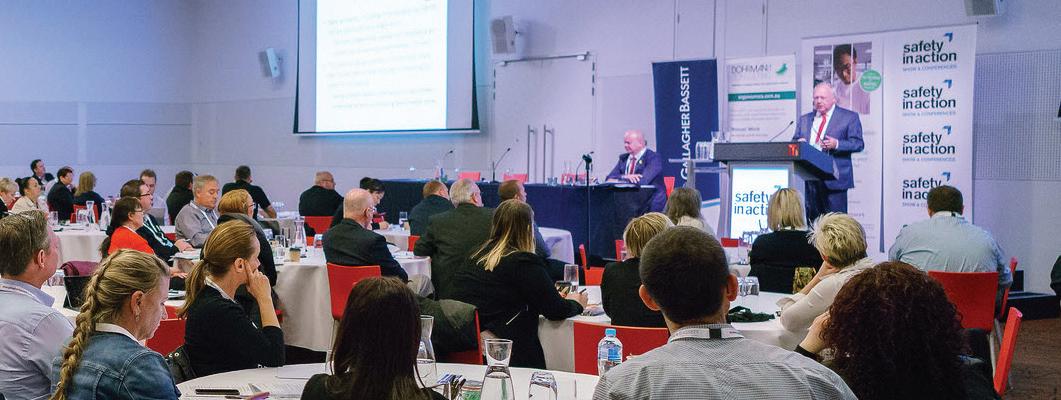
SAFETY IN ACTION

Having served the industry for more than 16 years, Safety in Action is a celebration of all things OHS.
The event includes:
♦ A large-scale exhibition anticipating the attendance of 3,500 industry professionals
♦ FREE informative seminars on the exhibition floor within three Safety Zones: Major Projects, Mental Health and Well-being, and Innovations
♦ Three co-located premium conferences focusing on safety strategy, leadership and culture, workplace wellness and return to work
Safety in Action Exhibition Director, Josko Kazija, said the safety landscape is changing, and so is Safety in Action.
“We have evolved to include even more choices and features for our attendees, and we are confident of the positive experience they will have with us – benefitting from the quality of exhibitors and speakers, sharing their innovative product/service and expertise at this two-day gathering.”
The 2018 Safety in Action Show and Conference welcomes work health and safety leaders from diverse industry sectors including government, healthcare, construction and engineering, transport, mining, utilities and more.
The exhibition will showcase 80+ exhibitors delivering the latest technology, innovative devices and management systems. Registration to the exhibition is free for trade professionals.
While the free exhibition seminars can provide visitors informative updates within the industry, the three co-located conferences will offer more in-depth analysis of key safety topics in focus. These co-located conferences include:
THE SAFETY IN ACTION CONFERENCE
As the premier conference of the year, the Safety in Action Conference brings together safety leaders in the health and safety profession, to encourage global involvement and networking across the two days.
THE WORKPLACE WELLNESS CONFERENCE
This year’s program will hear from industry leaders identifying strategies to enhance the mental and physical wellbeing and productivity of the Australian workforce. From state initiatives to stress management and promoting healthier lifestyles, this conference will focus on the best-practice case studies in mental health and well-being.
THE RETURN TO WORK CONFERENCE
This year’s program will look into best practice strategies that support employees through the process of rehabilitation and manages their return to the workplace in a timely and safe manner.
Delegates will be able to switch between the three conferences to attend the sessions that are most suited to their needs.
September 2018 // Issue 8 www.infrastructuremagazine.com.au 64 SAFETY AND RISK MANAGEMENT // PARTNER SOLUTIONS
For more information about Safety in Action and to register, please visit www.safetyinaction.com.au
Australia’s premier Workplace Health and Safety event, Safety in Action, returns to Sydney on the 9th and 10th October 2018 at the Sydney Showground.

CELEBRATION OF ALL THINGS OHS
– Join Australia’s longest running occupational health & safety event - Safety in Action has been serving the industry for over 16 years!
– A large scale exhibition anticipating the attendance of 3500 industry professionals
– FREE informative seminars on the exhibition floor within three Safety Zones: Major Projects, Mental Health and Wellbeing, Innovations
– Three co-located premium conferences focusing on Safety Strategy, Leadership and Culture, Workplace Wellness and Return to Work


REGISTER YOUR FREE TRADE PASS AT: www.safetyinaction.com.au
Showground
9–10 OCTOBER 2018 Sydney
A
REGISTRATION DESK SPONSOR COFFEE CART SPONSOR TECHNOLOGY SPONSOR CONFERENCE LANYARD
SPONSOR
OVERHAULING CONSTRUCTION SAFETY CULTURE
While the very meaning of the word ‘consultation’ denotes discussion, a recent review of safety culture in the ACT’s construction industry found that workers feel consultation is a one-way conversation – particularly when it comes to workplace health and safety matters. New legislation has passed the ACT Assembly that will see significant changes to consultation, training and election of committees from January 2019.
The Work Health and Safety Amendment Bill 2018 is just one aspect of the ACT Government’s multifaceted approach to improve safety in the ACT’s construction industry, but one that is expected to have a considerable impact.
The new amendments to the Work Health and Safety Act 2011 seek to ensure that employers take greater responsibility for both training and consultation, with three specific requirements for the principal contractors of major construction projects in the ACT:
♦ Mandatory consultation with workers and their representatives when establishing work groups
♦ Mandatory election and training of Health and Safety Representatives (HSR)
♦ Mandatory election of Health and Safety Committees (HSC) and training for members
A PROBLEMATIC APPROACH TO SAFETY
Despite showing improvement in safety and health culture awareness since the 2012 Getting Home Safely report, the ACT still has the highest serious injury rate of any state or territory in Australia.
The 2012 Getting Home Safely report was published following an inquiry into work health and safety (WHS) in the ACT, making 28 recommendations for cultivating a safer construction industry. In 2017, the ACT Government engaged RMIT University to undertake a review, not only to gauge the effectiveness of changes implemented as a result of the Getting Home Safely report, but also to build a baseline understanding of the ACT construction industry’s WHS culture. Using qualitative and quantitative research, a baseline safety climate survey was undertaken using a WHS climate assessment tool, developed specifically for the construction

industry. The report cites that a total of 417 valid responses were received from participants employed by companies of various sizes and engaged in different sectors of the ACT construction industry. The majority of these participants were frontline construction workers.
RMIT’s recent review identified several areas of concern within WHS culture, including inconsistent practices across job sites and workers’ concerns over a lack of proper consultation on major projects.
“According to the RMIT review, perceptions of WHS culture differ – with upper-level managers most positive about the existing approach, and frontline workers the least positive – so clearly there is a disconnect,” an ACT Government spokesperson said.
A NEW TRAIN OF THOUGHT
With the new amendments incorporating the mandatory election and training of Health and Safety Representatives, and Health and Safety Committees on all major ACT construction projects, the entire workforce is expected to gradually upskill, with incidents expected to drop as a direct result.
The RMIT review reported that the training and supervision of apprentices was of notable concern. According to an ACT Government spokesperson, upskilling of all workers, including trainees, will happen by building a common body of knowledge that workers can take with them to their future jobs
SAFETY AND RISK MANAGEMENT
66

67 SAFETY AND RISK MANAGEMENT

“Making employers responsible for the WHS knowledge and competency of their workers will facilitate more meaningful WHS consultations and will ultimately benefit employers via reduced safety incidents,” the spokesperson said.
The new legislation includes the introduction of two types of training courses for Health and Safety Representatives: an initial five-day course which teaches them their powers and functions under the WHS Act, and a one-day refresher training course to be taken annually.
While Health and Safety Committees already exist within WHS law, the new amendments relating to committees make training for members mandatory if the HSC represents a major construction project. A training course will be developed specifically for HSC members, and will take no less than four hours to complete.
In accordance with the new WHS legislation, WorkSafe ACT will act as a regulator to approve the training course and the organisations permitted to conduct the training.
THE CAUSE AND EFFECT
As well as citing differing perspectives and lack of consultation as key problems, workers also referred to instances where they felt pressure to ‘get the job done’, proving detrimental to both health and safety.
The new amendment bill is therefore litigating the development of a more consistent approach to safety
consultation on major construction projects.
“The changes recognise that the effectiveness of our WHS legislation depends on our ability to be dynamic and responsive to the experience of our workers,” the spokesperson said.
With the RMIT report also identifying mental health issues as an area of concern, the responsiveness of the ACT Government to the experience of its construction workers is an important commitment, not only to workers’ physical well-being, but their well-being as a whole.
The ACT Government expects the outcome of the new legislation to be tangible, with knowledge amongst workers increasing and employers taking on increased responsibility for competency.
“Making employers responsible for the WHS knowledge and competency of their workers will facilitate more meaningful WHS consultations and will ultimately benefit construction workers and employers via reduced safety incidents,” the ACT Government spokesperson said.
INDUSTRY RESPONSE
The amendments have been developed with workers and employers in mind, but also in consultation with industry groups, employers in the construction and infrastructure sector, and stakeholders, such as the tripartite Work Safety Council.
September 2018 // Issue 8 www.infrastructuremagazine.com.au 68 SAFETY AND RISK MANAGEMENT

In order to provide the best outcome for these parties, a consultation paper on the amendments was released in April 2018, with mixed responses.
“While the ACT Government acknowledges that some concerns have been raised, it believes the amendments strike the right balance. One serious incident safety on a worksite is too many,” the spokesperson said.
TIME TO PREPARE
With the new amendments scheduled to come into effect on 1 January 2019, it’s not too early for employers in the ACT infrastructure and construction industry to get prepared. The ACT Government, in coordination with WorkSafe ACT, encourages these employers to begin the process of electing and training HSRs and HSCs.
“WorkSafe ACT will proactively engage with the sector to ensure employers are aware of their responsibilities, to approve training courses, and to disseminate information about the training available,” an ACT Government spokesperson said.
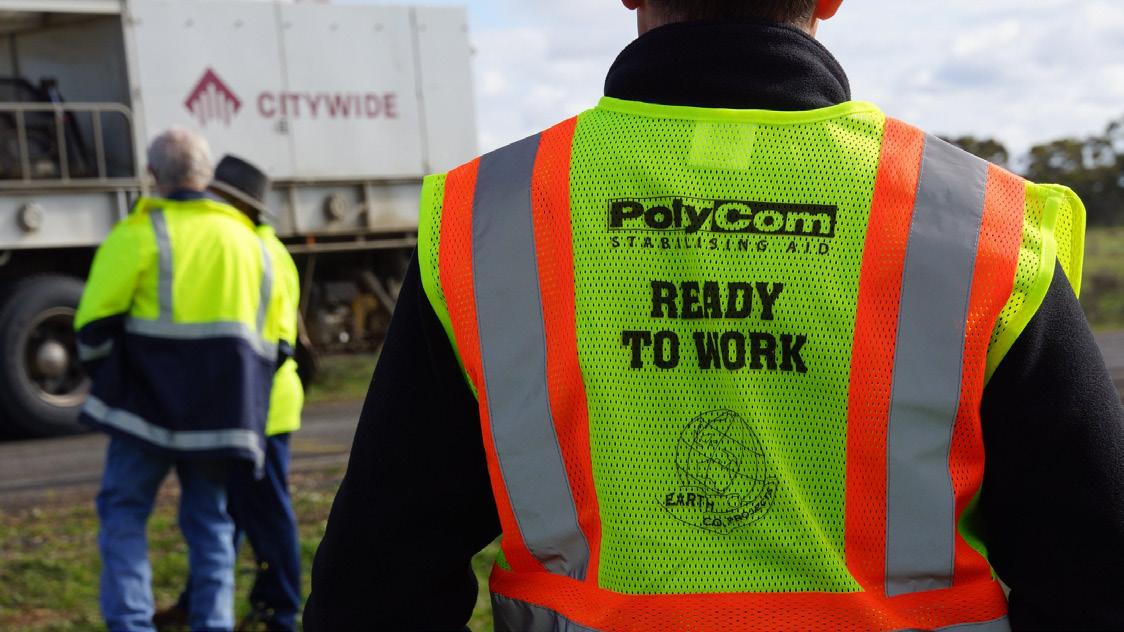




www.infrastructuremagazine.com.au September 2018 // Issue 8 69 SAFETY AND RISK MANAGEMENT
R O A D S T A B I L I S A T I O N A U S T R A L I A N I N N O V A T I O N Field Proven - 15 years Phone 1800 790 907 www.roadmaker.com.au ASSET MANAGEMENT FOR THE FUTURE
Sealed and Unsealed Road
REDUCING DOWNTIME WITH GPS AND 3D MACHINE CONTROL

Brendan Walsh, Director, Ground Technique, said the Topcon 3D GPS+ system has allowed the company to have no people on the ground, meaning they can use smaller excavators if required because they’re now much more efficient.
“It also means there’s no human error. The only human error will come down to the surveyors and designers and you’re always going to have surveyors and designers involved. There’s a lot less material coming out because you’re pulling out only the exact amount.”
SELECTING THE MACHINE CONTROL SYSTEM
For this project, Mr Walsh had considered a rover on the ground but was concerned about the downtime.
“Often blokes forget to charge batteries on those things so there’s a lot of downtime,” Mr Walsh said. “Number two, someone has to read the screen and interpret it, and in the meantime the operator is sitting there waiting.”

Brendan Walsh and his team at Ground Technique have been working on a 20lot Tran Civil development in Diamond Creek, Victoria. This project is on a large sloping block that is very undulating and requires a substantial amount of cut and fill. To complete this project, Mr Walsh installed the Topcon 3D GPS+ machine control from Position Partners on his Hitachi Zaxis 13-ton excavator.
Mr Walsh was also interested in a 3D system over a 2D system because it meant his team didn’t need to re-bench the equipment each time they moved the machine.
“The screen on the new system in particular is very big and easy to see, and because it is 3D it’s plug-andplay essentially once the machine’s loaded,” Mr Walsh said. “There’s no recalibrating once the machine moves. With a convention 2D system every single time you move the machine you have to re-bench the machine.”
EXPERIENCING THE BENEFITS
Prior to implementing the Topcon 3D GPS+ 3D machine control system, Ground Technique would have used the string line, lots of spray paint, lots of pegs, a surveyor on the ground, more people and a lot of interpreting plans. Mr Walsh said he’s seen many benefits since implementing the Topcon system, including increased efficiency and site safety.
“Obviously, efficiency is the main benefit, minimising the people on the ground so it keeps things safe as well. Safety is a big one on these job
sites and the lack of human error,” Mr Walsh said.
Another benefit that Mr Walsh has seen since is access to Tokara Link, an Australian-designed telematics solution created specifically to improve efficiency and productivity for earthworks and civil construction projects.
Using a modem installed in the machine, Tokara Link connects your machines to the office, provides access to Position Partners' technical support and links you to any GPS network required for the job.
“When I have the Tokara Link fired up on the GPS, I also have Bluetooth on my phone so when I’m talking to the support network down in Dandenong there, I can literally keep moving my digger and excavating while I talk to them over the phone, while I watch them play around on the screen that I’m looking at, all at the same time.
“I can watch them, what they’re doing and they can talk me through what they’re doing so it makes training really efficient.”
70 SAFETY AND RISK MANAGEMENT // PARTNER SOLUTIONS


Buy 2x Topcon 3D machine control kits for: Return airfare & accommodation
Exclusive Topcon Events
Ticket to BAUMA 2019
Quick facts:
• BAUMA 2019 in Munich, Germany
• Trip/show dates are 7-14th April, 2019
• Promo starts July 1 until all 20 seats on the plane are full
• First 20 customers to purchase 2 x full 3D machine control systems at RRP pricing will win:
- 1 x economy airfare from Australia to Munich, Germany
- Transfers to/from airport in Germany

- 7 nights accommodation at the Novotel Munich City
- 7 day BAUMA 2019 show pass
- Access to exclusive Topcon and Position Partners events throughout the week
- Terms and Conditions apply, see website for details*
Get in touch today: info@positionpartners.com.au www.positionpartners.com.au Australia • New Zealand • SE Asia 1300 867 266 YOUR TICKET TO MUNICH IS ON US!
SELECTING THE RIGHT FOUNDATION FOR GROUND-MOUNTED PV PANELS

Selecting the right foundation for a ground-mounted solar PV installation is critical for its success as the use of an incorrect foundation can result in premature refusal, costly change orders and project delays. Selection should be based on a geotechnical study of the project area to determine the best option. Here, we will look at the different types of foundation, and how to select the right one for your installation.
Jeff Lawson, National Construction Equipment Sales Manager at Vermeer, said there are four main types of foundation that can be used for ground-mounted solar PV systems.
“There are four major types of foundations that are commonly used: helical piles, earth-screws, ballasted foundations and driven piles,” Mr Lawson said.
“When selecting a foundation type, and the machinery that will be used to install it, it is important to understand the positives and negatives of each type of different ground condition.
“For example, areas with loose sand and a high water table or low soil cohesiveness require the foundation to be embedded at a greater depth so a helical pile or ballasted foundation would be the best choice.
“However, in areas with harder, more difficult terrain, earthscrews and ballasted foundations are better.
“Driven piles on the other hand are best suited to areas with good soil cohesiveness and low water tables.”
Helical piles
Helical piles are best suited to areas where soil cohesion is poor as they are easily installed using auger attachments on excavators or other equipment that can rotate it into the ground. Once installed, they act as an anchor and lock the structure into the soil.
They require only a small amount of earth to be dug out, so contractors can save time and money. They also have minimal environmental impact as there is little noise pollution and little to no ground movement.
A pull test needs to be done before installing helical piles to determine the embedment depth and ensure there is enough resistance to satisfy the load requirements of the PV support structure.
Earth-screws
Earth-screws can be installed by pre-drilling holes into the ground before they are screwed in using excavators and other equipment which use auger attachments. They can also be installed straight into the ground if there are no refusal issues.
Earth-screws can have a higher cost of installation than other foundation types if a separate machine is needed to be brought in for pre-drilling.
Ballasted foundations
Historically, ballasted foundations have been more expensive than driven or screwed foundations, however over
September 2018 // Issue 8 www.infrastructuremagazine.com.au 72 ENERGY INFRASTRUCTURE // PARTNER SOLUTIONS

time prices have declined and they have become a more viable option. They are particularly suited to areas where there is a high refusal rate and low soil cohesiveness, where helical pile and earth-screws are not as effective.
However, ballasted foundations have some limitations, especially if the area is sloped or uneven as there are extra calculations that need to be made to accommodate the slope and relative change. Soil settling, erosion and heaving also need to be taken into account before installation as ballasted foundations can be subject to stresses from soil movement.
Driven piles
Driven piles are best suited to areas which have clay, gravel, dense sand and low water tables, where the ground has good soil cohesiveness. They are commonly used on large-scale projects as they have a number of advantages over other foundation types, including speed of installation, accuracy, lack of cure time and low cost.
While driven piles are a cost-effective option for large-scale projects, they may not be the best option for small-scale systems as specialised equipment needs to be used, equating to a higher cost per unit.
EQUIPMENT DRIVING DOWN COSTS
“Driven piles are commonly used in Australia on large-scale solar PV projects due to their suitability to ground conditions
and their low cost. One of the key factors reducing the cost of driven piles construction methods and making them considerably cheaper than other foundation types is the availability of highly sophisticated equipment,” Mr Lawson said.
“Equipment such as Vermeer’s PD10 pile driver has a number of features which can help drive down project costs and make contractors more competitive.
“The PD10 partners with leading GPS guidance systems to increase efficiency and productivity while an incolmeter with auto-plumb and laser-controlled post-depth-control feature ensures every pile is installed accurately.”
Mr Lawson said that features such as these, which increase accuracy, are important for ground-mounted solar PV systems as the piles need to be driven into the ground at precise levels no matter the ground conditions.
“The piles need to be installed correctly as they provide the foundation on which the solar panel systems will be built.
“That’s why machines like the PD10 are important for largescale projects, because it not only eliminates the guesswork but does so consistently.
“The foundation forms the backbone of a solar mounted PV system so it’s important to not only select the right foundation type for the prevailing ground conditions, but to also choose a contractor with equipment that increases productivity and keeps project costs low.”
www.infrastructuremagazine.com.au September 2018 // Issue 8 73 ENERGY INFRASTRUCTURE // PARTNER SOLUTIONS
THE ENERGY TECHNOLOGY THAT COULD OVERHAUL TRAM SYSTEMS
The Rail Manufacturing Cooperative Research Centre (CRC) has collaborated with CSIRO and the China Railway Rolling Stock Corporation (CRRC) to build a prototype energy management system that has the potential to replace overhead electricity lines and could possibly overhaul current light rail power systems.
The traditional method of powering trams is via overhead electricity lines, known as a catenary system. However, the catenary system poses a number of problems including its high cost, expensive maintenance program and its vulnerability to faults which, if they occur, can have a significant impact on the surrounding environment and can be hazardous.
An alternative energy management system prototype has been built at CSIRO’s Lindfield site in Sydney that is catenary-free. The system uses an onboard energy storage system to power the trams and this first full-sized prototype uses supercapacitors to power light rail tram vehicles.
CSIRO’s Electrical Machines Team Leader, Dr Howard Lovatt, said,
“Eliminating the need for overhead electricity lines allows greater design flexibility thanks to fewer limitations on tram vehicle heights.
“It also means a reduction in infrastructure construction and maintenance costs, and the ability to store energy from regenerative braking back into the supercapacitors, which can further be used to power the tram.”
INNOVATION IN ACTION
CSIRO has partnered with CRRC on a suite of supercapacitor projects being overseen by the Rail Manufacturing CRC, an Australian Government Business Cooperative Research Centre program that connects industry with Australian research institutions.
The energy management system currently being tested aims to eliminate
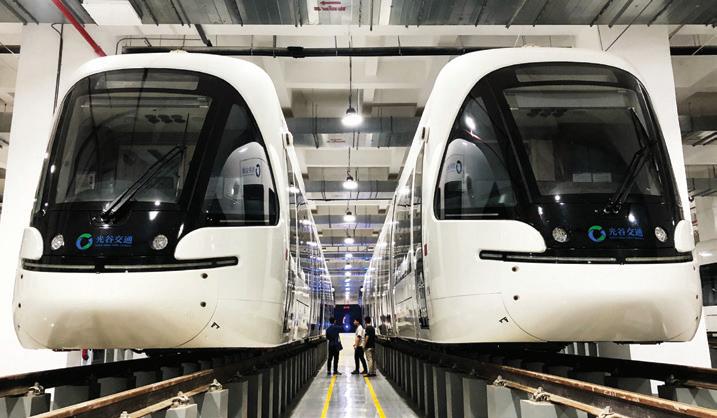
the catenary system by charging the vehicles when they are stopped at platforms.
Dr Larry Jordan, Research Director at Rail Manufacturing CRC, said when the tram is coming into the station, the vehicle communicates with the platform via a wireless telecommunications link.
“When the tram stops, its onboard supercapacitors are charged until the tram is ready to leave or the supercapacitors are full. Supercapacitors enable the trams to travel between platform stops, and potentially don’t even need to charge at every stop.”
Many different types of energy storage were considered and small prototypes of a few options were tested before the final supercapacitor prototype was decided.
“The characteristics that made the chosen supercapacitors ideal were a combination of a good life time, purchase price, size and weight. All these factors had to be weighed up for the competing solution,” Dr Lovatt said.
COMPETING WITH THE CATENARY SYSTEM
This catenary-free prototype offers many benefits over its traditional counterpart. Dr Jordan said the supercapacitors in the energy management system are capital cost effective when compared to the cost of the overhead wires in many of the scenarios studied.
September 2018 // Issue 8 www.infrastructuremagazine.com.au
74 ENERGY INFRASTRUCTURE
An example of trams using energy management systems
“Supercapacitor-powered trams are likely more reliable, with a long service life and end-of-life timeframe that is easily predicted, monitored and serviced via a standard maintenance schedule,” Dr Jordan said.
“Overhead lines are unsightly, more vulnerable to trees falling and other unplanned occurrences such as vehicles hitting support poles or over-height trucks hitting the wires. High voltage, live wires coming down are potentially hazardous, while supercapacitors are relatively benign in comparison and are safe if punctured or crushed in an accident.”
If the rail industry went catenary-free, it could also have the potential to impact what rail and transport infrastructure is built.
“In addition to aesthetic, maintenance and safety concerns with overhead powerlines, there’s also the consideration around infrastructure power management, where powering trams via supercapacitors would have a different requirement for how power is drawn down, compared to the traditional overhead lines’ electricity load,” Dr Jordan said.
“I think many more cities will want a light rail if they don’t have to have the wires,” Dr Lovatt added.
CURRENT TESTING AND MANUFACTURING
The prototype unit has been transported to China with the CRRC project team now working to manufacture the design.
On a working tram, it is expected that each vehicle will require numerous energy storage units, which could provide many benefits for the rail industry.
“The prototype was made for Chinese rail manufacturer CRRC who are the rail experts who analyse the economic case, know about typical installation and have contributed to the engineering in a fruitful partnership,” Dr Lovatt said.
CRRC is also already a major supplier of trains and trams to Australia.
Dr Jordan said the testing phase is focused on determining the reliability of the supercapacitors, confirming charge and discharge times and energy density, and testing the communications and software systems used to support the unit.
“At the specially-built full-scale test facility in China, the system can be tested at full power, which will identify how the scaled-up technology performs,” Dr Jordan said.
Initial project deliverables focused on developing the system architecture for cell balancing, charge and discharge profiles,


and communications between the onboard system and the platform using commercially available supercapacitors which, unlike batteries, have the ability to charge and discharge very quickly for potentially 100,000 cycles.
To help make this technology commercially viable, the project has looked to enhance the performance of the energy management system that powers the supercapacitors. This has been done by reducing the unit’s weight, increasing the number of charge cycles and increasing the speed to charge and discharge the supercapacitors.
IMPLEMENTING THE TECHNOLOGY IN AUSTRALIA
With a number of countries around the world now looking into the potential of using supercapacitors to power rail, Dr Jordan said there are hopes that the prototype technology can eventually be used in Australia.
“This project has real potential to be applied locally as both CSIRO and CRRC have the right to commercialise this technology in Australia. Further investigation of this technology in Australia is reliant on interest from state governments, tram manufacturers and construction businesses to test and validate the benefits of using this technology,” Dr Jordan said.
“Rolling out an entirely new power solution takes time and money, so for now the focus is on developing and proving the technology before next steps are considered.”
Rail Manufacturing CRC’s CEO, Dr Stuart Thomson, said this project was an example of how developing new technologies and knowledge is enhancing the rail manufacturing industry’s competitiveness.
“This project is a truly global collaboration which demonstrates the benefits of multinational organisations working with leading Australian research institutions,” Dr Thomson said.
Mr Chen Kai, Deputy General Manager of CRRC Qingdao Sifang Rolling Stock Research Institute, said, “Thanks to the collaboration with CSIRO since 2014, CRRC SRI has improved the technology of the traction system for catenary-free railway.”
CSIRO will continue to consult with CRRC on developing a full-scale system test in an effort to assess the commercial feasibility of the technology which will conclude by the end of 2018. Following this, CRRC and CSIRO can work to determine commercialisation or manufacturing opportunities for the supercapacitor technology moving forward.
www.infrastructuremagazine.com.au September 2018 // Issue 8 75 ENERGY INFRASTRUCTURE
An energy management system built by CRRC in China, based on the prototype technology delivered by CSIRO.
LET’S GET CONNECTED – IMPLEMENTATION OF THE CIVIL SKILLS CADETSHIP (CSC) PROGRAM
by Sonya Casey, Civil Skills Workforce Development Manager, Civil Contractors Federation (CCF).
CCF Victoria, in collaboration with the civil construction industry and RTO/TAFE partners has begun implementation of the CSC Program. The construction sector accounts for almost 240,000 jobs and 8.2 per cent of Victoria’s workforce. The civil construction industry contributes $21.6 billion annually to the economy and is vital to Victoria’s future.
The Victorian State Government announced a $1.925 million investment under its Workforce Training & Innovation Fund (WTIF), Skills First initiative, towards the development and delivery of a new Civil Skills Cadetship (CSC) Program. The successful WTIF grant funding, demonstrates the State Government’s confidence and commitment for CCF Victoria to drive the rollout of the CSC Program to support skills development for the civil construction industry.

WHAT’S IN IT FOR EMPLOYERS?
What does the civil construction industry want? Skilled entry level workers who work safely
When do we need them? Yesterday.
CCF Victoria is developing and refining the structure and content of the CSC Program. It is working with the CSC Industry Working Group to ensure the learning activities, case studies, workplace assessment projects, including the integration of technology platforms reflect the skills development needs of current and future civil construction workers. The CSC Program will be delivered over a two year period targeting 120 cadets seeking a career in civil construction.

The CSC Program is founded on cross industry and selected core nationally endorsed units of competency. These units are clustered into theme areas, supported with learning experiences and assessment requirements, reflect the realities of entry level work tasks carried out on a civil construction site. It is a capacity development opportunity for all stakeholders involved: targeted participants, Civil Industry Mentors, Lead Facilitator, Registered Training Organisations and TAFE, including relevant Victorian Government departments. The CSC Program puts the learner/participant at the center of the program. Learner(s) support, relationship building and practical experiences at the actual workplace site provides participants with the entry level skills needed to hit the ground running.
We acknowledge the urgency to rollout meaningful and relevant skills development programs for the civil construction sector. The implementation of the CSC Program is in response to the lack of supply of entry level employees who are both suitable and ready to work in the civil industry.
The CSC program will assist tier one and subcontractors to meet workforce demands in order to achieve infrastructure contract deliverables. Major infrastructure projects, valued over $20 million, are expected to meet a requirement that ten per cent of those employed are represented as apprentices. This requirement is being filtered down to subcontractors.
HOW DOES IT WORK? WHAT OPTIONS ARE AVAILABLE?
The CSC Program is built using a four staged approach. This approach provides opportunities for participants to exit at each stage into a subsector of civil construction or into an alternative career.
An important development feature of the CSC Program is at Stage One: Recruitment and Selection. Traditionally, the recruitment process, for a participant(s), has not been an entry point for training in the past. Training providers are usually engaged in careers information sessions and broad careers advice.
September 2018 // Issue 8 www.infrastructuremagazine.com.au 76 SKILLS AND TRAINING
Representatives of CCF Victoria, Gordon Tafe and Local MP Christine Couzens come together to announce State Government grant funding for CSC Program.

A snapshot of exit points in the program.
Stage One
Formalises the career decision-making process with the findings of a career assessment technology platform, BrilliantFit. This approach aligns to encouraging the participant to own their career decisions and individual capacity development program.
Stage Two
Builds on a conservative approach to vocational training and education through the selection of cross industry units of competency.
Stage Three
The Certificate III in Civil Construction, core units of competency are facilitated at Stage Three. The CSC Program has built into its design, strong foundation skills, such as literacy and numeracy skills, which are also important for entry level workers in the civil construction sector.
Stage Four
Stage Four incorporates Civil Industry Mentoring, to support participants as they enter into a career in civil construction as an apprentice.
The modes of delivery include video and workplace assessments to reinforce techniques, concepts and workplace practices. Pivotal to ensuring the CSC Program stimulates interest and positive experiences, the integration of civil mobile plant equipment simulators and virtual reality training opportunities to assist with ensuring participants are ready to safely and confidently operate entry level equipment, such as a skid steer and excavator. The design of the program is not new, however, within the context of training in the civil construction industry, this is an innovative approach.
The approach of the CSC Program provides an opportunity for participants to also exit at all stages. If a participant decides to exit at any of the stages, this can be considered successful with foundation skills developed being transferable within employment.
It is widely acknowledged that training delivery that ensures relevant industry content, two-way communication, active participation in learning activities, self-directed
and supported learning are more likely to ensure positive experiences for participants.
This program is led and endorsed by the civil industry, incorporates support structures for participants, including industry mentors. Collaboration between industry and the training system is crucial for developing a dynamic and skilled workforce, the CSC Program is centered on what industry needs to meet the workforce demands to deliver critical major infrastructure projects in Victoria.
The CSC Program will lead the shift from traditional approaches associated with the delivery of civil construction training, to connecting job seekers, industry employers, industry mentors, learning support advisers, facilitators/ assessors and industry specialists, to develop the entry level skills needed. A job seeker who becomes employed, in a role that fits their capacity and capability, changes the lives and future possibilities and connections of children, partners, friends, family and community.
If you’re an employer seeking entry level staff, or are interested in starting a career in the civil construction industry and would like more information on how to get involved with the CSC Program, contact the CCF team on 03 9588 7600.
ABOUT CIVIL CONTRACTORS FEDERATION (CCF)
Civil Contractors Federation (CCF) is a peak industry body representing Australia’s civil construction industry with more than 2,000 contractor and associate members nationally and over 520 of these based in Victoria.
CCF Members are responsible for the construction and maintenance of Australia’s infrastructure, including roads, bridges, pipelines, drainage, ports and utilities. Our members also play a vital role in the residential and commercial building industry by providing earthmoving and land development services, including the provision of power, water, communications and gas.
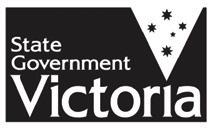
www.infrastructuremagazine.com.au September 2018 // Issue 8 77 SKILLS AND TRAINING
The CCF CSC Program is supported by the Victorian Government.
ACCELERATING SUSTAINABILITY THROUGH INFRASTRUCTURE

This year, infrastructure investors, procurers, asset owners and key delivery partners will gather to Accelerate Positive Change for People and Planet.
This year there is an exciting lineup of speakers, including the sustainability manager from London’s $26 billion Crossrail project, the CEO of Canadian Hyperloop company TransPod, Sebastien Gendron, and the President of the United Nations of Australia, Michael G Smith.
Local and global leaders will explore the most important issues, lessons learned and share exemplar case studies for infrastructure solutions that meet societal needs for the long term, as well as ensuring that any investment in infrastructure leads to increased liveability, equity, sustainability and low carbon outcomes.
Ainsley Simpson, CEO of ISCA, said, “We know that sustainable infrastructure connects societal and ecological communities, enhances economic productivity and inclusivity as well as enables our transition to a low carbon economy.
“With infrastructure being responsible for more than half of Australia’s greenhouse gas emissions, and one of the largest employers in Australia, the opportunity to make a positive impact for people and planet is monumental. The infrastructure industry is a critical driver in helping Australia reach its United Nations Sustainable Development Goals.”
The Infrastructure Sustainability rating scheme (IS) is an industry-led initiative, which many Australian government agencies have mandated as part of their procurement policies to drive better outcomes. ISCA, a member-based not-forprofit, is the peak industry body for advancing sustainability outcomes in infrastructure with a strong presence in Australia and a growing presence in New Zealand.
BENEFITS OF THE RATINGS SCHEME
Since the sustainability performance framework was developed for infrastructure in 2012, the IS rating scheme has been deployed on more than $97 billion worth of infrastructure spend across 86 projects in Australia and New Zealand. ISCA’s IS rating tool measures the impacts of these projects, which have collectively:
♦ Avoided 18.7 million tonnes of CO2-e; equivalent of powering the households of Brisbane for a year
♦ Reduced materials by 74 per cent, which has equivalent environmental benefit of diverting all household waste of Dunedin for two years
♦ Avoided enough water to fill 67,000 Olympic swimming pools
“Be inspired, be motivated and better equipped with the tools and knowledge that will help accelerate positive change
The
Infrastructure
Sustainability Council
of Australia (ISCA) Annual Conference and Gala Infrastructure Sustainability (IS) Awards night will be held in Sydney this year on 16–18 October.
for people and planet when you attend our annual conference,” Ms Simpson said.
Featuring global sustainability and infrastructure trends, the conference will be a platform to learn, connect and collaborate. As well as international keynotes, there will be expert panels on:
♦ Building better business cases
♦ Enabling city and regional resilience
♦ Sustainable smart cities and communities
♦ Resourcing for the circular economy
♦ Stimulating social procurement and supporting supply chains
♦ Infrastructure delivering the United Nations Sustainable Development Goals
As well as an Innovations and Impact workshop and site tour hosted by Platinum partners Transport for NSW.
NEW AWARDS AND ACKNOWLEDGEMENTS
Hosted by Logie-award winning comedian and star of Utopia, Dilruk Jayasinha, this year’s Annual Awards will also feature three new award categories; including an IS Emerging Young Leader Award to recognise the potential of the future leaders of this industry, and acknowledge the vitality and innovation that youth brings.
The IS Innovation & Impact Award recognises the project that has thought outside the box to deliver sustainable outcomes. ISCA has also separated the IS Outstanding Achievement award to include As Built and Design awards for highest scored projects in the past year. The Sustainability in Infrastructure Awards recognise and reward projects, assets, organisations and individuals who demonstrate leadership in advancing sustainable outcomes in infrastructure.
1. IS Organisational Leadership Award
2. IS Individual Leadership Award
3. IS Emerging Young Leader Award
4. IS Innovation and Impact Award
5. IS Outstanding Achievement Award – Design
6. IS Outstanding Achievement Award – As Built
“Our purpose at ISCA is to ‘accelerate sustainable change through collaboration’. We can only create industry-wide solutions by working together to enable positive outcomes,” Ms Simpson said.
Held at award-winning sustainability venues, Australian Technology Park and Doltone House Hyde Park, the conference and gala awards will bring together Australia and New Zealand’s current and emerging leaders in infrastructure and sustainability.
For more information and to register, visit www.isca.org.au.
September 2018 // Issue 8 www.infrastructuremagazine.com.au 78 EVENTS // PARTNER SOLUTIONS

YOU’VE JUST FOUND THEM. LOOKING FOR THE NUMBER ONE MARKETING AGENCY IN THE INFRASTRUCTURE INDUSTRY? Would you like to work with us? Get in touch and we’ll arrange a time to chat. Ph: (03) 9988 4950 Email: info@monkeymedia.com.au www.monkeymedia.com.au CONTENT MARKETING SEO DIGITAL DESIGN SOCIAL MEDIA GOOGLE ADWORDS WE ARE MONKEY MEDIA. Our team uses their industry-specific knowledge to help you reach your target audience. We can help you navigate:
FEATURES SCHEDULE
80 September 2018 // ISSUE 8 www.infrastructuremagazine.com.au ADVERTISERS’ INDEX Sustainability Smart infrastructure Mobility Earthmoving outlook Noise and vibration Investment and financing Asset inspection and drones/UAVS DISTRIBUTION TBA March 2019 Deadline: 22 February 2019 Bridges Signalling, tracking and control systems Rail Condition monitoring and maintenance Urban transport corridors Software, communications and connectivity Spatial & GIS Building and construction Public private partnerships Road surfacing and design DISTRIBUTION THE RTAA RAIL INDUSTRY FIELD DAY June 2019 Deadline: 10 May 2019
AGD Systems 37 AusRail 9 Corrosion & Prevention 51 Australian Airports Association 3 Australian Tunnelling Conference 17 Centre for Pavement Engineering Education..............................16 Earthco Projects 69 NSW Major Projects Conference 2018............................................13 Hard Metal Industries 49 Hydroflux Industrial OBC Infrastructure Sustainability Council of Australia (ISCA)...........78 Intelligent Transport Systems 32-33 NCEC IBC Port of Newcastle 63 Position Partners 71 Safety in Action 65 Simoco Wireless Solutions 14 Taylors 12 TM Systems 11 Vermeer IFC-1 Xplore Technologies 31 November 2018 Deadline: 5 October 2018 AusRail IoT & cloud communication Airports Construction standards and codes Land access Corrosion Security and critical infrastructure Landscaping and vegetation management DISTRIBUTION AUSRAIL AUSTRALIAN AIRPORTS ASSOCIATION CONFERENCE CORROSION AND PREVENTION September 2019 Deadline: 2 August 2019 Tunnels Energy infrastructure Ports Cranes and heavy lifting Concrete Safety and risk management Culverts Asset management Freight and logistics Intelligent Transport Systems (ITS) DISTRIBUTION TBA
NATIONAL CONSTRUCTION EQUIPMENT CONVENTION PROGRAM
Attend the National Construction Equipment Convention, Australia’s largest event for the civil engineering and infrastructure construction industry. The NCEC 2018 conference theme “Think Globally, Act Locally” will feature sessions including; Future Trends, Workforce Capability, On Site Safety, Environment, Skilled Labour Shortage and Technology Advancement.
AUSTRALIAN
FIRST CLASS SPEAKERS ANNOUNCED
PROGRESSES, WE’RE PROUD TO PARTNER WITH THE CONTRACTORS THAT ARE LEADING THE WAY FORWARD.







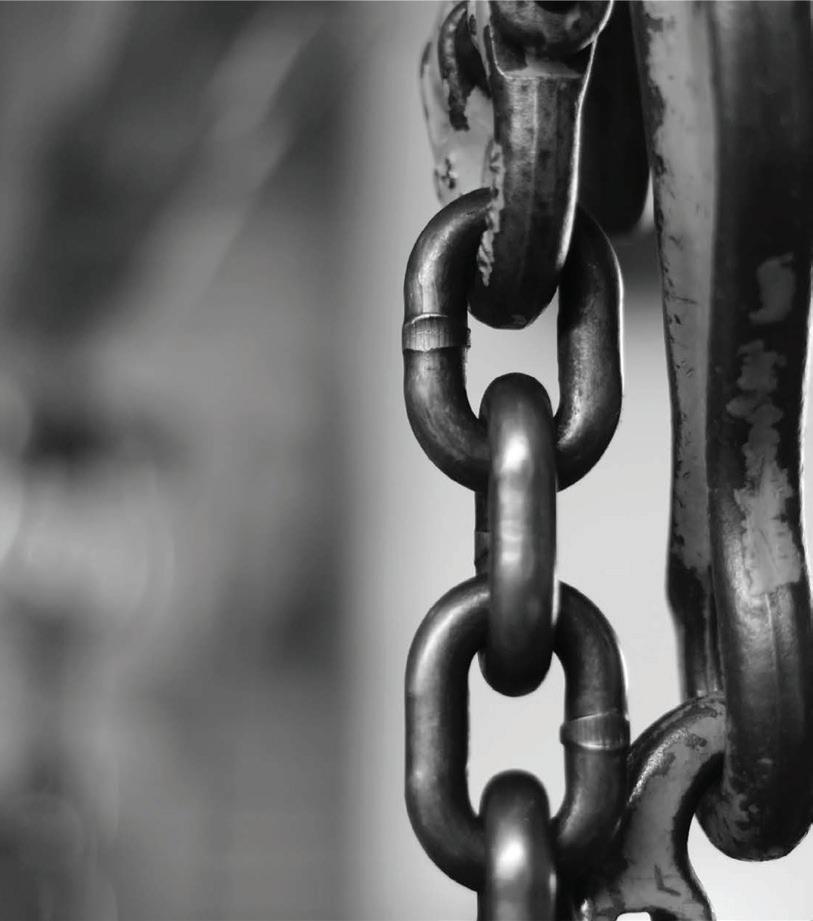
AS
Vermeer and the Vermeer logo are trademarks of Vermeer Manufacturing Company in the United States and / or other countries. © 2018 Vermeer Australia. All Rights Reserved. CONSTRUCTION EQUIPMENT SOLUTIONS FOR AUSTRALIA’S INFRASTRUCTURE INDUSTRY / VermeerAustralia VERMEER.COM.AU | 1300 VERMEER FREE EXHIBITION – REGISTER TODAY www . ncecaustralia.com.au
INFRASTRUCTURE
ROAD
REGISTER NOW
Deborah Keep, Director, Deborah Keep Human Centred Safety
Adrian Hart, Associate Director, BIS Oxford Economics Construction and mining Activity Outlook
Peter
Executive
Industry Capability
Todd
GM Construction Solutions Komatsu Best Practice in Construction Equipment I Smart Construction
CEO
Oz Skills Shortage and Training Requirements www . ncecaustralia.com.au
Dean Gaedtke, Executive GM-Construction Equipment, Komatsu Best Practice in Construction Equipment I Smart Construction
Webster,
Director
Network Project Pipeline
Connolly
Phillip Charlton
,Skills

WATER SCIENCE TECHNOLOGY





































































 David Millar CEO, Concrete Institute of Australia
David Millar CEO, Concrete Institute of Australia


























 by Anna Chau, Acting Chief Executive, Infrastructure Australia
by Anna Chau, Acting Chief Executive, Infrastructure Australia
























































 by Dr Allison Stewart – Project Director, Automated and Zero Emissions Vehicles
by Dr Allison Stewart – Project Director, Automated and Zero Emissions Vehicles













 by Ed Taylor, President, Australasian Tunnelling Society ATS, a technical society of Engineers Australia
by Ed Taylor, President, Australasian Tunnelling Society ATS, a technical society of Engineers Australia





















 by David Millar, CEO, Concrete Institute of Australia
by David Millar, CEO, Concrete Institute of Australia







 Dr Roberto Perez-Franco, Senior Research Fellow in Supply Chain Strategy, Centre for Supply Chain and Logistics, Deakin University
Dr Roberto Perez-Franco, Senior Research Fellow in Supply Chain Strategy, Centre for Supply Chain and Logistics, Deakin University



 by Mike Gallacher, CEO, Ports Australia
by Mike Gallacher, CEO, Ports Australia







































